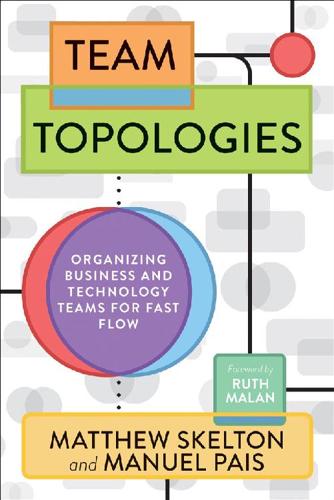
Team Topologies: Organizing Business and Technology Teams for Fast Flow
by
Matthew Skelton
and
Manuel Pais
Published 16 Sep 2019
If the team wants to send the same person to six or seven conferences during the year because they are so good at reporting back to the team, that should be the team’s decision. Good Boundaries Minimize Cognitive Load Having established the team as the fundamental means of delivery, organizations also need to ensure that the cognitive load on a team is not too high. A team working with software systems that require too high of a cognitive load cannot effectively own or safely evolve the software. In this section, we will identify ways in which the cognitive load on teams can be detected and limited in order to safely promote fast flow of change. Restrict Team Responsibilities to Match Team Cognitive Load One of the least acknowledged factors that increases friction in modern software delivery is the ever-increasing size and complexity of codebases that teams have to work with.
…
Specifically, that is why monoliths need to be broken down (in particular, any indivisible software part that exceeds the cognitive capacity of any one team) while keeping a team focus, a topic we will discuss in depth in Chapter 6. Cognitive Load and Bottlenecks When we talk about cognitive load, it’s easy to understand that any one person has a limit on how much information they can hold in their brains at any given moment. The same happens for any one team by simply adding up all the team members’ cognitive capacities. However, we hardly ever discuss cognitive load when assigning responsibilities or software parts to a given team. Perhaps because it’s hard to quantify both the available capacity and what the cognitive load will be. Or perhaps because the team is expected to adapt to what it’s being asked to do, no questions asked.
…
Restrict Team Responsibilities to Match Team Cognitive Load One of the least acknowledged factors that increases friction in modern software delivery is the ever-increasing size and complexity of codebases that teams have to work with. This creates an unbounded cognitive load on teams. Cognitive load also applies to teams that do less coding and more execution of tasks, like a traditional operations or infrastructure team. They can also suffer from excessive cognitive load in terms of domains of responsibility, number of applications they need to operate, and tools they need to manage. With a team-first approach, the team’s responsibilities are matched to the cognitive load that the team can handle. The positive ripple effect of this can change how teams are designed and how they interact with each other across an organization.
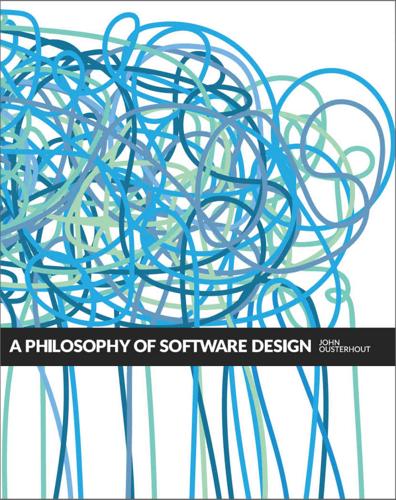
Philosophy of Software Design
by
John Ousterhout
Published 28 Jan 2018
One of the goals of good design is to reduce the amount of code that is affected by each design decision, so design changes don’t require very many code modifications. Cognitive load: The second symptom of complexity is cognitive load, which refers to how much a developer needs to know in order to complete a task. A higher cognitive load means that developers have to spend more time learning the required information, and there is a greater risk of bugs because they have missed something important. For example, suppose a function in C allocates memory, returns a pointer to that memory, and assumes that the caller will free the memory. This adds to the cognitive load of developers using the function; if a developer fails to free the memory, there will be a memory leak.
…
If the system can be restructured so that the caller doesn’t need to worry about freeing the memory (the same module that allocates the memory also takes responsibility for freeing it), it will reduce the cognitive load. Cognitive load arises in many ways, such as APIs with many methods, global variables, inconsistencies, and dependencies between modules. System designers sometimes assume that complexity can be measured by lines of code. They assume that if one implementation is shorter than another, then it must be simpler; if it only takes a few lines of code to make a change, then the change must be easy. However, this view ignores the costs associated with cognitive load. I have seen frameworks that allowed applications to be written with only a few lines of code, but it was extremely difficult to figure out what those lines were.
…
Similarly, a high cognitive load will increase the cost of a change, but if it is clear which information to read, the change is still likely to be correct. With unknown unknowns, it is unclear what to do or whether a proposed solution will even work. The only way to be certain is to read every line of code in the system, which is impossible for systems of any size. Even this may not be sufficient, because a change may depend on a subtle design decision that was never documented. One of the most important goals of good design is for a system to be obvious. This is the opposite of high cognitive load and unknown unknowns.

This Will Make You Smarter: 150 New Scientific Concepts to Improve Your Thinking
by
John Brockman
Published 14 Feb 2012
Rebecca Newberger Goldstein Inference to the Best Explanation Not all explanations are created equal. Emanuel Derman Pragmamorphism Being pragmamorphic sounds equivalent to taking a scientific attitude toward the world, but it easily evolves into dull scientism. Nicholas Carr Cognitive Load When our cognitive load exceeds the capacity of our working memory, our intellectual abilities take a hit. Hans Ulrich Obrist To Curate In our phase of globalization . . . there is a danger of homogenization but at the same time a countermovement, the retreat into one’s own culture.
…
In the 1950s, Princeton psychologist George Miller famously argued that our brains can hold only about seven pieces of information simultaneously. Even that figure may be too high. Some brain researchers now believe that working memory has a maximum capacity of just three or four elements. The amount of information entering our consciousness at any instant is referred to as our cognitive load. When our cognitive load exceeds the capacity of our working memory, our intellectual abilities take a hit. Information zips into and out of our mind so quickly that we never gain a good mental grip on it. (Which is why you can’t remember what you went to the kitchen to do.) The information vanishes before we’ve had an opportunity to transfer it into our long-term memory and weave it into knowledge.
…
Developmental psychologists and educational researchers have long used the concept of cognitive load in designing and evaluating pedagogical techniques. They know that when you give a student too much information too quickly, comprehension degrades and learning suffers. But now that all of us—thanks to the incredible speed and volume of modern digital communication networks and gadgets—are inundated with more bits and pieces of information than ever before, everyone would benefit from having an understanding of cognitive load and how it influences memory and thinking. The more aware we are of how small and fragile our working memory is, the better we’ll be able to monitor and manage our cognitive load.

Restarting the Future: How to Fix the Intangible Economy
by
Jonathan Haskel
and
Stian Westlake
Published 4 Apr 2022
We do not claim that we can predict the manifestations of the new culture that the new economy will call forth. But there may be some clues from cultures and parts of the world where the transition to intangible capital has gone the furthest. Specifically, it seems that the cognitive load on individuals has risen in the digital arena. But solutions to this challenge have arisen, often from the market itself; they include ad blockers, anonymous search engines, and price-comparison sites. Debt also keeps cognitive load low (in periods of no crisis), and so the returns to new financial innovation that will enable intangibles to be securitised will help. Finally, we saw that one institution is fit for purpose throughout the ages and over all the dimensions of exchange: trust and reciprocity.
…
; “What effect will the sharing of the upside and downside have on the way the thing is managed?”; and “Am I selling my shares too cheap?” For a debt investment, all you need to think about is “Do I think this guy is good for the money?,” and all the borrower needs to think about is “Can I pay this back?” Debt finance is useful because it reduces the cognitive load on both the lender and the borrower.6 Intangibles, Debt, and Collateral Debt finance creates a fundamental problem for an intangibles-intensive firm. It involves the creditor taking a charge on the debtor’s assets, to be invoked if the debtor cannot meet its financial obligations. But intangible assets are more likely to be sunk costs—worth little or nothing in the event the debtor business fails.
…
The Friedman Doctrine, named after a 1970 essay by Milton Friedman that argues “the business of business is business” rather than serving the needs of stakeholders, began growing in popularity in the 1980s and now represents the mainstream position on corporate governance, especially in the United States and Britain. The epitome of value-based management is activist hedge funds, which buy into the stocks of companies with unimpressive share price performance and try to force management to improve it. Value-based management is another example of a financial innovation that cuts down on cognitive load. It replaces a messy, embedded, judgment-based system with a simpler set of rules and a more clearly divided set of responsibilities. It is an innovation that harnesses a powerful force: if managers own stock or options, then shareholders can rely on the managers’ self-interest to motivate them to improve company performance: the interests of the principal and agent are better aligned.
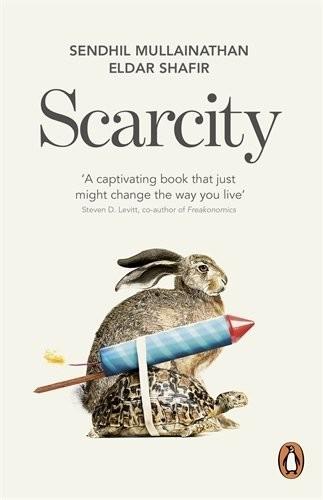
Scarcity: The True Cost of Not Having Enough
by
Sendhil Mullainathan
Published 3 Sep 2014
The challenge for the subjects was that this was served by a Chinese experimenter, creating some pressure to act civilized. As in the cake study, some subjects’ minds were loaded: they were asked to remember an eight-digit number. Those whose minds were not loaded managed to maintain composure, keeping their thoughts to themselves. Not so with the cognitively loaded subjects. They would blurt out rude comments, such as “This is bloody revolting,” despite their best intentions. Whether it is eating cake we would rather resist or saying things we do not mean to say, a tax on bandwidth makes it harder for us to control our impulses. And because scarcity taxes bandwidth, this suggests that scarcity not only can lower fluid intelligence but can also reduce self-control.
…
A taxed bandwidth leads to carelessness. The student forgets his study group meeting. The server rings up the wrong item. The bandwidth tax changes us in surprising and powerful ways. It is not merely its presence but also its magnitude that is surprising. Psychologists have spent decades documenting the impact of cognitive load on many aspects of behavior. Some of the most important are the behaviors captured in these vignettes: from distraction and forgetfulness to impulse control. The size of these effects suggests a substantial influence of the bandwidth tax on a full array of behaviors, even those like patience, tolerance, attention, and dedication that usually fall under the umbrella of “personality” or “talent.”
…
PARENTING One study on parenting focused on air traffic controllers. What made air traffic controllers interesting is that their jobs change daily and can be intense. Some days there are many planes in the air, weather conditions are bad, and there are congestion and delays. On those days the cognitive load—tunneling for long hours on landing all planes safely—is very high. Other days are more relaxed, with not many planes in the air or on the mind. What the researchers found was that the number of planes in the air on a particular day predicted the quality of parenting that night. More planes made for worse parents.
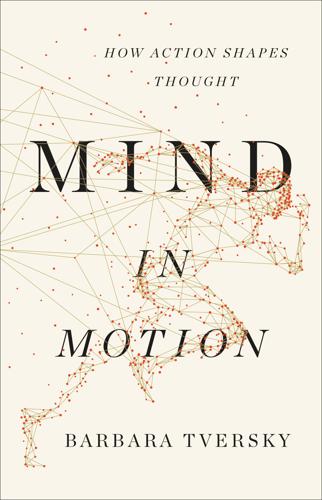
Mind in Motion: How Action Shapes Thought
by
Barbara Tversky
Published 20 May 2019
What matters are the movements in space, not what they look like. Surprisingly, gesturing while reading didn’t slow reading, even though people were doing two things at the same time. Doing two things simultaneously is supposed to increase cognitive load and lower performance. Not so for gesturing and thinking. Paradoxically, adding to the cognitive load reduced the cognitive load. Understanding the explanations was hard; it took effort to figure out where everything was. Words march one after another in horizontal rows; they bear only symbolic relationship to the environments. But the gestures resemble the environments, they put the places and paths in a virtual map step-by-step.
…
Taking your perspective rather than mine might be in part a matter of politeness, though Japanese people, members of the most stereotypically polite culture, take your perspective no more than Americans, about 70 percent of the time, depending on the circumstances. And that’s just it—whose perspective seems to depend on the circumstances, in particular, on the relative cognitive loads, yours and mine. In the case of the wine glass, I know whose is whose, but you don’t, so your cognitive load is greater than mine. You have to both understand the utterance and map it to the glasses; I know the mapping and only have to create the utterance. On the other hand, if my cognitive load is greater than yours, say, you know the answer but I don’t and I’m asking you, I’ll favor my perspective, “Is mine on my right?” If we are offered a neutral way to specify the location, neither your perspective nor mine, we’ll both prefer that one.
…
Gestures for self help solve spatial problems Jamalian, A., Giardino, V., & Tversky, B. (2013). Gestures for thinking. Proceedings of the Annual Meeting of the Cognitive Science Society, 35. Retrieved from https://escholarship.org/uc/item/0zk7z5h9 Tversky, B., & Kessell, A. (2014). Thinking in action. Pragmatics & Cognition, 22(2), 206–223. Gestures lighten cognitive load Cook, S.W., Yip, T., & Goldin-Meadow, S. (2012). Gestures, but not meaningless movements, lighten working memory load when explaining math. Language and Cognitive Processing, 27, 594–610. Goldin-Meadow, S., Nusbaum, H., Kelly, S. D., & Wagner, S. M. (2001). Explaining math: Gesturing lightens the load.

Behave: The Biology of Humans at Our Best and Worst
by
Robert M. Sapolsky
Published 1 May 2017
Pertinent to this is the concept of “cognitive load.” Make the frontal cortex work hard—a tough working-memory task, regulating social behavior, or making numerous decisions while shopping. Immediately afterward performance on a different frontally dependent task declines.45 Likewise during multitasking, where PFC neurons simultaneously participate in multiple activated circuits. Importantly, increase cognitive load on the frontal cortex, and afterward subjects become less prosocial*—less charitable or helpful, more likely to lie.46 Or increase cognitive load with a task requiring difficult emotional regulation, and subjects cheat more on their diets afterward.*47 So the frontal cortex is awash in Calvinist self-discipline, a superego with its nose to the grindstone.48 But as an important qualifier, soon after we’re potty-trained, doing the harder thing with our bladder muscles becomes automatic.
…
For example, for the same degree of implicit racial prejudice (as shown with the IAT), the bias is more likely to be expressed behaviorally in individuals with poor frontal executive control (as shown with an abstract cognitive task).63 Chapter 2 introduced the concept of “cognitive load,” where a taxing frontal executive task diminishes performance on a subsequent frontal task. This occurs with Us/Them-ing. White subjects do better on certain behavior tests when the tester is white as opposed to black; subjects whose performance declines most dramatically in the latter scenario show the greatest dlPFC activation when viewing other-race faces.64 The cognitive load generated by frontal executive control during interracial interactions can be modulated. If white subjects are told, “Most people are more prejudiced than they think they are,” before taking the test with a black tester, performance plummets more than if they are told, “Most people perform worse [on a frontal cortical cognitive test] than they think they did.”
…
As we’ll see, it comes from factors having little to do with cognitive style. These findings suggest that it’s easier to make a liberal think like a conservative than the other way around.35 Or, stated in a familiar way, increasing cognitive load* should make people more conservative. This is precisely the case. The time pressure of snap judgments is a version of increased cognitive load. Likewise, people become more conservative when tired, in pain or distracted with a cognitive task, or when blood alcohol levels rise. Recall from chapter 3 that willpower takes metabolic power, thanks to the glucose demands of the frontal cortex.

The (Honest) Truth About Dishonesty: How We Lie to Everyone, Especially Ourselves
by
Dan Ariely
Published 27 Jun 2012
To reduce participants’ ability to think effectively, Baba and Sasha did not remove parts of their brains (as animal researchers sometimes do), nor did they use magnetic pulses to disrupt thinking (though there are machines that can do that). Instead, they decided to tax their participants’ ability to think by piling on what psychologists call cognitive load. Simply put, they wanted to find out whether having a lot on one’s mind would leave less cognitive room for resisting temptation and make people more likely to succumb to it. Baba and Sasha’s experiment went like this: they divided participants into two groups and asked members of one group to remember a two-digit number (something like, say, 35) and they asked members of the other group to remember a seven-digit number (say, 7581280).
…
Abagnale, Frank, 173 academia: conflicts of interest in, 82, 84–85 financial services industry’s influence in, 84–85 group-based projects in, 217–18 pharmaceutical companies’ influence in, 82 academic credentials, misrepresentation of, 135–36, 153, 154 accounting firms: collaborative dishonesty in, 218–21 “in good faith” notion and, 219–20 Adam and Eve, 98 Adams, Mike, 107 advertising agencies, link between creativity and dishonesty in, 186–87 aesthetic preferences, impact of favors on, 75–77 Afghanistan War, 152 altruistic cheating, 222–23, 225–26, 232 supervisory effect and, 227–28 American Medical Association, 79 Amir, On, 15, 18, 31–32, 39, 262 Apple, 184 atheists, swearing on bible and, 40, 41, 42 Atlantic, 214–15 Austen, Jane, 154–55 Avnaim-Pesso, Liora, 102 Ayal, Shahar, 197, 225, 263 bacterial infections, 192–93 Balleisen, Ed, 188 bankers, cheating among politicians vs., 243 banks: small misbehaviors of, 240 see also financial services industry Barkan, Racheli, 21, 23, 262 Barlow, John Perry, 1, 2 baseball, steroids in, 156 Bateson, Melissa, 224 Baumeister, Roy, 100, 104, 262–63 Baylor College of Medicine, 75–77 Bazerman, Max, 45, 260 Becker, Gary, 3–4, 14, 26 Be’er Sheva, Israel, farmer’s market in, 23–24 being caught, probability of, 4–5, 13, 14, 27 varying, in matrix task, 20–22 benevolent behavior, 23–24 Bible, as moral reminder, 40, 41, 42 billable hours, overstating of, 35–37 blind customers, benevolent behavior toward, 23–26 brain: higher connectivity in, 170 left-right split in, 164–65 of pathological liars, 169–70 Broken Windows Theory, 214–15, 249 businesspeople, self-monitoring of, 56–57 business schools, 248 group-based projects in, 217–18 cab drivers, benevolent behavior of, toward blind customer, 25–26 CAD/CAM equipment, in dentistry, 67–71 Cain, Daylian, 89 Canada, cheating in, 242 care for customers, in illegal businesses, 138–39 car mechanics, 93 Carnegie Mellon University, 197–207 car recommendation software, “fixing” answers in, 166–67 Cary, Apoth E., 246 cashless society, implications for dishonesty in, 34 Catch Me If You Can (Abagnale), 173 certificates for (false) achievements, 153–54 Chance, Zoë, 145, 264 charitable behavior, 23–24 cheating: aggressive cheaters and, 239 altruistic, 222–23, 225–26, 227–28, 232 being made blatantly aware of, 156–57 being watched and, 223–25, 227 collaborative, see collaborative cheating desire to benefit from, 12–14, 27, 29, 237 ego depletion, 104–6, 111–12 fake products’ impact on, 125–31 in golf, 55–65 honor codes and, 41–45 increasing creativity to increase level of, 184–87 as infection, 191–216; see also infectious nature of cheating infidelity and, 244–45 on IQ-like tests, self-deception and, 145–49, 151, 153–54, 156–57 reducing amount of, 39–51, 248–54 removing oneself from tempting situation and, 108–11 signing forms at top and, 46–51 Ten Commandments and, 39–40, 41, 44 what-the-hell effect and, 127–31, 136 see also dishonesty China, cheating in, 241–42 Chloé accessories, studies with, 123–34 Civil War veterans, 152 classes, infectious nature of cheating in, 195–97 Coca-Cola, stealing money vs., 32–33 cognitive dissonance, 81 cognitive load: ability to resist temptation and, 99–100 judges’ parole rulings and, 102–3 Cognitive Reflection Test (CRT), 173–74 coin logic, 167–68 collaborative cheating, 217–35 altruism and, 222–23, 225–26, 227–28, 232 being watched or monitored and, 223–25, 227–28, 234–35 emphasis on working as group or team and, 217–18 infectious nature of cheating in relation to, 221–22 social utility and, 222–23 companies: being one step removed from money and, 34–37 irrationality of, 51 see also corporate dishonesty compliments, insincere, 159 conflicts of interest, 67–95, 238, 248 in academia, 82, 84–85 in dentistry, 67–71, 93, 94, 230 disclosure and, 88–92 dots task and, 129 eradication of, 92–95 exclusion of experimental data and, 86–88 expert witnesses and, 85–86 in financial services industry, 83–85, 93, 94 governmental lobbyists and, 77–78, 94 honesty threshold and, 130–31 inherent inclination to return favors and, 74–75 medical procedures and, 71–74, 92–94, 229 pharmaceutical companies’ influence in academia and, 82 pharma reps and, 78–82 what-the-hell effect and, 129–31 congressional staffers, cheating among, 243 Congress members, PAC money misused by, 208–10 contractors, 93 Conway, Alan, 150–51 Cooper, Cynthia, 215 Cornell University, 250–51 corpora callosa, 164–65 corporate dishonesty: cheating a little bit and, 239–40 Enron collapse and, 1–3, 192, 207, 215, 234 recent spread of, 192, 207–8 cost-benefit analysis, 4–5, 26–27, 237, 239 infectious nature of cheating and, 201–3, 205 see also Simple Model of Rational Crime counterfeits, see fake products creativity, 88, 163–89, 238 brain structure and, 164–65 dark side of, 187–89 fooling oneself and, 165–67 increasing, to increase level of cheating, 184–87 infidelity and, 244 intelligence vs., as predictor of dishonesty, 172–77 link between dishonesty and, 170–72, 186–89 logical-sounding rationales for choices and, 163–64 measures of, 171 moral flexibility and, 186–87 pathological liars and, 168–70 revenge and, 177–84 credit card companies, 239–40 crime, reducing, 52 cultural differences, 240–43 Danziger, Shai, 102 decision making: creating efficient process for, 167–68 effectiveness of group work in, 217–18 rationalization process and, 163–67 Denfield, George, 75 dentists: continuity of care and, 228–31 treating patients using equipment that they own, 67–68, 93–94 unnecessary work and, 67–71 depletion, see ego depletion dieting, 98, 109, 112–13, 114–15 what-the-hell effect and, 127, 130 “dine-and-dash,” 79 diplomas, lying about, 135–36, 153, 154 disabled person, author’s adoption of role of, 143–44 disclosure, 88–92, 248 study on impact of, 89–92 discounting, fixed vs. probabilistic, 194 dishonesty: causes of, 3–4, 5 collaborative, see collaborative cheating cultural differences and, 240–43 discouraging small and ubiquitous forms of, 239–40 importance of first act of, 137 infectious nature of, 191–216; see also infectious nature of cheating intelligence vs. creativity as predictor of, 172–77 link between creativity and, 170–72, 186–89 opportunities for, passed up by vast majority, 238 of others, fake products and assessing of, 131–34 rational and irrational forces in, 254 reducing amount of, 39–51, 248–54 society’s means for dealing with, 4–5 summary of forces that shape (figure), 245 when traveling, 183n see also cheating dissertation proposals and defenses, 101 distance factors, 238 in golf, 58–59 stealing Coca-Cola vs. money and, 32–33 token experiment and, 33–34 doctors: consulting for or investing in drug companies, 82, 93 continuity of care and, 228–29 lecturing about drugs, 81 pharma reps and, 78–82 treating or testing patients with equipment that they own, 92–94 Dodd-Frank Wall Street Reform and Consumer Protection Act, 234 dots task: conflict of interest and, 129 description of, 127–29 link between creativity and dishonesty and, 171–72, 185–86 what-the-hell effect and, 129–31 downloads, illegal, 137–39 dressing above one’s station, 120–21 Ebbers, Bernie, 13 ego depletion, 100–116, 238, 249 basic idea behind, 101 cheating and, 104–6 in everyday life, 112–16 removing oneself from tempting situations and, 108–11, 115–16 of Sex and the City’s Samantha Jones, 103 sometimes succumbing to temptation and, 114–15 sudden deaths among students’ grandmothers at exam time and, 106–8 ego motivation, 27 England, cheating in, 242 Enron, 1–3, 192, 207, 215, 234 essay mills, 210–13 exams, sudden deaths among students’ grandmothers and, 106–8 exhaustion, 249 consumption of junk food and, 97–98 judges’ parole rulings and, 102–3 see also ego depletion experimental data, exclusion of, 86–88 expert witnesses, 85–86 explanations, logical-sounding, creation of, 163–65 external signaling, 120–22 dressing above one’s station and, 120–21 fake products and, 121–22 failures, tendency to turn blind eye to, 151 “fair,” determination of what is, 57 fake products, 119, 121–40, 238 illegal downloads and, 137–39 misrepresentation of academic credentials and, 135–36 rationalizations and, 134–35 self-signaling and, 123–26, 135 signaling value of authentic version diluted by, 121–22 suspiciousness of others and, 131–34 what-the-hell effect and, 127–31, 135 farmer’s market, benevolent behavior toward blind customer in, 23–24 fashion, 117–26 counterfeit goods and, 119, 121–22, 121–40, 123–26; see also fake products dressing above one’s station and, 120–21 external signaling and, 120–22 self-signaling and, 122–26 Fastow, Andrew, 2 favors, 74–82 aesthetic preferences and, 75–77 governmental lobbyists and, 77–78 inherent inclination to return, 74–75 pharma reps and, 78–82 see also conflicts of interest Fawal-Farah, Freeda, 117, 118 FBI, 215 Fedorikhin, Sasha, 99–100 Feynman, Richard, 165 financial crisis of 2008, 83–85, 192, 207, 234, 246–47 financial favors, aesthetic preferences and, 77 financial services industry: anonymous monitoring and, 234–35 cheating among politicians vs., 243 conflicts of interest in, 83–85, 93, 94 government regulation of, 234 fishing, lying about, 28 Frederick, Shane, 173 friends, invited to join in questionable behavior, 195 fudge factor theory, 27–29, 237 acceptable rate of lying and, 28–29, 91 distance between actions and money and, 34–37 getting people to cheat less and, 39–51 infidelity and, 244 rationalization of selfish desires and, 53 stealing Coca-Cola vs. money and, 32–33 Gazzaniga, Michael, 164–65 Generally Accepted Accounting Principles (GAAP), 219–20 generous behavior, 23–24 Get Rich Cheating (Kreisler), 14 Gilovich, Tom, 250, 263–64 Gino, Francesca, 45, 104, 123, 127, 131, 145, 170, 184, 197, 225, 234–35, 242, 258–59 Glass, Ira, 6 Gneezy, Ayelet, 177, 257–58 golf, 55–65 cheating by “average golfer” vs. study participants and, 63–64 mistallying score in, 61–64 moving location of ball in, 58–59, 63 mulligans in, 60–61, 63–64 self-monitoring in, 56–57 survey on cheating in, 57–64 government regulations, 234 grandmothers, sudden deaths of, at exam time, 106–8 gray matter, 169–70 Green, Jennifer Wideman, 117 grocery shopping, ego depletion and, 109, 112–13 group or team work, 220–23 performance unaffected by, 233 possible benefits of, 223 predominance of, in professional lives, 217–18, 235 social utility and, 222–23 see also collaborative cheating Grüneisen, Aline, 210–11, 257 guilt, self-inflicted pain and, 250–52 Harford, Tim, 3–4 Harper’s Bazaar, 117–18 Harvard Medical School, 82 Harvey, Ann, 75 Henn, Steve, 209 heretics, external signaling of, 120 Hinduism, 25 honesty threshold, 130–31 honor codes, 41–45, 204 ideological organizations, 232n “I knew it all along” feeling, 149 illegal businesses, loyalty and care for customers in, 138–39 impulsive (or emotional) vs. rational (or deliberative) parts of ourselves, 97–106 cognitive load and, 99–100 ego depletion and, 100–106 exhaustion and, 97–98 Inbar, Yoel, 250, 264 infectious nature of cheating, 191–216, 249 bacterial infections compared to, 192–93 in class, 195–97 collaborative cheating in relation to, 221–22 Congress members’ misuse of PAC money and, 208–10 corporate dishonesty and, 192, 207–8 cost-benefit analysis and, 201–3, 205 essay mills and, 210–13 matrix task and, 197–204 positive side of moral contagion and, 215–16 regaining ethical health and, 214–15 slow and subtle process of accretion in, 193–94, 214–15 social norms and, 195, 201–3, 205–7, 209 social outsiders and, 205–7 vending machine experiment and, 194–95 infidelity, 244–45 “in good faith” notion, 219–20 Inside Job, 84–85 insurance claims, 49–51 intelligence: creativity vs., as predictor of dishonesty, 172–77 measures of, 173–75 IQ-like tests, cheating and self-deception on, 145–49 certificates emphasizing (false) achievement and, 153–54 increasing awareness of cheating and, 156–57 individuals’ tendency to turn a blind eye to their own failures and, 151 IRS, 47–49 Islam, 249 Israel, cheating in, 241 Italy, cheating in, 242 Jerome, Jerome K., 28 Jobs, Steve, 184 Jones, Bobby, 56 Jones, Marilee, 136 Judaism, 45, 249 judges, exhausted, parole decisions and, 102–3 junk food, exhaustion and consumption of, 97–98 Keiser, Kenneth, 135 Kelling, George, 214–15 John F.
…
Abagnale, Frank, 173 academia: conflicts of interest in, 82, 84–85 financial services industry’s influence in, 84–85 group-based projects in, 217–18 pharmaceutical companies’ influence in, 82 academic credentials, misrepresentation of, 135–36, 153, 154 accounting firms: collaborative dishonesty in, 218–21 “in good faith” notion and, 219–20 Adam and Eve, 98 Adams, Mike, 107 advertising agencies, link between creativity and dishonesty in, 186–87 aesthetic preferences, impact of favors on, 75–77 Afghanistan War, 152 altruistic cheating, 222–23, 225–26, 232 supervisory effect and, 227–28 American Medical Association, 79 Amir, On, 15, 18, 31–32, 39, 262 Apple, 184 atheists, swearing on bible and, 40, 41, 42 Atlantic, 214–15 Austen, Jane, 154–55 Avnaim-Pesso, Liora, 102 Ayal, Shahar, 197, 225, 263 bacterial infections, 192–93 Balleisen, Ed, 188 bankers, cheating among politicians vs., 243 banks: small misbehaviors of, 240 see also financial services industry Barkan, Racheli, 21, 23, 262 Barlow, John Perry, 1, 2 baseball, steroids in, 156 Bateson, Melissa, 224 Baumeister, Roy, 100, 104, 262–63 Baylor College of Medicine, 75–77 Bazerman, Max, 45, 260 Becker, Gary, 3–4, 14, 26 Be’er Sheva, Israel, farmer’s market in, 23–24 being caught, probability of, 4–5, 13, 14, 27 varying, in matrix task, 20–22 benevolent behavior, 23–24 Bible, as moral reminder, 40, 41, 42 billable hours, overstating of, 35–37 blind customers, benevolent behavior toward, 23–26 brain: higher connectivity in, 170 left-right split in, 164–65 of pathological liars, 169–70 Broken Windows Theory, 214–15, 249 businesspeople, self-monitoring of, 56–57 business schools, 248 group-based projects in, 217–18 cab drivers, benevolent behavior of, toward blind customer, 25–26 CAD/CAM equipment, in dentistry, 67–71 Cain, Daylian, 89 Canada, cheating in, 242 care for customers, in illegal businesses, 138–39 car mechanics, 93 Carnegie Mellon University, 197–207 car recommendation software, “fixing” answers in, 166–67 Cary, Apoth E., 246 cashless society, implications for dishonesty in, 34 Catch Me If You Can (Abagnale), 173 certificates for (false) achievements, 153–54 Chance, Zoë, 145, 264 charitable behavior, 23–24 cheating: aggressive cheaters and, 239 altruistic, 222–23, 225–26, 227–28, 232 being made blatantly aware of, 156–57 being watched and, 223–25, 227 collaborative, see collaborative cheating desire to benefit from, 12–14, 27, 29, 237 ego depletion, 104–6, 111–12 fake products’ impact on, 125–31 in golf, 55–65 honor codes and, 41–45 increasing creativity to increase level of, 184–87 as infection, 191–216; see also infectious nature of cheating infidelity and, 244–45 on IQ-like tests, self-deception and, 145–49, 151, 153–54, 156–57 reducing amount of, 39–51, 248–54 removing oneself from tempting situation and, 108–11 signing forms at top and, 46–51 Ten Commandments and, 39–40, 41, 44 what-the-hell effect and, 127–31, 136 see also dishonesty China, cheating in, 241–42 Chloé accessories, studies with, 123–34 Civil War veterans, 152 classes, infectious nature of cheating in, 195–97 Coca-Cola, stealing money vs., 32–33 cognitive dissonance, 81 cognitive load: ability to resist temptation and, 99–100 judges’ parole rulings and, 102–3 Cognitive Reflection Test (CRT), 173–74 coin logic, 167–68 collaborative cheating, 217–35 altruism and, 222–23, 225–26, 227–28, 232 being watched or monitored and, 223–25, 227–28, 234–35 emphasis on working as group or team and, 217–18 infectious nature of cheating in relation to, 221–22 social utility and, 222–23 companies: being one step removed from money and, 34–37 irrationality of, 51 see also corporate dishonesty compliments, insincere, 159 conflicts of interest, 67–95, 238, 248 in academia, 82, 84–85 in dentistry, 67–71, 93, 94, 230 disclosure and, 88–92 dots task and, 129 eradication of, 92–95 exclusion of experimental data and, 86–88 expert witnesses and, 85–86 in financial services industry, 83–85, 93, 94 governmental lobbyists and, 77–78, 94 honesty threshold and, 130–31 inherent inclination to return favors and, 74–75 medical procedures and, 71–74, 92–94, 229 pharmaceutical companies’ influence in academia and, 82 pharma reps and, 78–82 what-the-hell effect and, 129–31 congressional staffers, cheating among, 243 Congress members, PAC money misused by, 208–10 contractors, 93 Conway, Alan, 150–51 Cooper, Cynthia, 215 Cornell University, 250–51 corpora callosa, 164–65 corporate dishonesty: cheating a little bit and, 239–40 Enron collapse and, 1–3, 192, 207, 215, 234 recent spread of, 192, 207–8 cost-benefit analysis, 4–5, 26–27, 237, 239 infectious nature of cheating and, 201–3, 205 see also Simple Model of Rational Crime counterfeits, see fake products creativity, 88, 163–89, 238 brain structure and, 164–65 dark side of, 187–89 fooling oneself and, 165–67 increasing, to increase level of cheating, 184–87 infidelity and, 244 intelligence vs., as predictor of dishonesty, 172–77 link between dishonesty and, 170–72, 186–89 logical-sounding rationales for choices and, 163–64 measures of, 171 moral flexibility and, 186–87 pathological liars and, 168–70 revenge and, 177–84 credit card companies, 239–40 crime, reducing, 52 cultural differences, 240–43 Danziger, Shai, 102 decision making: creating efficient process for, 167–68 effectiveness of group work in, 217–18 rationalization process and, 163–67 Denfield, George, 75 dentists: continuity of care and, 228–31 treating patients using equipment that they own, 67–68, 93–94 unnecessary work and, 67–71 depletion, see ego depletion dieting, 98, 109, 112–13, 114–15 what-the-hell effect and, 127, 130 “dine-and-dash,” 79 diplomas, lying about, 135–36, 153, 154 disabled person, author’s adoption of role of, 143–44 disclosure, 88–92, 248 study on impact of, 89–92 discounting, fixed vs. probabilistic, 194 dishonesty: causes of, 3–4, 5 collaborative, see collaborative cheating cultural differences and, 240–43 discouraging small and ubiquitous forms of, 239–40 importance of first act of, 137 infectious nature of, 191–216; see also infectious nature of cheating intelligence vs. creativity as predictor of, 172–77 link between creativity and, 170–72, 186–89 opportunities for, passed up by vast majority, 238 of others, fake products and assessing of, 131–34 rational and irrational forces in, 254 reducing amount of, 39–51, 248–54 society’s means for dealing with, 4–5 summary of forces that shape (figure), 245 when traveling, 183n see also cheating dissertation proposals and defenses, 101 distance factors, 238 in golf, 58–59 stealing Coca-Cola vs. money and, 32–33 token experiment and, 33–34 doctors: consulting for or investing in drug companies, 82, 93 continuity of care and, 228–29 lecturing about drugs, 81 pharma reps and, 78–82 treating or testing patients with equipment that they own, 92–94 Dodd-Frank Wall Street Reform and Consumer Protection Act, 234 dots task: conflict of interest and, 129 description of, 127–29 link between creativity and dishonesty and, 171–72, 185–86 what-the-hell effect and, 129–31 downloads, illegal, 137–39 dressing above one’s station, 120–21 Ebbers, Bernie, 13 ego depletion, 100–116, 238, 249 basic idea behind, 101 cheating and, 104–6 in everyday life, 112–16 removing oneself from tempting situations and, 108–11, 115–16 of Sex and the City’s Samantha Jones, 103 sometimes succumbing to temptation and, 114–15 sudden deaths among students’ grandmothers at exam time and, 106–8 ego motivation, 27 England, cheating in, 242 Enron, 1–3, 192, 207, 215, 234 essay mills, 210–13 exams, sudden deaths among students’ grandmothers and, 106–8 exhaustion, 249 consumption of junk food and, 97–98 judges’ parole rulings and, 102–3 see also ego depletion experimental data, exclusion of, 86–88 expert witnesses, 85–86 explanations, logical-sounding, creation of, 163–65 external signaling, 120–22 dressing above one’s station and, 120–21 fake products and, 121–22 failures, tendency to turn blind eye to, 151 “fair,” determination of what is, 57 fake products, 119, 121–40, 238 illegal downloads and, 137–39 misrepresentation of academic credentials and, 135–36 rationalizations and, 134–35 self-signaling and, 123–26, 135 signaling value of authentic version diluted by, 121–22 suspiciousness of others and, 131–34 what-the-hell effect and, 127–31, 135 farmer’s market, benevolent behavior toward blind customer in, 23–24 fashion, 117–26 counterfeit goods and, 119, 121–22, 121–40, 123–26; see also fake products dressing above one’s station and, 120–21 external signaling and, 120–22 self-signaling and, 122–26 Fastow, Andrew, 2 favors, 74–82 aesthetic preferences and, 75–77 governmental lobbyists and, 77–78 inherent inclination to return, 74–75 pharma reps and, 78–82 see also conflicts of interest Fawal-Farah, Freeda, 117, 118 FBI, 215 Fedorikhin, Sasha, 99–100 Feynman, Richard, 165 financial crisis of 2008, 83–85, 192, 207, 234, 246–47 financial favors, aesthetic preferences and, 77 financial services industry: anonymous monitoring and, 234–35 cheating among politicians vs., 243 conflicts of interest in, 83–85, 93, 94 government regulation of, 234 fishing, lying about, 28 Frederick, Shane, 173 friends, invited to join in questionable behavior, 195 fudge factor theory, 27–29, 237 acceptable rate of lying and, 28–29, 91 distance between actions and money and, 34–37 getting people to cheat less and, 39–51 infidelity and, 244 rationalization of selfish desires and, 53 stealing Coca-Cola vs. money and, 32–33 Gazzaniga, Michael, 164–65 Generally Accepted Accounting Principles (GAAP), 219–20 generous behavior, 23–24 Get Rich Cheating (Kreisler), 14 Gilovich, Tom, 250, 263–64 Gino, Francesca, 45, 104, 123, 127, 131, 145, 170, 184, 197, 225, 234–35, 242, 258–59 Glass, Ira, 6 Gneezy, Ayelet, 177, 257–58 golf, 55–65 cheating by “average golfer” vs. study participants and, 63–64 mistallying score in, 61–64 moving location of ball in, 58–59, 63 mulligans in, 60–61, 63–64 self-monitoring in, 56–57 survey on cheating in, 57–64 government regulations, 234 grandmothers, sudden deaths of, at exam time, 106–8 gray matter, 169–70 Green, Jennifer Wideman, 117 grocery shopping, ego depletion and, 109, 112–13 group or team work, 220–23 performance unaffected by, 233 possible benefits of, 223 predominance of, in professional lives, 217–18, 235 social utility and, 222–23 see also collaborative cheating Grüneisen, Aline, 210–11, 257 guilt, self-inflicted pain and, 250–52 Harford, Tim, 3–4 Harper’s Bazaar, 117–18 Harvard Medical School, 82 Harvey, Ann, 75 Henn, Steve, 209 heretics, external signaling of, 120 Hinduism, 25 honesty threshold, 130–31 honor codes, 41–45, 204 ideological organizations, 232n “I knew it all along” feeling, 149 illegal businesses, loyalty and care for customers in, 138–39 impulsive (or emotional) vs. rational (or deliberative) parts of ourselves, 97–106 cognitive load and, 99–100 ego depletion and, 100–106 exhaustion and, 97–98 Inbar, Yoel, 250, 264 infectious nature of cheating, 191–216, 249 bacterial infections compared to, 192–93 in class, 195–97 collaborative cheating in relation to, 221–22 Congress members’ misuse of PAC money and, 208–10 corporate dishonesty and, 192, 207–8 cost-benefit analysis and, 201–3, 205 essay mills and, 210–13 matrix task and, 197–204 positive side of moral contagion and, 215–16 regaining ethical health and, 214–15 slow and subtle process of accretion in, 193–94, 214–15 social norms and, 195, 201–3, 205–7, 209 social outsiders and, 205–7 vending machine experiment and, 194–95 infidelity, 244–45 “in good faith” notion, 219–20 Inside Job, 84–85 insurance claims, 49–51 intelligence: creativity vs., as predictor of dishonesty, 172–77 measures of, 173–75 IQ-like tests, cheating and self-deception on, 145–49 certificates emphasizing (false) achievement and, 153–54 increasing awareness of cheating and, 156–57 individuals’ tendency to turn a blind eye to their own failures and, 151 IRS, 47–49 Islam, 249 Israel, cheating in, 241 Italy, cheating in, 242 Jerome, Jerome K., 28 Jobs, Steve, 184 Jones, Bobby, 56 Jones, Marilee, 136 Judaism, 45, 249 judges, exhausted, parole decisions and, 102–3 junk food, exhaustion and consumption of, 97–98 Keiser, Kenneth, 135 Kelling, George, 214–15 John F.
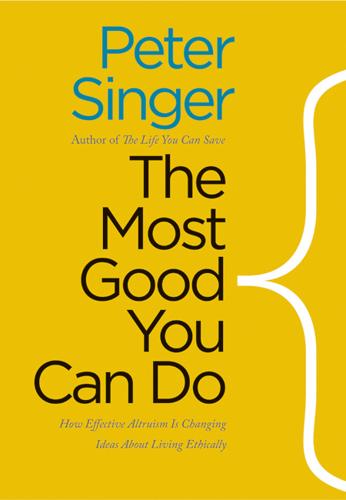
The Most Good You Can Do: How Effective Altruism Is Changing Ideas About Living Ethically
by
Peter Singer
Published 1 Jan 2015
For example, in another study some subjects were asked, before they were presented with the moral dilemma, to memorize a string of letters, digits, and special characters, such as n63#m1Q, before each dilemma. They were told they would be asked to repeat the sequence after the experiment was over. This is known as cognitive loading—it puts a load on the parts of the brain associated with reasoning. When these subjects were then presented with the moral dilemmas, they were more likely than similar subjects who were not cognitively loaded to make judgments suggesting that some acts are just wrong, irrespective of their consequences. Remembering the sequence made it more difficult for them to reason adequately, and so they gave a more intuitive response.
…
Similarly, when subjects were shown a photo of the single individual who would be harmed if they did not choose to act so as to save the larger number of individuals, they were less likely to give a utilitarian response, presumably because the photo aroused their empathy with the victim. Other studies of cognitive loading have yielded similar results.9 Many other studies also support Greene’s dual-process theory of how we make moral judgments.10 These studies bolster as well the more specific claim that associates characteristically consequentialist judgments with greater use of conscious reasoning processes.
…
Cohen, “The Neural Bases of Cognitive Conflict and Control in Moral Judgment,” Neuron 44 (2004): 389–400. 9. Paul Conway and Bertram Gawronski, “Deontological and Utilitarian Inclinations in Moral Decision Making: A Process Dissociation Approach,” Journal of Personality and Social Psychology 104 (2013): 216–35; see also J. Greene, S. A. Morelli, K. Lowenberg, L. E. Nystrom, and J. D. Cohen, “Cognitive Load Selectively Interferes with Utilitarian Moral Judgment,” Cognition 107 (2008): 1144–54. 10. For a summary of the evidence, see Joshua Greene, “Beyond Point-and-Shoot Morality: Why Cognitive (Neuro)Science Matters for Ethics,” Ethics 124 (2014): 695–726. 11. Holden Karnofsky, “Excited Altruism,” GiveWell blog, August 20, 2013, http://blog.givewell.org/2013/08/20/excited-altruism/. 12.
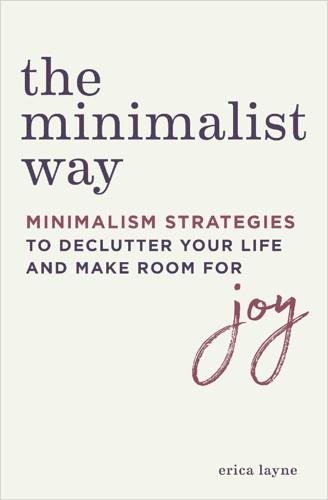
The Minimalist Way
by
Erica Layne
Published 25 Feb 2019
Researchers have even given it a name: “decision fatigue.” No matter how inconsequential the decision seems, fewer decisions means a lighter cognitive load—and more clarity inside. In contrast, turning something into a habit means putting it on autopilot and freeing up that cognitive load. What can you put on autopilot by turning it into a habit? In your work life, habits could range from the time of day you check your email to the food you eat at lunch to fuel your afternoon. A lighter cognitive load leaves you more space to pursue your gifts. 6. OPTIMIZE YOUR WORKDAY BASED ON YOUR ENERGY Do you hit a wall after lunch?
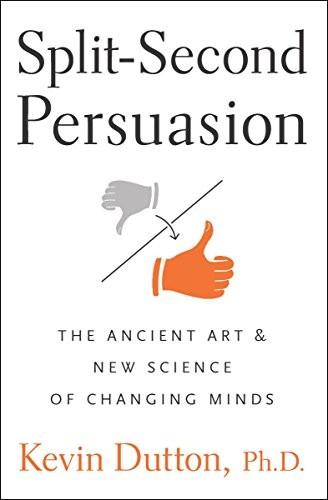
Split-Second Persuasion: The Ancient Art and New Science of Changing Minds
by
Kevin Dutton
Published 3 Feb 2011
There’s a reason for it. Basking in sweet talk doesn’t come cheap. It’s an expensive brain state to maintain, and constitutes a far greater cognitive load – places far higher demands on our limited cognitive funds – than does its opposite number: reality checking. Which means, in turn, that when we’re lapping up the compliments we’re eating up the assets. Brain assets. So there’s less to invest in the business of critical thinking. 4The principle of ‘cognitive load’ – that the more operations our brain has to perform at any one time, the greater the drain on available resources – may be illustrated by a simple attention task, shown opposite.
…
Figure reproduced with permission from Pion Limited, London ©. 3 Ellen Langer, Professor of Psychology … Langer, Ellen J., Blank, Arthur and Chanowitz, Benzion, ‘The Mindlessness of Ostensibly Thoughtful Action: The Role of “Placebic” Information in Interpersonal Interaction.’ Journal of Personality and Social Psychology 36 (1978): 635–642. 4 The principle of ‘cognitive load’ … For a detailed and accessible account of cognitive load and visual search studies see Treisman, Anne M., ‘Features and Objects: The Fourteenth Bartlett Memorial Lecture.’ Quarterly Journal of Experimental Psychology 40A (1988): 201–237. 5 Imagine that you’re working … Beyth-Marom Ruth and Dekel, Shlomith, An elementary approach to thinking under uncertainty (Hillsdale, NJ: Erlbaum, 1985). 6 Heuristics are pretty much … For further information on cognitive short-cuts see Kahneman, Daniel and Tversky, Amos, ‘On the Psychology of Prediction.’
…
(photo credit 3.4) Did you find it easier to find the bold X the first or the second time round? I bet it was the first time. And the reason? In the second display, the demands on the brain’s attentional resources are double what they are in the first. In the first, the brain only has to discriminate between contrast. In the second, between contrast and shape. Yet cognitive load can also work in our favour. Ironically (given that it’s a favourite device of conmen), putting the brain under a bit of pressure – increasing the amount of work that it has to do – can also be useful if we want to turn the tables: find out if someone is lying. Which, when you think about it, actually makes perfect sense.
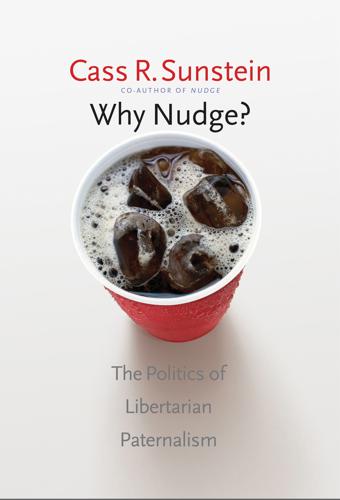
Why Nudge?: The Politics of Libertarian Paternalism
by
Cass R. Sunstein
Published 25 Mar 2014
Greene, The Cognitive Neuroscience of Moral Judgment, in The Cognitive Neurosciences 987 (Michael S. Gazzaniga ed., 4th ed. 2009); Joshua D. Greene et al., Cognitive Load Selectively Interferes with Utilitarian Moral Judgment, 107 Cognition 1144 (2008). The latter paper states: “[O]ur theory associates utilitarian moral judgment (approving of harmful actions that maximize good consequences) with controlled cognitive processes and associates non-utilitarian moral judgment with automatic emotional responses. Consistent with this theory, we find that a cognitive load manipulation selectively interferes with utilitarian judgment. This interference effect provides direct evidence for the influence of controlled cognitive processes in moral judgment, and utilitarian moral judgment more specifically.”
…
Thaler & Shlomo Benartzi, Save More Tomorrow™: Using Behavioral Economics to Increase Employee Saving, 112 J. POL. ECON. S164, S168–69 (2004). In the context of poverty, see ABHIJIT BANERJEE & ESTHER DUFLO, POOR ECONOMICS: A RADICAL RETHINKING OF THE WAY TO FIGHT GLOBAL POVERTY 64–68 (2011). For an important, relevant discussion that involves not procrastination but cognitive load, see Anuj K. Shah, Sendhil Mullainathan & Elda Shafir, Some Consequences of Having Too Little, 338 SCIENCE 682 (2012). On that general theme, see SENDHIL MULLAINATHAN & ELDAR SHAFIR, SCARCITY: WHY HAVING TOO LITTLE MEANS SO MUCH (2013). 21. See, e.g., Jess Benhabib, Alberto Bisin & Andrew Schotter, Present-Bias, Quasi-Hyperbolic Discounting, and Fixed Costs, 69 Games & ECON.
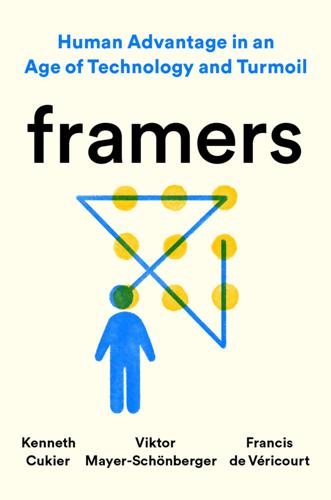
Framers: Human Advantage in an Age of Technology and Turmoil
by
Kenneth Cukier
,
Viktor Mayer-Schönberger
and
Francis de Véricourt
Published 10 May 2021
Dreaming with Constraints Frames help to do two tasks really well, which we outline in chapter 2. First, in novel situations or when circumstances change, our ability to choose a frame provides us with new options. Second, and at least as important, in situations that are familiar, frames focus our mind, thereby reducing our cognitive load. It’s an incredibly efficient way for us to reach a suitable decision. To do that successfully, three elements are in play: causal thinking, our aptitude to create counterfactuals, and our capacity to constrain and shape our imagination toward a particular goal. Consider each element in turn.
…
Also, we know that switching to an alternative frame within our repertoire is easiest, followed by looking to repurpose an existing frame from another field. Hence, it makes sense to start reframing by searching one’s repertoire or adjusting another mental model rather than trying to develop a new frame from scratch. That lowers the cognitive load and increases the chances for success. Counterintuitively, it is also better to reframe infrequently. There is a temptation to reframe swiftly and repeatedly. It’s the idea that if a reframe doesn’t work, one can quickly rectify the problem by reframing again, jumping from frame to frame until the right one is found.
…
See imagination Crick, Francis, 132 CRISPR, 137 Cuban missile crisis, 89–90 “cultural niche,” 58 Cuusoo, 165–166 “Cyclopedia of Puzzles,” 46 Dabiq, 213 Darwin, Charles, 7, 131 data, effect of frame applied to, 6 Days of Destruction, Days of Revolt (Hedges and Sacco), 135 decision-making framing as fundamental to, 5, 8 influence of different characterizations of outcomes, 10 mental models reduce cognitive load by focusing mind, 11–12 values in, 39–40 “deep reinforcement learning,” 70 Defense of the Ancients 2 (Dota 2), 69–70 Dennett, Daniel, 44–45 Descartes, René, 16 DeVore, Irven, 230 Diamond, Jared, 183–184 Dick, Philip K., 111 “diversity dividend,” 161–166 Donham, Wallace, 87, 156, 240 Doudna, Jennifer, 137 Earhart, Amelia, 160 Easy Solar, 203–204 Ebola, misframing of, 30–31, 32 economy.

User Friendly: How the Hidden Rules of Design Are Changing the Way We Live, Work & Play
by
Cliff Kuang
and
Robert Fabricant
Published 7 Nov 2019
Back in 1958, the cognitive psychologist George Miller was one of the first to document the concept of cognitive load, based on his studies of the limits of short-term memory. This led to the popularization of Miller’s law: The average person can keep only seven (plus or minus two) items in their working memory. There is some controversy as to whether seven is or is not a magic number. But most designers have an intuitive appreciation of the principle behind this law, and they “chunk” related options together to reduce cognitive load and reinforce a more coherent mental model. You probably wish this design strategy were more consistently applied to a number of bewildering products in your life, including remote controls, with their dizzying array of strangely labeled, shaped, and colored buttons.
…
The Honeywell thermostat later inspired the Nest smart thermostat. 1954: FITTS’S LAW, Paul Fitts With his eponymous law governing the relationship between button size and ease of use, Fitts helped invent the cross-disciplinary study of human-computer interaction. 1956: MILLER’S LAW, George Miller The cognitive psychologist George Miller was one of the first to document the concept of cognitive load, based on his studies of the limits of short-term memory. His research led to the widespread adoption of Miller’s law as a rule of thumb by designers to reduce complexity and resist the pressure to lard products with more features. 1959: PRINCESS PHONE, Henry Dreyfuss Dreyfuss’s Princess phone was an ergonomic design inspired by the way young girls would squirrel away in bed with their clunky AT&T phones.
…
K., 195–96 Bateson, Gregory, 33 Bauhaus, 61, 62, 70, 148, 333, 334, 370n17 beauty, 158 Beauty and the Beast, 155; Be Our Guest restaurant, 217–19 Béhar, Yves, 107 behavior, 96, 108, 310, 344; culture and, 114; design dissolving into, 304; existing, building on, 314–17; long-term changes in, 358n13 behavioral economics, 95–96, 259 behaviorism, 81, 257 Behrens, Peter, 62, 333, 370n16 Bel Geddes, Norman, 58, 70, 88 Bell, Alexander Graham, 199, 205 Bell Model 500 telephone, 91, 93 Bigelow, Julian, 32–33 Big Four design firms, 88, 94 Big Tomorrow, 244 Blackberry, 145, 274 blind people, 203–205 blood sample testing, 183–84 Boas, Franz, 334 books, 41 Borges, Jorge Luis, 91–92 Bosnian War, 49–50, 54 bottle designs, 155–57 Bould, Fred, 344 brain, 96, 110, 257; metaphors and, 152–53; reward centers in, 254 “brain in a vat” thought experiment, 360n31 brands, 35 Braun, 46, 338, 343 Breuer, Marcel, 148 Brexit, 263 Brin, Sergey, 342 Broadway, 55–59, 66 Brown, John Seely, 341 Brown, Joshua, 119–22 Brown, Tim, 177, 179–80 Brownie camera, 332–33 buses, 280–86 Bush, Vannevar, 189 Bushmiller, Ernie, 272 buttons, 42, 43, 105–106, 117–18, 124, 268–69; Amazon one-click, 145–46, 342; Facebook Like, 35, 36, 146, 247–49, 262, 265–66, 274, 291, 292, 342, 344; Fitts’s law and, 337, 354n7; Ripple device (help button), 53–55, 80, 117, 204; shape of, 84 Cambridge Analytica, 264–67 Capital One chatbot, 211–12, 259, 268 Caplan, Ralph, 94 Carnival Cruise Line, 229–39, 245, 259, 324; Experience Innovation Center, 231–34; Ocean Medallion and Personal Genome, 233–39, 268, 296 Carnival Destiny, 230 Carr, Austin, 216 cars, 60, 65, 70, 80, 85, 104, 230, 370n10; cruise control in, 119, 321; doors of, 154; emotional design of, 157; fascia (grill and headlights) of, 157, 360n36; “horseless carriage” metaphor and, 318; hybrid, 135–39, 144, 343; steering wheels in, 147, 332, 359n24; tillers in, 147, 332, 359n24; transitioning from standard to electric, 322 cars, self-driving, 99–106, 108, 125, 272; Audi, 99–104, 106, 108, 111–13, 118–20, 126, 144; “autopilot” idea and, 119, 124, 346; dashboard and steering wheel in, 114–17; expectations and, 111; horse metaphor and, 116, 117, 118, 126, 144; pedestrians and, 101–102, 113–14, 125, 210–11; politeness and, 125, 126; Tesla, 102, 103, 114, 119–22, 346; “three plus one” design philosophy for, 105, 106; trust and, 114; Uber, 121; Volkswagen, 103–104, 113–14, 117; workspace metaphor and, 318 Carter, Jimmy, 275 Center for Humane Technology, 274 Centre Pompidou, 157–58 Cerf, Vint, 199, 205 Chadwick, Don, 341 chain saws, 172, 173, 178, 339 Chapanis, Alphonse, 83–87, 95, 103, 106, 124, 202, 257, 334; B-17 Flying Fortress controls, 83–84, 335–36 chatbots: Capital One, 211–12, 259, 268; Eliza, 337–38 Chhatpar, Ravi, 305 Chicago slaughterhouses, 60 China, 61, 191–93 China Syndrome, The, 29 Chipchase, Jan, 308, 334 choice, 287, 289, 310; paradox of, 231 Cigna, 288 Clancey, William, 167 Clark, Andy, 293–94 Clarke, Arthur C., 223 climate change, 34, 289 Clinton, Hillary, 262, 264 Clinton Foundation, 267 Clippy, 112 coach metaphor, 136–39 coffee-spilling principle, 106 cognitive load, 322 cognitive psychology, 95, 272, 323 Cold War, 201 Columbia University, 125 “Coming of Age of Calm Technology, The” (Weiser and Brown), 341 computers, 26, 80, 177, 208, 270, 295–96; desktop metaphor in, 139–40, 143, 144, 146–47; feelings about, 108–10, 112; graphical user interface and, 143, 145, 146, 148; GRID Compass, 175–76, 339; mode confusion and, 144; Mother of All Demos and, 187–90, 338; mouse for, 141, 169, 177, 182–83; as personal assistant, 189; programs and software, 6–7, 176, 177 computing, ubiquitous, 233, 296, 369n11 Connell, Derrick, 191, 193 consistency, 31, 105 consumer, average, 200 consumer demand, aesthetic appeal and, 64–65 consumer design, business incentives aligned with, 68–71 consumer desire, 93, 175 consumption as social progress, 55, 65, 90, 175, 290 convenience, 273 conversation, 111–13 Cooper, Alan, 178, 261–62, 274–75, 341, 361n22 cooperation, 111–12 Coppola, Sofia, 195 Cortana, 194, 208 Creative Engineering (Arnold), 167 crime, organized, 39 Crofton, Meg, 216, 225 Crowder, Harlan, 4–8, 43; at IBM, 5–8, 338; “user friendly” term and, 4, 7, 338 cruise ships, 229, 230; see also Carnival Cruise Line CVS MinuteClinic, 310 cybernetics, 336 DaimlerChrysler, 318 Dalberg Design, 130, 288, 305, 309, 315, 319, 325 Darwin, Charles, 90 deaf people, 199, 205–206 defibrillator, 139 Degani, Asaf, 105 de la Mare, Nick, 243–45, 250 de los Reyes, August, 196–99, 202–203, 205–206, 292 democracy, 61 Depression, Great, 65, 68–70, 86, 93 Descartes, René, 152–53, 360n31 design, 45–46, 174–75, 180, 183; ancestor thinking in, 274–75; beauty and, 158; disability and, 202–205, 294; emotions and, 155–57, 325–27; ethical weight of, 294; of existing products, 90; “good,” 304–305; human-centered, 72, 182, 184, 272, 288; mood boards and, 155; new thoughts and, 294; of new types of products, 90, 93; paradox of, 289; postmodern, 157–58; postwar boom in, 89, 90; seamless, 369n11; as social progress, 68–70, 271, 290; societal effects of, 290–91; understanding in, 42, 56, 68, 80, 289; see also industrial design; user-friendly design designer error, 83 Design for the Real World (Papanek), 290 Design in the USA (Meikle), 69 Design Lab, 23–24 Design of Everyday Things, The (Norman), 22, 312, 339, 340 design research, 72, 306–10 design thinking, 24, 163, 170, 182, 184, 232 Dewey, John, 301 Diffrient, Niels, 94 disability, 199–200, 202–205, 294 Disney, 215, 229, 231, 232, 234, 238, 323; Imagineers, 222, 226 Disney, Walt, 215, 220–22, 226, 233, 336 Disneyland, 220, 336 Disney World, 215–17, 232–33, 245; Be Our Guest restaurant, 217–19; MagicBand and MyMagic+, 217–29, 237, 243–44, 288, 304, 317, 345 Donald, Arnold, 229, 231, 232, 238 dopamine, 254, 259, 263 Dreyfuss, Doris Marks, 67, 70, 94–95, 172–74 Dreyfuss, Henry, 55–59, 65–72, 87– 95, 117, 154, 163–65, 177, 181, 207, 271, 273, 285–87, 290, 293, 302, 308, 310, 334, 352n12; Broadway work, 55–59, 66; death of, 94–95; Honeywell thermostat, 92, 93, 336, 343; industrial design and, 59, 67–68, 93; Joe and Josephine drawings, 88–89, 92, 174, 176, 178, 185, 337; Macy’s and, 66–67, 165; The Measure of Man, 92, 337, 340, 341; RKO theater and, 55–56, 92, 173–74, 335; tank cockpit chairs, 87–88; telephone designs, 91, 93, 337, 371n21; Toperator washing machine, 69, 87, 335 Dropbox, 351n32 DVDs, 230 DVRs, 163, 321 dyslexia, 205 Dyson, James, 157, 339 Dyson vacuum cleaners, 157, 158, 339 Eames, Ray and Charles, 90 Earlham College, 280, 284 Eastman, George, 332–33 Eastman Kodak, 332–33, 336 eBay, 34–35, 249 education, 244–45 elderly, 201; suit to augment muscles of, 107–108, 340 Eliza conversational bot, 337–38 email, 199, 205, 242, 274; in-box, 134 embodied cognition, 152–54, 294, 360n32 emojis, 249, 260, 326–27, 342 Emotional Design (Norman), 326, 340 emotions, 155–57, 325–27, 370n16, 371n20 empathy, 163, 184–85, 190, 199, 212, 245, 257, 327; with disability, 200; industrialized, 163–64, 170, 183, 185, 245, 273–75, 294 Engelbart, Doug, 142, 168, 243, 363n11; Mother of All Demos by, 187–90, 338 Enlightenment, 95 Eno (Capital One chatbot), 211–12, 259, 268 environmental concerns, 305; climate change, 34, 289 ergonomics, 86, 92, 95 Erickson, Thom, 369n7 errors, 86–87, 95, 173; blaming humans for, 122; designer, 83; pilot, 81, 83, 102–103, 335 Esalen, 168, 169 Esslinger, Hartmut, 326 ethnography, modern, 334 European Union (EU), 346–47 expectations, 110–11, 313 “experience,” origin of word, 369n3 Experience and Education (Dewey), 301 Exposition International des Arts Décoratifs et Industriels Modernes, 61–62 Eyal, Nir, 258–59 Fabricant, Richard, 319–20 Fabricant, Robert, 9, 96, 130, 288, 301–30 Facebook, 118, 131, 132, 239, 243, 247–48, 250, 251, 255, 258, 259, 261, 262, 267–69, 271, 274–76, 292–95; advertising on, 267; feedback and, 35, 36; in Kenya, 147–48; Like button, 35, 36, 146, 247–49, 262, 265–66, 274, 291, 292, 342, 344; misinformation spread on, 262, 263; News Feed, 247, 248, 318; tribalism fostered by, 245, 262–64 factories, 60, 63; accidents in, 82 Fadell, Tony, 342, 344 fake news and misinformation, 262, 263, 289 Farber, Sam and Betsey, 202–203, 341 Fast Company, 216 feedback, 7, 32–38, 42, 105, 112–13, 119, 269, 288, 305, 311, 313, 320, 327, 336; artificial intelligence and, 35–36; bus system and, 282; buyer/seller, 34–35; car dashboards and, 137–38; Facebook and, 35, 36; Instagram and, 36–37; Like button model of, 249, 291, 342, 344; Ripple device and, 55; and suit to augment muscles of the elderly, 108; Three Mile Island and, 28, 32, 40, 42; Wizard of Oz technique and, 193, 312 feminism, 63 Fernbach, Philip, 271 Filson, Ben, 344 Finland, 170, 182, 288–89, 345 Fisher, Helen, 370n10 Fitts, Paul, 80–83, 86–87, 106, 173, 337, 354n7 Flinchum, Russell, 71 flyswatter, 69 Fogg, B.

Clean Agile: Back to Basics
by
Robert C. Martin
Published 13 Oct 2019
Point 4 says that once we have removed all the duplication, we should strive to decrease the number of structural elements, such as classes, functions, variables, etc. The goal of Simple Design is to keep the design weight of the code as small as practicable. Design Weight The designs of a software system range from quite simple to extraordinarily complex. The more complex the design, the greater the cognitive load placed on the programmers. That cognitive load is Design Weight. The greater the weight of that design, the more time and effort are required for the programmers to understand and manipulate the system. Similarly, the complexity of the requirements also ranges from very small to very great. The greater the complexity of the requirements, the more time and effort are required to understand and manipulate the system.
…
See Technical Practices Pragmatic Programmers, at Snowbird meeting, 11 Process expert, becoming Agile expert, 156–157 Product Owner not feeling part of team, 172 Scrum, 94 Productivity expectation of stability, 46–49 staff additions and, 29 Profession contrasting with job, 178–179 uniqueness of programming as a profession, 114 Professionalism combining Craftsmanship with Agile, 181 community of professionals, 173 overview of, 38 software and its potential dangers, 42–43 for software extent and dependence, 39–42 Program evaluation and review technique (PERT), 65 Programmers. See also Developers burn out, 101 collaboration in Acceptance tests, 91–93 collaboration in choosing stories, 78–79 communication as value, 134–135 design weight as cognitive load, 127 expectation to not ship bad code, 43–45 ruling the contemporary world, 41–43 as subset of developers, 59 uniqueness of programming as a profession, 114 Programming, comparing XP with Agile, 180 Programming languages, core tools for Agile developers, 148 Project end. See Done Project management.
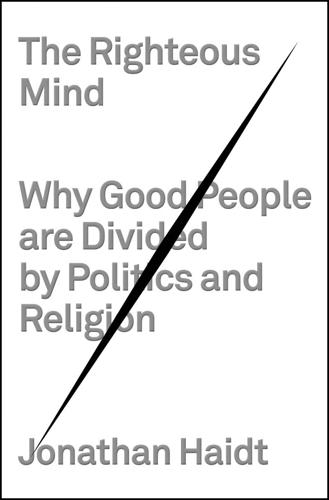
The Righteous Mind: Why Good People Are Divided by Politics and Religion
by
Jonathan Haidt
Published 13 Mar 2012
In my first few years at UVA I conducted several experiments to test this dual-process model by asking people to make judgments under conditions that strengthened or weakened one of the processes. For example, social psychologists often ask people to perform tasks while carrying a heavy cognitive load, such as holding the number 7250475 in mind, or while carrying a light cognitive load, such as remembering just the number 7. If performance suffers while people are carrying the heavy load, then we can conclude that “controlled” thinking (such as conscious reasoning) is necessary for that particular task. But if people do fine on the task regardless of the load, then we can conclude that “automatic” processes (such as intuition and emotion) are sufficient for performing that task.
…
My early Jeffersonian dual-process model. Emotion and reasoning are separate paths to moral judgment, although moral judgment can sometimes lead to post hoc reasoning as well. My question was simple: Can people make moral judgments just as well when carrying a heavy cognitive load as when carrying a light one? The answer turned out to be yes. I found no difference between conditions, no effect of cognitive load. I tried it again with different stories and got the same outcome. I tried another manipulation: I used a computer program to force some people to answer quickly, before they had time to think, and I forced other people to wait ten seconds before offering their judgment.
…
“Reasoning-why,” in contrast, is the process “by which we describe how we think we reached a judgment, or how we think another person could reach that judgment.”34 “Reasoning-why” can occur only for creatures that have language and a need to explain themselves to other creatures. “Reasoning-why” is not automatic; it’s conscious, it sometimes feels like work, and it’s easily disrupted by cognitive load. Kohlberg had convinced moral psychologists to study “reasoning-why” and to neglect “seeing-that.”35 Margolis’s ideas were a perfect fit with everything I had seen in my studies: rapid intuitive judgment (“That’s just wrong!”) followed by slow and sometimes tortuous justifications (“Well, their two methods of birth control might fail, and the kids they produce might be deformed”).
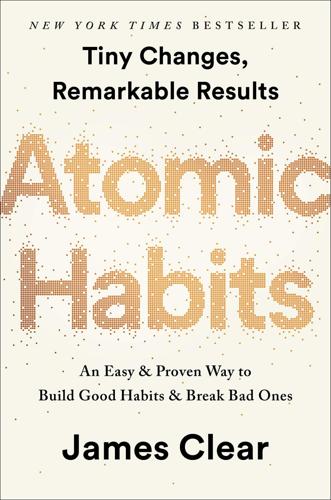
Atomic Habits: An Easy & Proven Way to Build Good Habits & Break Bad Ones
by
James Clear
Published 15 Oct 2018
It can only pay attention to one problem at a time. As a result, your brain is always working to preserve your conscious attention for whatever task is most essential. Whenever possible, the conscious mind likes to pawn off tasks to the nonconscious mind to do automatically. This is precisely what happens when a habit is formed. Habits reduce cognitive load and free up mental capacity, so you can allocate your attention to other tasks. Despite their efficiency, some people still wonder about the benefits of habits. The argument goes like this: “Will habits make my life dull? I don’t want to pigeonhole myself into a lifestyle I don’t enjoy. Doesn’t so much routine take away the vibrancy and spontaneity of life?”
…
.* The Japanese companies looked for every point of friction in the manufacturing process and eliminated it. As they subtracted wasted effort, they added customers and revenue. Similarly, when we remove the points of friction that sap our time and energy, we can achieve more with less effort. (This is one reason tidying up can feel so good: we are simultaneously moving forward and lightening the cognitive load our environment places on us.) If you look at the most habit-forming products, you’ll notice that one of the things these goods and services do best is remove little bits of friction from your life. Meal delivery services reduce the friction of shopping for groceries. Dating apps reduce the friction of making social introductions.
…
Lee, “Division of Attention: The Single-Channel Hypothesis Revisited,” Quarterly Journal of Experimental Psychology Section A 41, no. 1 (1989), doi:10.1080/14640748908402350. the conscious mind likes to pawn off tasks: Daniel Kahneman, Thinking, Fast and Slow (New York: Farrar, Straus and Giroux, 2015). Habits reduce cognitive load: John R. Anderson, “Acquisition of Cognitive Skill,” Psychological Review 89, no. 4 (1982), doi:10.1037/0033–295X.89.4.369. Feelings of pleasure and disappointment: Antonio R. Damasio, The Strange Order of Things: Life, Feeling, and the Making of Cultures (New York: Pantheon Books, 2018); Lisa Feldman Barrett, How Emotions Are Made (London: Pan Books, 2018).
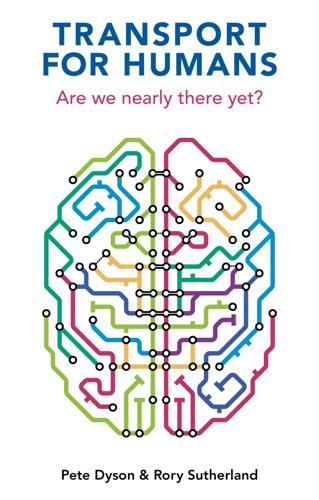
Transport for Humans: Are We Nearly There Yet?
by
Pete Dyson
and
Rory Sutherland
Published 15 Jan 2021
Be sympathetic to stressed travellers The map abstracts to reduce cognitive load (it simplifies), it appreciates that people have limited cognitive capacity (a traveller’s unfamiliarity with the terrain, for instance), and it embraces heuristics (by replacing ‘how far’ with ‘how many stops’). This makes travel a more welcoming, and inclusive, experience. Design is about what you leave out too The design of London’s Tube map is also significant in terms of what it leaves out. South London’s surface rail isn’t marked, for example. This is a value judgement that trades off the need to reduce cognitive load with the problem that it makes London, especially South London, seem more transport-poor than it actually is – at least to tourists and North Londoners.
…
This makes us more likely to cry, which may explain why we become deeply moved by profoundly unimpressive in-flight movies.10 Decision making To travel means to make decisions while we are stressed and uncertain. Taking a trip is expensive, time-pressured, crowded and often disorientating. Individuals must cooperate with one another and, under stress, observe the social norms that govern tasks like queueing.11 Habits We repeat past behaviour, often unconsciously. While this reduces the cognitive load required by our trip, it makes adapting and changing to alternatives much harder.12 New and better roads are therefore slow to fill up, and rail services struggle to make a profit for their first few years. Disability Across the world there are more than one billion people living with severe or moderate disabilities.
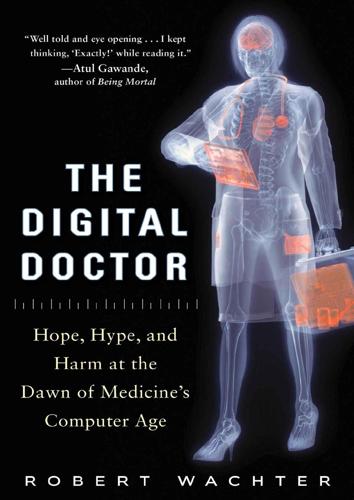
The Digital Doctor: Hope, Hype, and Harm at the Dawn of Medicine’s Computer Age
by
Robert Wachter
Published 7 Apr 2015
Abundant research has demonstrated that the term multitasking is a misnomer— performance degrades rapidly when people try to do several things simultaneously, whether it’s your kids doing homework while texting or a pharmacist checking orders while answering the phone. Psychologists speak of the concept of “cognitive load”—the overall volume of things a mind is grappling with at a given time. While there are some individual differences in the ways we manage cognitive load, one thing is clear: none of us does this as well as we think we do. Studies of air traffic controllers have demonstrated that at busy times, professionals do their best to manage their cognitive loads by shedding tasks, falling back on automation, and focusing their attention on some things and away from others. But ultimately the brain begins to tire, and that’s when you see people cutting the wrong corner.
…
See APIs Arenson, Ron, 59, 61 Arizona General Hospital, 73 artificial intelligence (AI) AI winter, 102, 107 computers replacing the physician’s brain, 93–104 little AI, 113 See also medical AI athenahealth, 89, 215, 217, 226–231, 233 Augmedix, 180, 240, 241, 242 auscultation, 32, 33 automation hazards of overreliance on, 162–163 irony of, 162 Avrin, David, 50, 51 Bainbridge, Lisanne, 162 Baker, Stephen, 53 bar-coded medication administration (BCMA), 130 Baron, Richard, 68–69, 76–77 Batalden, Paul, 19 Bates, David, 222, 224 Baucus, Max, 16 Bayes, Thomas, 99 Bayes’ theorem, 99 bedside teaching, 35 Bell, Joseph, 97 Benioff, Marc, 233 Berwick, Don, 232 Beth Israel Deaconess Medical Center, 172, 176, 178, 186, 231 big data, 7, 115–123 biometric identifiers, 190 Birkmeyer, John, 79 Blair, Tony, 10, 17 blood tests, 32 bloodletting, 33 Bloom, Paul, 156 Blumenfeld, Barry, 67 Blumenthal, David, 15, 205–208, 235–236, 243–244, 268 Bolten, Josh, 11–12 Boston Children’s Hospital, 144 Brailer, David, 10–14, 18–19, 68, 207, 212 Brigham & Women’s Hospital, 87, 88, 187 Brown, Eric, 103, 118–119, 123 Brynjolfsson, Erik, 94, 250 productivity paradox, 244–245 bundled payments, 59 Burton, Matthew, 1–8, 10, 113 Bush, George W., 9–10, 11–12, 17 Bush, Jonathan, 89, 226–233 Carr, Nicholas, 275 case-mix adjustment, 40 Cedars-Sinai Medical Center, 67–68 CellScope, 240–241, 242 Cerner, 8, 86, 187, 222, 231 Chan, Benjamin, 139–141, 149–153, 155–157 Chang, Paul, 53, 62 the chart, 44–45 The Checklist Manifesto (Gawande), 121–122 Christensen, Clay, 12, 61, 217, 229 clinical research, 263–264 clinical trials, 33 clinicopathologic correlation, 31 Clinton, Hillary, 11 Clinton, William “Bill”, 9, 189 Code Blue, 2–4 Codman, Ernest, 36 cognitive computing, 146 cognitive load, 150–151 complementary innovations, 245 computer systems, replacing the physician’s brain, 93–104 computerized decision support for clinicians, 248, 251, 260 computerized provider order entry (CPOE), 130 “Connecting for Health” initiative, 10, 17 cookbook medicine, 120 Cramer, Jim, 233 creative destruction, 250–251 The Creative Destruction of Medicine (Topol), 250 CT scans, 50–51 quality of images, 52–53 stacking, 53 data.
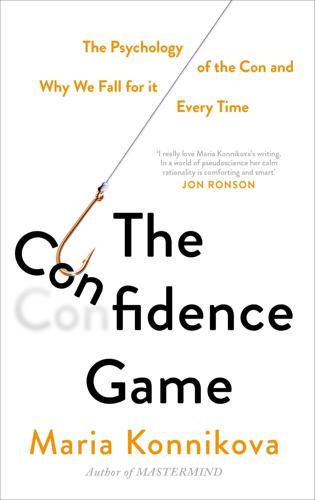
The Confidence Game: The Psychology of the Con and Why We Fall for It Every Time
by
Maria Konnikova
Published 28 Jan 2016
“Cinnamon pita chips? Nah, I can’t help you.” By that point, Tyler was inside: his ploy to increase the bouncer’s cognitive load had succeeded. And it succeeded, in various guises, all the way through his college career. A rope that derives entirely from the argument’s presentation can still be amazingly effective. Derren Brown, one of Britain’s most famous magicians, had a field day with the same approach on a 2007 visit to New York. Except in his case it was to make the point that, with the right cognitive load, people won’t notice if you’re paying with paper. Stop one: a fishmonger’s. The goal: three filets of sole.
…
But the best liars are a difficult match for even the best truth-seers. Even then, it’s not a skill that can be easily learned. “I don’t think my ability is trainable,” Renée admits. “If we could, we’d be doing it already. I can give others tools, but they won’t be at the same level.” What’s more, Ekman says, cognitive load may come from many areas, not just deception. Even with microexpressions, there is no surefire way of knowing whether someone is actually being untruthful. We can read signs of extreme pressure, but we don’t know where that pressure necessarily comes from. We might be worried, nervous, or anxious about something else.
…
We might be worried, nervous, or anxious about something else. It’s one of the reasons lie detectors are also notoriously unreliable. Our physiology is just as subject to minute pressures as our physiognomy, not necessarily from the strain of deceiving. Sometimes this signals lying. Sometimes it signals other types of cognitive load, like stress, fatigue, or emotional distress. And in all cases it is impossible to be absolutely certain. With con artists, lie detection becomes even trickier. “A lie,” Ekman says, “is a deliberate choice to mislead a target without any notification.” Plus, the more you lie, the fewer identifying signs, even tiny ones, you display.

Seeking SRE: Conversations About Running Production Systems at Scale
by
David N. Blank-Edelman
Published 16 Sep 2018
Since software and its ecosystem do not follow economies of scale, it becomes imperative for teams to specialize and focus, as an organization’s software and infrastructure grows with scale; that is where the probable transition from DevOps to SRE comes into play. For smaller businesses and organizations, DevOps culture reduces the impedance between development and operations resulting in rapid iterations and change. As an organization grows and scales it becomes imperative to standardize how software is developed and deployed to reduce the cognitive load and effort when it comes to understating and getting things done. Both DevOps and SRE roles can make contributions here, DevOps can focus more on developer productivity (e.g., tooling like build systems, trainings, better testing, etc.), while SREs focus on maintaining uptime, upkeep of production systems, and specialized tooling (e.g., distributed tracing infrastructure), both the roles become a full-time job with scale.
…
PE is not primary on-call for services we don’t own or build outright. We have a shared on-call model when we’re embedded with an SWE team and how that on-call rotation manifests itself is situational. In most cases, it’s a weekly rotation. There’s a software engineer on call for one week, then a PE on call the next week, and so forth. In some cases, due to cognitive load or because the infrastructure is currently harder to manage, some teams do shorter on-call rotations of a few days. We have only two scenarios where solely software engineers or production engineers are on call: A software engineering team that doesn’t have embedded production engineers. In this scenario, they have no choice because they have to be on call for their service.
…
But we need something more. If you’re not looking at creating and maintaining development frameworks for your organization that incorporate the production standards you want to maintain, you’re missing a great opportunity to extend SRE’s impact, increase the velocity of your development and launch processes, and reduce cognitive load, toil, and human errors. Frameworks can make certain that monitoring is compatible with existing production systems; that data layer calls are safe; that distributed deployment is balanced across maintenance zones; that global and local load balancing follow appropriate, familiar, and standardized patterns; and that nobody forgets to check the network class of service on that tertiary synchronization service cluster or comes out of a production review surprised to learn that they have three weeks’ worth of monitoring configurations to write and a month-long wait to provision redundant storage in Zone 7 before they’ll be able to launch because of a typo when they filled out the service template.22 Antipattern 11: Too Much Stick, Not Enough Carrot SRE is a pull function, not a push function.
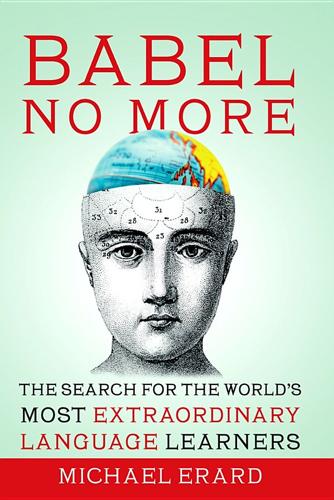
Babel No More: The Search for the World's Most Extraordinary Language Learners
by
Michael Erard
Published 10 Jan 2012
In south India the answer lies in social dynamics that are clearly organized along cognitive lines. One way that Indian brains are able to manage so many languages, according to the University of Chicago linguist and Tamil scholar E. Annamalai, is the Sprachbund. That overlap between languages is a result of generations of people trying to reduce the cognitive load of having to learn and remember so many of them. Another way to put it is that the Sprachbund is a cultural adaptation to two fixed constraints: a set of spoken entities whose boundaries will never blur, for cultural and political reasons, and the limits of the human brain. Something had to give.
…
One afternoon in the library at the Central Institute for Indian Languages, in the middle of reading various Indian scholars’ work on multilingualism, I jotted in my notebook that “the hyperpolyglot is the plurilingual individual in the West—the presence of language fluidity in the West.” There’s a truth to this, though I can’t shake the notion that they’re really doing something different from the Indian multilinguals whose lives I glimpsed. One difference is that individuals living in multilingual communities seem to settle on an optimal cognitive load. The hyperpolyglot possesses a similar patchwork of linguistic proficiencies. Yet he or she exceeds this optimum with a conspicuous consumption of brainpower. Another difference is how learning these languages ties a person to his or her community. For multilinguals, learning languages is an act of joining society.
…
Taking my lead from Dick Hudson, I began my project by identifying hyperpolyglots as people who knew more languages than they needed to merely “belong” or get along in their local communities. I would go further, however. Hyperpolyglots are people who have the multicompetence to belong to a real or imagined global community. In order to learn more languages, they borrow tricks and adaptations to lighten their cognitive load from people in multilingual settings: they keep their languages at different levels of proficiency; they read and write only in some of them; they develop receptive knowledge in some languages and tend to know other languages that share vocabulary and grammatical regularities. Sometimes they count languages that they long ago studied but no longer (or rarely) used.
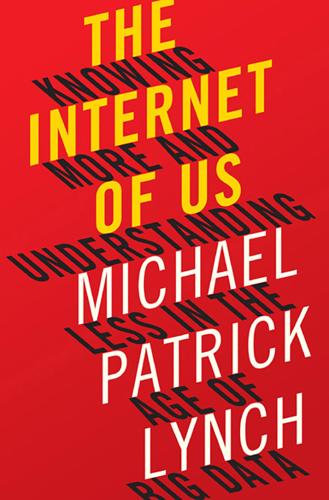
The Internet of Us: Knowing More and Understanding Less in the Age of Big Data
by
Michael P. Lynch
Published 21 Mar 2016
Writing is a technology, a tool. Yet its invention wasn’t just a change in how information and knowledge was distributed. It was a new way of knowing itself. Writing allows us to communicate across time—both with ourselves and with others. It allows us to outsource memory tasks and therefore lessen our cognitive load. Not long ago, for example, I discovered a note my father had written, taped to the back of an old chainsaw I had inherited from him. It was more than a note, really; it was a little essay, detailing good and bad practice with the saw. My dad’s house was peppered with such memos. He would write them as a reminder of how best to go about various tasks that one might do only irregularly—replacing the fuel filter on the lawn mower, shutting down the water heater.
…
But all of them do involve some level of insight. Having such an insight is part of why understanding is fundamentally a creative act. Coming to understand is a mental act in the same way that reflecting or deciding are mental acts. They are activities that your mind engages in. They take effort and increase the total cognitive load. Don’t confuse the state of understanding and the act of coming to understand. One can be in a state of understanding, just as one might be in a state of decision (or indecision, as the case may be), without doing anything in particular, or even being conscious of being in that state. Your understanding in such a case is tacit or implicit.
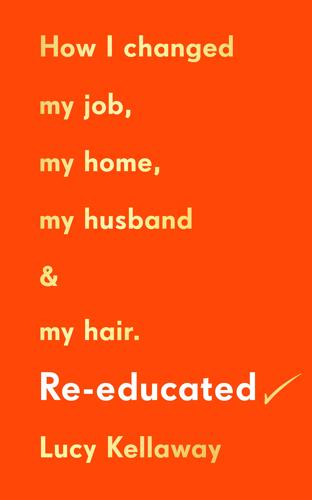
Re-Educated: Why It’s Never Too Late to Change Your Life
by
Lucy Kellaway
Published 30 Jun 2021
I am just in time for the last clammy pain au chocolat – leaving the people behind me with no choice but the frosted cinnamon swirls. 8am A slide on the giant screen in the auditorium reads: DO NOW: What is the difference between extrinsic and intrinsic cognitive load? I have a dim memory of an earlier training session with this detail in it, but my own cognitive load is so excessive right now the only thing that would relieve it would be some extra time to plan my Year 10 lesson. Instead we get a five-minute blast from an RE teacher whose title is ‘Excellent Teacher’ (the implication being that the rest of us are Rubbish Teachers) on how to break our explanations down to make them easier to understand.
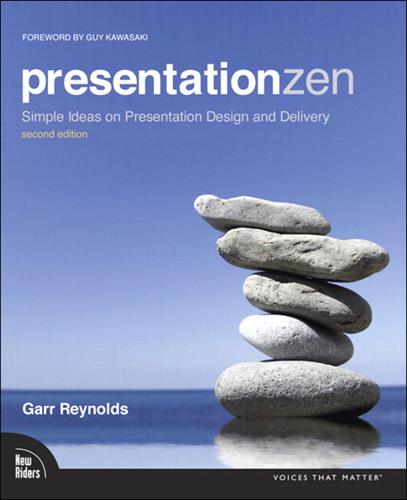
Presentation Zen
by
Garr Reynolds
Published 15 Jan 2012
Almost every PowerPoint presentation sucks rotten eggs.” Over the years, a primary reason so many presentations given with the aid of slides or other multimedia have failed is that the visual displays served as nothing more than containers for reams of text. According to John Sweller, who developed the cognitive load theory in the 1980s, it is more difficult to process information if it is coming at us both verbally and in written form at the same time. Since people cannot read and listen well at the same time, displays filled with lots of text must be avoided. On the other hand, multimedia that displays visual information, including visualizations of quantitative information, can be processed while listening to someone speak about the visual content.
…
istockphoto.com 000002295948 istockphoto.com 000001679350 istockphoto.com 000002743609 Chapter 7 istockphoto.com istockphoto.com 000003062749 Chapter 8 istockphoto.com 000017473312 istockphoto.com 000016850256 istockphoto.com 000000761342 istockphoto.com 000002187504 istockphoto.com 000002677242 Chapter 9 istockphoto.com 000004994105 istockphoto.com 000002310227 istockphoto.com 000006160804 istockphoto.com 000003685771 Chapter 10 istockphoto.com 000001589846 istockphoto.com 000013344347 istockphoto.com 000018073953 istockphoto.com 000016850259 istockphoto.com 000016850258 istockphoto.com 000018073949 istockphoto.com 000018074557 istockphoto.com 000000071701 istockphoto.com 000005896614 istockphoto.com 000007777554 Chapter 11 istockphoto.com 000004927853 istockphoto.com 000004344227 istockphoto.com 000016864449 istockphoto.com 000009032551 Cover photo by Alex Bramwell istockphoto.com 000003043850 Index 1-7-7 Rule, 142 3D effects, 140 A-B agenda slides, 239 alignment principle, 177, 185 amplification, 125–127 Anderson, Chris, 12 Articulate Executive, The, 236 Art of Possibility, The, 225 asymmetrical designs, 166–168 Atchley, Dana, 94 Atkinson, Cliff, 69 attentiveness, 248 audience apologizing to, 238–239 connecting with, 231–239, 242, 253–263, 276 dealing with hostile, 224 getting close to, 272–273 keeping attention of, 238, 248–249, 276 projecting yourself to, 240–244 Austin, Dennis, 10 Authentic Happiness, 256 authenticity, 90–91 balance, 166–168 beginner’s mind, 33–34 bento, 5, 6 big-picture thinking, 35, 45 bilingual visuals, 158–159 B key, 275 Brain Rules, 254 brainstorming, 48, 50, 52, 96 branding, 141, 192 Breeze, James, 163 Brenman, Jeff, 194 Buchholz, Dr. Ester, 57 Budo Secrets, 223 bullet points, 5, 95, 142–143 bumper slides, 100 Burns, Ken, 22 business documents, 22 busyness, 55–56 C-D challenging assumptions, 237 child’s mind, 33–34 clutter, 9, 117, 141 cognitive load theory, 10 comics, 22, 125–127 communication removing barriers to, 264–265 skills for effective, 22, 25 as transfer of emotion, 20 computer, as “bicycle for mind,” 46–47 computer-generated presentations, 10 Conceptual Age, 14–19 concreteness, 79, 102 conflict, 85 connection, techniques for making, 232–239 constraints, working with, 39–42 contrast, 86, 173–174, 185 contribution, 225–226 conversational voice, 93, 242 core message, 64–66, 74, 96 creativity, 31–37, 55–56, 287 credibility, 80 Crowley, James, 120 Crowley, Sandra, 120 curiosity, stimulating, 258–259 Curse of Knowledge, 78 Dakara nani, 66 Decker, Bert, 244 delivery techniques, 9, 223–224 design.
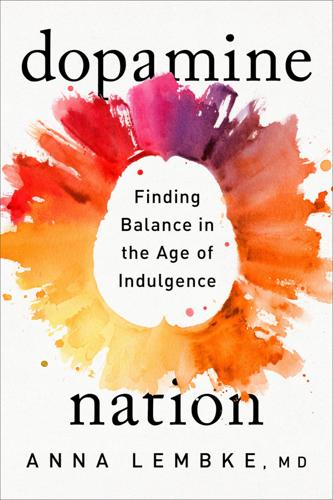
Dopamine Nation: Finding Balance in the Age of Indulgence
by
Anna Lembke
Published 24 Aug 2021
That’s because the evidence is indisputable: Exercise has a more profound and sustained positive effect on mood, anxiety, cognition, energy, and sleep than any pill I can prescribe. * * * — But pursuing pain is harder than pursuing pleasure. It goes against our innate reflex to avoid pain and pursue pleasure. It adds to our cognitive load: We have to remember that we will feel pleasure after pain, and we’re remarkably amnestic about this sort of thing. I know I have to relearn the lessons of pain every morning as I force myself to get out of bed and go exercise. Pursuing pain instead of pleasure is also countercultural, going against all the feel-good messages that pervade so many aspects of modern life.
…
It’s a terrifying feeling, which commonly contributes to thoughts of suicide. After all, if we don’t feel real, ending our lives feels inconsequential. The antidote to the false self is the authentic self. Radical honesty is a way to get there. It tethers us to our existence and makes us feel real in the world. It also lessens the cognitive load required to maintain all those lies, freeing up mental energy to live more spontaneously in the moment. When we’re no longer working to present a false self, we’re more open to ourselves and others. As the psychiatrist Mark Epstein wrote in his book Going on Being about his own journey toward authenticity, “No longer endeavoring to manage my environment, I began to feel invigorated, to find a balance, to permit a feeling of connection with the spontaneity of the natural world and with my own inner nature.”
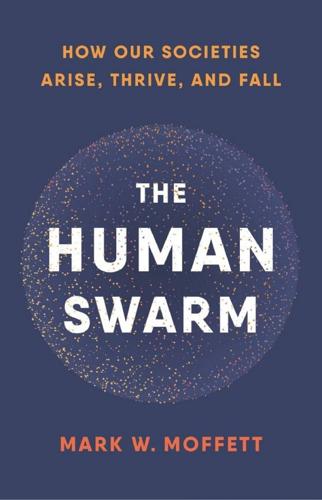
The Human Swarm: How Our Societies Arise, Thrive, and Fall
by
Mark W. Moffett
Published 31 Mar 2019
While managing the markers of our society could have contributed to the enlargement of the forebrain of humans compared to other animals, it isn’t likely to be the primary cause. Sitting in a public place, you register the physical, cultural, and other traits of those around you without much thought, a minimal investment of effort. A psychologist would say that markers reduce the cognitive load of social surveillance, freeing you up to read this book or converse with friends at the café. Even small tribes like Kenya’s El Molo, with its handful of people, take advantage of the low cost of social surveillance made possible by their shared dress, language, and so on—they may know every other El Molo intimately, but the El Molo are still an anonymous society.
…
Alex Todorov, an exuberant Bulgarian with a dramatic mop of hair and an office near Hasson’s in Princeton’s psychology department, has shown that a face glimpsed for a tenth of a second, a span of time too short to enter our awareness, is subconsciously assessed in terms of the person’s emotional state, sex, race, and (Todorov assures me) ethnicity and society, too.38 Our nimbleness with markers must reduce our cognitive load—the conscious effort we expend. And as Solomon Asch, a pioneer of social psychology, recognized in the 1940s, we can no more prevent these impressions than refrain from hearing a melody.39 Should markers, even in aggregate, come up short, signs of identity have occasionally been forced on people.
…
Reflections on the history of European state-making. In C Tilly, ed. The Formation of National States in Western Europe. Princeton, NJ: Princeton University Press. pp. 3–83. Tincoff R, PW Jusczyk. 1999. Some beginnings of word comprehension in 6-month-olds. Psychol Sci 10:172–175. Tindale RS, S Sheffey. 2002. Shared information, cognitive load, and group memory. Group Process Intergr Relat 5:5–18. Tishkoff SA, et al. 2007. Convergent adaptation of human lactase persistence in Africa and Europe. Nat Genet 39:31–40. Tobler R, et al. 2017. Aboriginal mitogenomes reveal 50,000 years of regionalism in Australia. Nature 544:180–184. Todorov A. 2017.

Designing Search: UX Strategies for Ecommerce Success
by
Greg Nudelman
and
Pabini Gabriel-Petit
Published 8 May 2011
Subjective Fickleness—How often the governing metaphor or paradigm changes as users move through an experience Simplicity/complexity—The degree to which the experience feels simple to grasp and operate, or is subtle and complex Forgiveness—The degree to which the experience invites exploration and guessing, or penalizes mistakes Grooviness—How much the experience allows users to get into a groove, forgetting about the mechanics of operating the system and becoming absorbed in the experience itself Wordiness—How much text users must read Cognitive load—How much users must think Using these measures (and any others you care to invent), it’s possible to characterize user experiences in a way that allows comparisons and goal-setting. You can measure whether an iteration of a design feels denser, flatter, or wordier than a previous one, and whether that’s enough to satisfy your users’ needs.
…
If a custom date range is desired, the customer can click the More link that opens a section with standard date boxes and calendar pickers allowing the customer to enter a custom date range instead. In many cases using this design pattern instead of a simple date range picker can save time and cognitive load on the person using the interface, while still allowing complete input flexibility with only a single extra click. In many cases, date ranges are orthogonal to the task at hand, yet many designers and engineers reach for the date picker as a kind of knee-jerk reaction. Instead, challenge yourself on your next project.

Principles of Web API Design: Delivering Value with APIs and Microservices
by
James Higginbotham
Published 20 Dec 2021
Delivering an API design progressively, rather than all at once, allows teams to meet the principle of welcoming changing requirements and delivering working software frequently. It also helps teams avoid last-minute scrambles that can negatively impact API design. The “seek the simple” principle encourages teams to design in a simple way. Teams should design an API that avoids clever designs that require a higher cognitive load to understanding. Instead, designs should be intuitive based on the use cases it addresses and should use vocabulary that is appropriate for the solution domain. They should offer only the necessary information to support the use case. The Agility of API Design-First The goal of API design-first should be to gather sufficient details to limit the risk of a breaking change in the future.
…
Dashed lines represent traditional coursed-grained boundaries that are further decomposed to reduce the complexity of more course-grained services. Microservice adoption has typically been used to decompose highly complex systems into independently deployed components rather than containing the complexity within a single codebase. The cognitive load required to understand a single microservice is lowered compared to that of understanding a single codebase. Testing becomes more approachable as well as automated test suites become more focused on the single component. This is shown in Figure 10.3. Figure 10.3 Microservices decompose high complexity into smaller, independently-deployable components.
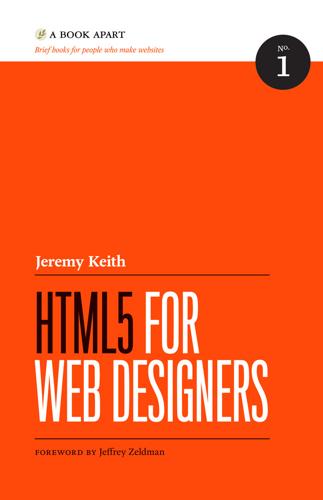
HTML5 for Web Designers
by
Jeremy Keith
Published 2 Jan 2010
You know the drill: you’re booking a flight or creating an event and you need to choose a date. Up pops a little calendar for you to choose a date from. These calendar widgets all do the same thing, but you’ll find that they’re implemented slightly differently on each site. A native calendar widget would smooth away the inconsistencies and reduce cognitive load during the date-picking process. HTML5 introduces a raft of input types specifically for dates and times: date is for a year, month, and day. datetime is for a year, month, and day in combination with hours, minutes, and seconds and time zone information. datetime-local is the same but without the time zone information.
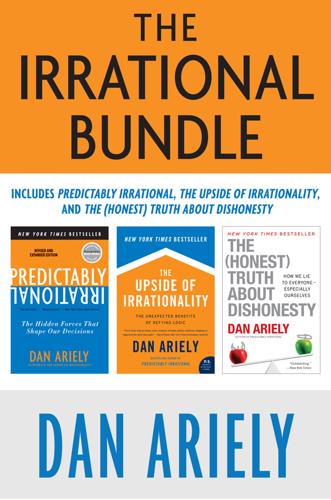
The Irrational Bundle
by
Dan Ariely
Published 3 Apr 2013
To reduce participants’ ability to think effectively, Baba and Sasha did not remove parts of their brains (as animal researchers sometimes do), nor did they use magnetic pulses to disrupt thinking (though there are machines that can do that). Instead, they decided to tax their participants’ ability to think by piling on what psychologists call cognitive load. Simply put, they wanted to find out whether having a lot on one’s mind would leave less cognitive room for resisting temptation and make people more likely to succumb to it. Baba and Sasha’s experiment went like this: they divided participants into two groups and asked members of one group to remember a two-digit number (something like, say, 35) and they asked members of the other group to remember a seven-digit number (say, 7581280).
…
Abagnale, Frank, 173 academia: conflicts of interest in, 82, 84–85 financial services industry’s influence in, 84–85 group-based projects in, 217–18 pharmaceutical companies’ influence in, 82 academic credentials, misrepresentation of, 135–36, 153, 154 accounting firms: collaborative dishonesty in, 218–21 “in good faith” notion and, 219–20 Adam and Eve, 98 Adams, Mike, 107 advertising agencies, link between creativity and dishonesty in, 186–87 aesthetic preferences, impact of favors on, 75–77 Afghanistan War, 152 altruistic cheating, 222–23, 225–26, 232 supervisory effect and, 227–28 American Medical Association, 79 Amir, On, 15, 18, 31–32, 39, 262 Apple, 184 atheists, swearing on bible and, 40, 41, 42 Atlantic, 214–15 Austen, Jane, 154–55 Avnaim-Pesso, Liora, 102 Ayal, Shahar, 197, 225, 263 bacterial infections, 192–93 Balleisen, Ed, 188 bankers, cheating among politicians vs., 243 banks: small misbehaviors of, 240 see also financial services industry Barkan, Racheli, 21, 23, 262 Barlow, John Perry, 1, 2 baseball, steroids in, 156 Bateson, Melissa, 224 Baumeister, Roy, 100, 104, 262–63 Baylor College of Medicine, 75–77 Bazerman, Max, 45, 260 Becker, Gary, 3–4, 14, 26 Be’er Sheva, Israel, farmer’s market in, 23–24 being caught, probability of, 4–5, 13, 14, 27 varying, in matrix task, 20–22 benevolent behavior, 23–24 Bible, as moral reminder, 40, 41, 42 billable hours, overstating of, 35–37 blind customers, benevolent behavior toward, 23–26 brain: higher connectivity in, 170 left-right split in, 164–65 of pathological liars, 169–70 Broken Windows Theory, 214–15, 249 businesspeople, self-monitoring of, 56–57 business schools, 248 group-based projects in, 217–18 cab drivers, benevolent behavior of, toward blind customer, 25–26 CAD/CAM equipment, in dentistry, 67–71 Cain, Daylian, 89 Canada, cheating in, 242 care for customers, in illegal businesses, 138–39 car mechanics, 93 Carnegie Mellon University, 197–207 car recommendation software, “fixing” answers in, 166–67 Cary, Apoth E., 246 cashless society, implications for dishonesty in, 34 Catch Me If You Can (Abagnale), 173 certificates for (false) achievements, 153–54 Chance, Zoë, 145, 264 charitable behavior, 23–24 cheating: aggressive cheaters and, 239 altruistic, 222–23, 225–26, 227–28, 232 being made blatantly aware of, 156–57 being watched and, 223–25, 227 collaborative, see collaborative cheating desire to benefit from, 12–14, 27, 29, 237 ego depletion, 104–6, 111–12 fake products’ impact on, 125–31 in golf, 55–65 honor codes and, 41–45 increasing creativity to increase level of, 184–87 as infection, 191–216; see also infectious nature of cheating infidelity and, 244–45 on IQ-like tests, self-deception and, 145–49, 151, 153–54, 156–57 reducing amount of, 39–51, 248–54 removing oneself from tempting situation and, 108–11 signing forms at top and, 46–51 Ten Commandments and, 39–40, 41, 44 what-the-hell effect and, 127–31, 136 see also dishonesty China, cheating in, 241–42 Chloé accessories, studies with, 123–34 Civil War veterans, 152 classes, infectious nature of cheating in, 195–97 Coca-Cola, stealing money vs., 32–33 cognitive dissonance, 81 cognitive load: ability to resist temptation and, 99–100 judges’ parole rulings and, 102–3 Cognitive Reflection Test (CRT), 173–74 coin logic, 167–68 collaborative cheating, 217–35 altruism and, 222–23, 225–26, 227–28, 232 being watched or monitored and, 223–25, 227–28, 234–35 emphasis on working as group or team and, 217–18 infectious nature of cheating in relation to, 221–22 social utility and, 222–23 companies: being one step removed from money and, 34–37 irrationality of, 51 see also corporate dishonesty compliments, insincere, 159 conflicts of interest, 67–95, 238, 248 in academia, 82, 84–85 in dentistry, 67–71, 93, 94, 230 disclosure and, 88–92 dots task and, 129 eradication of, 92–95 exclusion of experimental data and, 86–88 expert witnesses and, 85–86 in financial services industry, 83–85, 93, 94 governmental lobbyists and, 77–78, 94 honesty threshold and, 130–31 inherent inclination to return favors and, 74–75 medical procedures and, 71–74, 92–94, 229 pharmaceutical companies’ influence in academia and, 82 pharma reps and, 78–82 what-the-hell effect and, 129–31 congressional staffers, cheating among, 243 Congress members, PAC money misused by, 208–10 contractors, 93 Conway, Alan, 150–51 Cooper, Cynthia, 215 Cornell University, 250–51 corpora callosa, 164–65 corporate dishonesty: cheating a little bit and, 239–40 Enron collapse and, 1–3, 192, 207, 215, 234 recent spread of, 192, 207–8 cost-benefit analysis, 4–5, 26–27, 237, 239 infectious nature of cheating and, 201–3, 205 see also Simple Model of Rational Crime counterfeits, see fake products creativity, 88, 163–89, 238 brain structure and, 164–65 dark side of, 187–89 fooling oneself and, 165–67 increasing, to increase level of cheating, 184–87 infidelity and, 244 intelligence vs., as predictor of dishonesty, 172–77 link between dishonesty and, 170–72, 186–89 logical-sounding rationales for choices and, 163–64 measures of, 171 moral flexibility and, 186–87 pathological liars and, 168–70 revenge and, 177–84 credit card companies, 239–40 crime, reducing, 52 cultural differences, 240–43 Danziger, Shai, 102 decision making: creating efficient process for, 167–68 effectiveness of group work in, 217–18 rationalization process and, 163–67 Denfield, George, 75 dentists: continuity of care and, 228–31 treating patients using equipment that they own, 67–68, 93–94 unnecessary work and, 67–71 depletion, see ego depletion dieting, 98, 109, 112–13, 114–15 what-the-hell effect and, 127, 130 “dine-and-dash,” 79 diplomas, lying about, 135–36, 153, 154 disabled person, author’s adoption of role of, 143–44 disclosure, 88–92, 248 study on impact of, 89–92 discounting, fixed vs. probabilistic, 194 dishonesty: causes of, 3–4, 5 collaborative, see collaborative cheating cultural differences and, 240–43 discouraging small and ubiquitous forms of, 239–40 importance of first act of, 137 infectious nature of, 191–216; see also infectious nature of cheating intelligence vs. creativity as predictor of, 172–77 link between creativity and, 170–72, 186–89 opportunities for, passed up by vast majority, 238 of others, fake products and assessing of, 131–34 rational and irrational forces in, 254 reducing amount of, 39–51, 248–54 society’s means for dealing with, 4–5 summary of forces that shape (figure), 245 when traveling, 183n see also cheating dissertation proposals and defenses, 101 distance factors, 238 in golf, 58–59 stealing Coca-Cola vs. money and, 32–33 token experiment and, 33–34 doctors: consulting for or investing in drug companies, 82, 93 continuity of care and, 228–29 lecturing about drugs, 81 pharma reps and, 78–82 treating or testing patients with equipment that they own, 92–94 Dodd-Frank Wall Street Reform and Consumer Protection Act, 234 dots task: conflict of interest and, 129 description of, 127–29 link between creativity and dishonesty and, 171–72, 185–86 what-the-hell effect and, 129–31 downloads, illegal, 137–39 dressing above one’s station, 120–21 Ebbers, Bernie, 13 ego depletion, 100–116, 238, 249 basic idea behind, 101 cheating and, 104–6 in everyday life, 112–16 removing oneself from tempting situations and, 108–11, 115–16 of Sex and the City’s Samantha Jones, 103 sometimes succumbing to temptation and, 114–15 sudden deaths among students’ grandmothers at exam time and, 106–8 ego motivation, 27 England, cheating in, 242 Enron, 1–3, 192, 207, 215, 234 essay mills, 210–13 exams, sudden deaths among students’ grandmothers and, 106–8 exhaustion, 249 consumption of junk food and, 97–98 judges’ parole rulings and, 102–3 see also ego depletion experimental data, exclusion of, 86–88 expert witnesses, 85–86 explanations, logical-sounding, creation of, 163–65 external signaling, 120–22 dressing above one’s station and, 120–21 fake products and, 121–22 failures, tendency to turn blind eye to, 151 “fair,” determination of what is, 57 fake products, 119, 121–40, 238 illegal downloads and, 137–39 misrepresentation of academic credentials and, 135–36 rationalizations and, 134–35 self-signaling and, 123–26, 135 signaling value of authentic version diluted by, 121–22 suspiciousness of others and, 131–34 what-the-hell effect and, 127–31, 135 farmer’s market, benevolent behavior toward blind customer in, 23–24 fashion, 117–26 counterfeit goods and, 119, 121–22, 121–40, 123–26; see also fake products dressing above one’s station and, 120–21 external signaling and, 120–22 self-signaling and, 122–26 Fastow, Andrew, 2 favors, 74–82 aesthetic preferences and, 75–77 governmental lobbyists and, 77–78 inherent inclination to return, 74–75 pharma reps and, 78–82 see also conflicts of interest Fawal-Farah, Freeda, 117, 118 FBI, 215 Fedorikhin, Sasha, 99–100 Feynman, Richard, 165 financial crisis of 2008, 83–85, 192, 207, 234, 246–47 financial favors, aesthetic preferences and, 77 financial services industry: anonymous monitoring and, 234–35 cheating among politicians vs., 243 conflicts of interest in, 83–85, 93, 94 government regulation of, 234 fishing, lying about, 28 Frederick, Shane, 173 friends, invited to join in questionable behavior, 195 fudge factor theory, 27–29, 237 acceptable rate of lying and, 28–29, 91 distance between actions and money and, 34–37 getting people to cheat less and, 39–51 infidelity and, 244 rationalization of selfish desires and, 53 stealing Coca-Cola vs. money and, 32–33 Gazzaniga, Michael, 164–65 Generally Accepted Accounting Principles (GAAP), 219–20 generous behavior, 23–24 Get Rich Cheating (Kreisler), 14 Gilovich, Tom, 250, 263–64 Gino, Francesca, 45, 104, 123, 127, 131, 145, 170, 184, 197, 225, 234–35, 242, 258–59 Glass, Ira, 6 Gneezy, Ayelet, 177, 257–58 golf, 55–65 cheating by “average golfer” vs. study participants and, 63–64 mistallying score in, 61–64 moving location of ball in, 58–59, 63 mulligans in, 60–61, 63–64 self-monitoring in, 56–57 survey on cheating in, 57–64 government regulations, 234 grandmothers, sudden deaths of, at exam time, 106–8 gray matter, 169–70 Green, Jennifer Wideman, 117 grocery shopping, ego depletion and, 109, 112–13 group or team work, 220–23 performance unaffected by, 233 possible benefits of, 223 predominance of, in professional lives, 217–18, 235 social utility and, 222–23 see also collaborative cheating Grüneisen, Aline, 210–11, 257 guilt, self-inflicted pain and, 250–52 Harford, Tim, 3–4 Harper’s Bazaar, 117–18 Harvard Medical School, 82 Harvey, Ann, 75 Henn, Steve, 209 heretics, external signaling of, 120 Hinduism, 25 honesty threshold, 130–31 honor codes, 41–45, 204 ideological organizations, 232n “I knew it all along” feeling, 149 illegal businesses, loyalty and care for customers in, 138–39 impulsive (or emotional) vs. rational (or deliberative) parts of ourselves, 97–106 cognitive load and, 99–100 ego depletion and, 100–106 exhaustion and, 97–98 Inbar, Yoel, 250, 264 infectious nature of cheating, 191–216, 249 bacterial infections compared to, 192–93 in class, 195–97 collaborative cheating in relation to, 221–22 Congress members’ misuse of PAC money and, 208–10 corporate dishonesty and, 192, 207–8 cost-benefit analysis and, 201–3, 205 essay mills and, 210–13 matrix task and, 197–204 positive side of moral contagion and, 215–16 regaining ethical health and, 214–15 slow and subtle process of accretion in, 193–94, 214–15 social norms and, 195, 201–3, 205–7, 209 social outsiders and, 205–7 vending machine experiment and, 194–95 infidelity, 244–45 “in good faith” notion, 219–20 Inside Job, 84–85 insurance claims, 49–51 intelligence: creativity vs., as predictor of dishonesty, 172–77 measures of, 173–75 IQ-like tests, cheating and self-deception on, 145–49 certificates emphasizing (false) achievement and, 153–54 increasing awareness of cheating and, 156–57 individuals’ tendency to turn a blind eye to their own failures and, 151 IRS, 47–49 Islam, 249 Israel, cheating in, 241 Italy, cheating in, 242 Jerome, Jerome K., 28 Jobs, Steve, 184 Jones, Bobby, 56 Jones, Marilee, 136 Judaism, 45, 249 judges, exhausted, parole decisions and, 102–3 junk food, exhaustion and consumption of, 97–98 Keiser, Kenneth, 135 Kelling, George, 214–15 John F.
…
Abagnale, Frank, 173 academia: conflicts of interest in, 82, 84–85 financial services industry’s influence in, 84–85 group-based projects in, 217–18 pharmaceutical companies’ influence in, 82 academic credentials, misrepresentation of, 135–36, 153, 154 accounting firms: collaborative dishonesty in, 218–21 “in good faith” notion and, 219–20 Adam and Eve, 98 Adams, Mike, 107 advertising agencies, link between creativity and dishonesty in, 186–87 aesthetic preferences, impact of favors on, 75–77 Afghanistan War, 152 altruistic cheating, 222–23, 225–26, 232 supervisory effect and, 227–28 American Medical Association, 79 Amir, On, 15, 18, 31–32, 39, 262 Apple, 184 atheists, swearing on bible and, 40, 41, 42 Atlantic, 214–15 Austen, Jane, 154–55 Avnaim-Pesso, Liora, 102 Ayal, Shahar, 197, 225, 263 bacterial infections, 192–93 Balleisen, Ed, 188 bankers, cheating among politicians vs., 243 banks: small misbehaviors of, 240 see also financial services industry Barkan, Racheli, 21, 23, 262 Barlow, John Perry, 1, 2 baseball, steroids in, 156 Bateson, Melissa, 224 Baumeister, Roy, 100, 104, 262–63 Baylor College of Medicine, 75–77 Bazerman, Max, 45, 260 Becker, Gary, 3–4, 14, 26 Be’er Sheva, Israel, farmer’s market in, 23–24 being caught, probability of, 4–5, 13, 14, 27 varying, in matrix task, 20–22 benevolent behavior, 23–24 Bible, as moral reminder, 40, 41, 42 billable hours, overstating of, 35–37 blind customers, benevolent behavior toward, 23–26 brain: higher connectivity in, 170 left-right split in, 164–65 of pathological liars, 169–70 Broken Windows Theory, 214–15, 249 businesspeople, self-monitoring of, 56–57 business schools, 248 group-based projects in, 217–18 cab drivers, benevolent behavior of, toward blind customer, 25–26 CAD/CAM equipment, in dentistry, 67–71 Cain, Daylian, 89 Canada, cheating in, 242 care for customers, in illegal businesses, 138–39 car mechanics, 93 Carnegie Mellon University, 197–207 car recommendation software, “fixing” answers in, 166–67 Cary, Apoth E., 246 cashless society, implications for dishonesty in, 34 Catch Me If You Can (Abagnale), 173 certificates for (false) achievements, 153–54 Chance, Zoë, 145, 264 charitable behavior, 23–24 cheating: aggressive cheaters and, 239 altruistic, 222–23, 225–26, 227–28, 232 being made blatantly aware of, 156–57 being watched and, 223–25, 227 collaborative, see collaborative cheating desire to benefit from, 12–14, 27, 29, 237 ego depletion, 104–6, 111–12 fake products’ impact on, 125–31 in golf, 55–65 honor codes and, 41–45 increasing creativity to increase level of, 184–87 as infection, 191–216; see also infectious nature of cheating infidelity and, 244–45 on IQ-like tests, self-deception and, 145–49, 151, 153–54, 156–57 reducing amount of, 39–51, 248–54 removing oneself from tempting situation and, 108–11 signing forms at top and, 46–51 Ten Commandments and, 39–40, 41, 44 what-the-hell effect and, 127–31, 136 see also dishonesty China, cheating in, 241–42 Chloé accessories, studies with, 123–34 Civil War veterans, 152 classes, infectious nature of cheating in, 195–97 Coca-Cola, stealing money vs., 32–33 cognitive dissonance, 81 cognitive load: ability to resist temptation and, 99–100 judges’ parole rulings and, 102–3 Cognitive Reflection Test (CRT), 173–74 coin logic, 167–68 collaborative cheating, 217–35 altruism and, 222–23, 225–26, 227–28, 232 being watched or monitored and, 223–25, 227–28, 234–35 emphasis on working as group or team and, 217–18 infectious nature of cheating in relation to, 221–22 social utility and, 222–23 companies: being one step removed from money and, 34–37 irrationality of, 51 see also corporate dishonesty compliments, insincere, 159 conflicts of interest, 67–95, 238, 248 in academia, 82, 84–85 in dentistry, 67–71, 93, 94, 230 disclosure and, 88–92 dots task and, 129 eradication of, 92–95 exclusion of experimental data and, 86–88 expert witnesses and, 85–86 in financial services industry, 83–85, 93, 94 governmental lobbyists and, 77–78, 94 honesty threshold and, 130–31 inherent inclination to return favors and, 74–75 medical procedures and, 71–74, 92–94, 229 pharmaceutical companies’ influence in academia and, 82 pharma reps and, 78–82 what-the-hell effect and, 129–31 congressional staffers, cheating among, 243 Congress members, PAC money misused by, 208–10 contractors, 93 Conway, Alan, 150–51 Cooper, Cynthia, 215 Cornell University, 250–51 corpora callosa, 164–65 corporate dishonesty: cheating a little bit and, 239–40 Enron collapse and, 1–3, 192, 207, 215, 234 recent spread of, 192, 207–8 cost-benefit analysis, 4–5, 26–27, 237, 239 infectious nature of cheating and, 201–3, 205 see also Simple Model of Rational Crime counterfeits, see fake products creativity, 88, 163–89, 238 brain structure and, 164–65 dark side of, 187–89 fooling oneself and, 165–67 increasing, to increase level of cheating, 184–87 infidelity and, 244 intelligence vs., as predictor of dishonesty, 172–77 link between dishonesty and, 170–72, 186–89 logical-sounding rationales for choices and, 163–64 measures of, 171 moral flexibility and, 186–87 pathological liars and, 168–70 revenge and, 177–84 credit card companies, 239–40 crime, reducing, 52 cultural differences, 240–43 Danziger, Shai, 102 decision making: creating efficient process for, 167–68 effectiveness of group work in, 217–18 rationalization process and, 163–67 Denfield, George, 75 dentists: continuity of care and, 228–31 treating patients using equipment that they own, 67–68, 93–94 unnecessary work and, 67–71 depletion, see ego depletion dieting, 98, 109, 112–13, 114–15 what-the-hell effect and, 127, 130 “dine-and-dash,” 79 diplomas, lying about, 135–36, 153, 154 disabled person, author’s adoption of role of, 143–44 disclosure, 88–92, 248 study on impact of, 89–92 discounting, fixed vs. probabilistic, 194 dishonesty: causes of, 3–4, 5 collaborative, see collaborative cheating cultural differences and, 240–43 discouraging small and ubiquitous forms of, 239–40 importance of first act of, 137 infectious nature of, 191–216; see also infectious nature of cheating intelligence vs. creativity as predictor of, 172–77 link between creativity and, 170–72, 186–89 opportunities for, passed up by vast majority, 238 of others, fake products and assessing of, 131–34 rational and irrational forces in, 254 reducing amount of, 39–51, 248–54 society’s means for dealing with, 4–5 summary of forces that shape (figure), 245 when traveling, 183n see also cheating dissertation proposals and defenses, 101 distance factors, 238 in golf, 58–59 stealing Coca-Cola vs. money and, 32–33 token experiment and, 33–34 doctors: consulting for or investing in drug companies, 82, 93 continuity of care and, 228–29 lecturing about drugs, 81 pharma reps and, 78–82 treating or testing patients with equipment that they own, 92–94 Dodd-Frank Wall Street Reform and Consumer Protection Act, 234 dots task: conflict of interest and, 129 description of, 127–29 link between creativity and dishonesty and, 171–72, 185–86 what-the-hell effect and, 129–31 downloads, illegal, 137–39 dressing above one’s station, 120–21 Ebbers, Bernie, 13 ego depletion, 100–116, 238, 249 basic idea behind, 101 cheating and, 104–6 in everyday life, 112–16 removing oneself from tempting situations and, 108–11, 115–16 of Sex and the City’s Samantha Jones, 103 sometimes succumbing to temptation and, 114–15 sudden deaths among students’ grandmothers at exam time and, 106–8 ego motivation, 27 England, cheating in, 242 Enron, 1–3, 192, 207, 215, 234 essay mills, 210–13 exams, sudden deaths among students’ grandmothers and, 106–8 exhaustion, 249 consumption of junk food and, 97–98 judges’ parole rulings and, 102–3 see also ego depletion experimental data, exclusion of, 86–88 expert witnesses, 85–86 explanations, logical-sounding, creation of, 163–65 external signaling, 120–22 dressing above one’s station and, 120–21 fake products and, 121–22 failures, tendency to turn blind eye to, 151 “fair,” determination of what is, 57 fake products, 119, 121–40, 238 illegal downloads and, 137–39 misrepresentation of academic credentials and, 135–36 rationalizations and, 134–35 self-signaling and, 123–26, 135 signaling value of authentic version diluted by, 121–22 suspiciousness of others and, 131–34 what-the-hell effect and, 127–31, 135 farmer’s market, benevolent behavior toward blind customer in, 23–24 fashion, 117–26 counterfeit goods and, 119, 121–22, 121–40, 123–26; see also fake products dressing above one’s station and, 120–21 external signaling and, 120–22 self-signaling and, 122–26 Fastow, Andrew, 2 favors, 74–82 aesthetic preferences and, 75–77 governmental lobbyists and, 77–78 inherent inclination to return, 74–75 pharma reps and, 78–82 see also conflicts of interest Fawal-Farah, Freeda, 117, 118 FBI, 215 Fedorikhin, Sasha, 99–100 Feynman, Richard, 165 financial crisis of 2008, 83–85, 192, 207, 234, 246–47 financial favors, aesthetic preferences and, 77 financial services industry: anonymous monitoring and, 234–35 cheating among politicians vs., 243 conflicts of interest in, 83–85, 93, 94 government regulation of, 234 fishing, lying about, 28 Frederick, Shane, 173 friends, invited to join in questionable behavior, 195 fudge factor theory, 27–29, 237 acceptable rate of lying and, 28–29, 91 distance between actions and money and, 34–37 getting people to cheat less and, 39–51 infidelity and, 244 rationalization of selfish desires and, 53 stealing Coca-Cola vs. money and, 32–33 Gazzaniga, Michael, 164–65 Generally Accepted Accounting Principles (GAAP), 219–20 generous behavior, 23–24 Get Rich Cheating (Kreisler), 14 Gilovich, Tom, 250, 263–64 Gino, Francesca, 45, 104, 123, 127, 131, 145, 170, 184, 197, 225, 234–35, 242, 258–59 Glass, Ira, 6 Gneezy, Ayelet, 177, 257–58 golf, 55–65 cheating by “average golfer” vs. study participants and, 63–64 mistallying score in, 61–64 moving location of ball in, 58–59, 63 mulligans in, 60–61, 63–64 self-monitoring in, 56–57 survey on cheating in, 57–64 government regulations, 234 grandmothers, sudden deaths of, at exam time, 106–8 gray matter, 169–70 Green, Jennifer Wideman, 117 grocery shopping, ego depletion and, 109, 112–13 group or team work, 220–23 performance unaffected by, 233 possible benefits of, 223 predominance of, in professional lives, 217–18, 235 social utility and, 222–23 see also collaborative cheating Grüneisen, Aline, 210–11, 257 guilt, self-inflicted pain and, 250–52 Harford, Tim, 3–4 Harper’s Bazaar, 117–18 Harvard Medical School, 82 Harvey, Ann, 75 Henn, Steve, 209 heretics, external signaling of, 120 Hinduism, 25 honesty threshold, 130–31 honor codes, 41–45, 204 ideological organizations, 232n “I knew it all along” feeling, 149 illegal businesses, loyalty and care for customers in, 138–39 impulsive (or emotional) vs. rational (or deliberative) parts of ourselves, 97–106 cognitive load and, 99–100 ego depletion and, 100–106 exhaustion and, 97–98 Inbar, Yoel, 250, 264 infectious nature of cheating, 191–216, 249 bacterial infections compared to, 192–93 in class, 195–97 collaborative cheating in relation to, 221–22 Congress members’ misuse of PAC money and, 208–10 corporate dishonesty and, 192, 207–8 cost-benefit analysis and, 201–3, 205 essay mills and, 210–13 matrix task and, 197–204 positive side of moral contagion and, 215–16 regaining ethical health and, 214–15 slow and subtle process of accretion in, 193–94, 214–15 social norms and, 195, 201–3, 205–7, 209 social outsiders and, 205–7 vending machine experiment and, 194–95 infidelity, 244–45 “in good faith” notion, 219–20 Inside Job, 84–85 insurance claims, 49–51 intelligence: creativity vs., as predictor of dishonesty, 172–77 measures of, 173–75 IQ-like tests, cheating and self-deception on, 145–49 certificates emphasizing (false) achievement and, 153–54 increasing awareness of cheating and, 156–57 individuals’ tendency to turn a blind eye to their own failures and, 151 IRS, 47–49 Islam, 249 Israel, cheating in, 241 Italy, cheating in, 242 Jerome, Jerome K., 28 Jobs, Steve, 184 Jones, Bobby, 56 Jones, Marilee, 136 Judaism, 45, 249 judges, exhausted, parole decisions and, 102–3 junk food, exhaustion and consumption of, 97–98 Keiser, Kenneth, 135 Kelling, George, 214–15 John F.
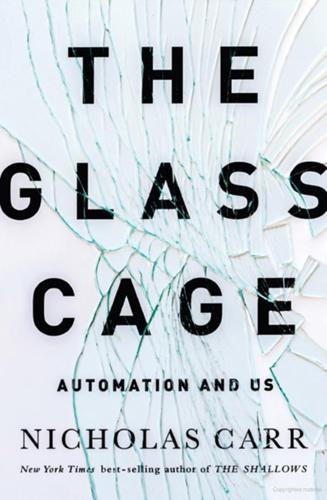
The Glass Cage: Automation and Us
by
Nicholas Carr
Published 28 Sep 2014
The biological processes that constitute “thinking” emerge not just from neural computations in the skull but from the actions and sensory perceptions of the entire body. “For example,” explains Andy Clark, a philosopher of mind at the University of Edinburgh who has written widely on embodied cognition, “there’s good evidence that the physical gestures we make while we speak actually reduce the ongoing cognitive load on the brain, and that the biomechanics of the muscle and tendon systems of the legs hugely simplify the problem of controlled walking.”53 The retina, recent research shows, isn’t a passive sensor sending raw data to the brain, as was once assumed; it actively shapes what we see. The eye has smarts of its own.54 Even our conceptual musings appear to involve the body’s systems for sensing and moving.
…
But the cost of accommodating the dilettante is a demeaning of expertise. Peter Merholz, a respected software-design consultant, counsels programmers to seek “frictionlessness” and “simplicity” in their products. Successful devices and applications, he says, hide their technical complexity behind user-friendly interfaces. They minimize the cognitive load they place on users: “Simple things don’t require a lot of thought. Choices are eliminated, recall is not required.”1 That’s a recipe for creating the kinds of applications that, as Christof van Nimwegen’s Cannibals and Missionaries experiment demonstrated, bypass the mental processes of learning, skill building, and memorization.
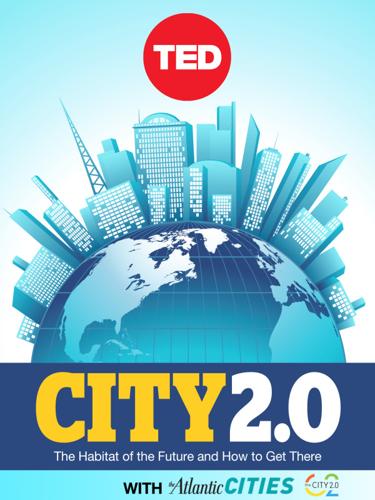
City 2.0: The Habitat of the Future and How to Get There
by
Ted Books
Published 20 Feb 2013
SnapGoods sells itself with the slogan “Own less, do more,” a nod to the idea that our culture increasingly values the accumulation of experiences over assets (if you don’t own a high-end camera with multiple lenses and tripods, maybe you can afford to take a trip to Yosemite as an amateur photographer with borrowed gear). “People don’t want the cognitive load associated with owning,” reasons Neal Gorenflo, the publisher of Shareable magazine. Stuff you own requires care. Strength in numbers All of these models — alongside many others such as co-working spaces and shared nannies — at the end of the day are about efficiency, even if they also speak to altruism.
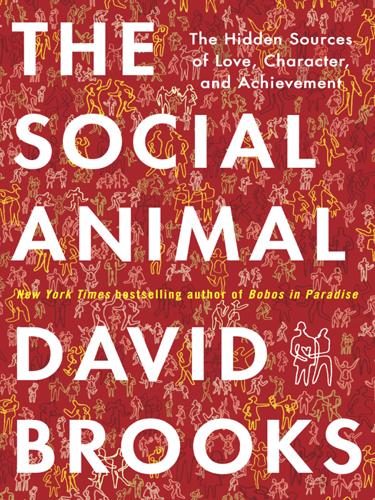
The Social Animal: The Hidden Sources of Love, Character, and Achievement
by
David Brooks
Published 8 Mar 2011
The real engine of change, Harold believed, was a change in the cognitive load. Over the past few decades, technological and social revolution had put greater and greater demands on human cognition. People are now compelled to absorb and process a much more complicated array of information streams. They are compelled to navigate much more complicated social environments. This is happening in both localized and globalized sectors, and it would be happening if you tore up every free-trade deal ever inked. The globalization paradigm emphasizes the fact that information can travel 15,000 miles in an instant. But the cognitive-load paradigm holds that the most important part of the journey is the last few inches—the space between a person’s eyes or ears and the various regions of the brain.
…
Through what sort of lens does the individual perceive the information? Does the individual have the capacity to understand the information? Does he or she have the training to exploit it? What emotions and ideas does the information set off? Are there cultural assumptions that distort or enhance the way it is understood? This change in the cognitive load has had many broad effects. It has changed the role of women, who are able to compete equally in the arena of mental skill. It has changed the nature of marriage, as men and women look for partners who can match and complement each other’s mental abilities. It has led to assortative mating, as highly educated people marry each other and less-educated people marry each other.

Duped: Double Lives, False Identities, and the Con Man I Almost Married
by
Abby Ellin
Published 15 Jan 2019
MOST OF US have the capacity to manipulate. To some extent that’s a social skill. Still, there’s a difference between stage-managing a situation and being calculating and unscrupulous. I’d like to think that I couldn’t maintain an extended fabrication like Philby or Young, that the stress of it—the “work” or cognitive load—would cause crow’s feet, migraines, and ulcers. I’m pretty sure I’d have difficulty keeping my stories straight. Did I tell him I was anti-KGB, or pro-? Did I grow up in Omaha or Detroit? And what do I do for a living again? In extreme circumstances, like if I lived in Nazi Germany and my survival was at stake, I suspect I could do it.
…
For most of us, the truth comes flooding into our psyche, making us feel bad. But for the hypocrites, those who have the dams installed, the truth stays tucked away, allowing them to live the lie—until the dam breaks. It’s easier to get away with lying if we actually believe our own bullshit, because it “eliminates the costly cognitive load that is typically associated with deceiving,” said evolutionary biologist and sociobiologist Robert Trivers, whose 2012 book, Folly of Fools, is all about self-deception.34 Trivers, who was counted among Time magazine’s one hundred greatest thinkers and scientists of the twentieth century, believes that we must deceive ourselves in order to deceive others more easily.

Ghost Work: How to Stop Silicon Valley From Building a New Global Underclass
by
Mary L. Gray
and
Siddharth Suri
Published 6 May 2019
Ultimately, to be good at their jobs, workers desire, and arguably depend on, the social aspects of work—the gab, the gossip, the informal trading of tips and support. Ghost work relies on the kindness of strangers. Workers use collaboration to puzzle through, pragmatically, what to do in a setting that has little guidance.1 They also take comfort in the relief of others sharing the cognitive load of feeling lost, much like talking through a work frustration is, practically speaking, a way of moving work forward.2 Collaboration among on-demand workers lays bare the deeply social experiences and meanings that work produces in our lives.3 Workers’ penchant for collaboration also highlights how the presence and effort of people behind the scenes are the true currency and value of this labor market.
…
Sociologist Anselm Strauss called this articulation work, or the “overall process of putting all the work elements together and keeping them together.” See Anselm Strauss, “The Articulation of Project Work: An Organizational Process,” Sociological Quarterly 29, no. 2 (June 1, 1988): 163–78. [back] 2. Much as Susan Leigh Star anticipated, computer adoption, and with it assumptions that computational processes would take over the cognitive load of collaboration, made articulation work even more central, as it “manages the consequences of the distributed nature of the work” that are otherwise thought solved by technologies. See Susan Leigh Star and Anselm Strauss, “Layers of Silence, Arenas of Voice: The Ecology of Visible and Invisible Work,” Computer Supported Cooperative Work (CSCW) 8, no. 1–2 (March 1, 1999): 9–30.

The Sirens' Call: How Attention Became the World's Most Endangered Resource
by
Chris Hayes
Published 28 Jan 2025
We were on the glide path toward Huxley’s vision of dystopia, particularly in the West, rather than Orwell’s.[21] Postman didn’t quite frame his argument in terms of attention, but what I take from it is that in competitive attention markets, amusement will outcompete information, and spectacle will outcompete arguments. The more easily something attracts our attention, the lower its cognitive load, the less friction there is for us to be drawn to it. Why read a book when you can watch a movie? Why read a newspaper when you can play a video game? There’s something more than a bit “I don’t even own a TV” snobby about the Postman argument, to be sure. But it’s also indisputable that the attentional power of TV and its formal grammar utterly transformed public discourse and the functioning of American democracy.
…
BACK TO NOTE REFERENCE 7 David Carr, “The Coolest Magazine on the Planet,” New York Times, July 27, 2003, accessed May 28, 2024, www.nytimes.com/2003/07/27/books/the-coolest-magazine-on-the-planet.html. BACK TO NOTE REFERENCE 8 Andras N. Zsidó, Diana T. Stecina, Rebecca Cseh, and Michael C. Hout, “The Effects of Task-Irrelevant Threatening Stimuli on Orienting- and Executive Attentional Processes Under Cognitive Load,” British Journal of Psychology 113, no. 2 (2022): 412–33, https://doi.org/10.1111/bjop.12540. BACK TO NOTE REFERENCE 9 Alvin Toffler, Future Shock (New York: Random House, 1970), 371. BACK TO NOTE REFERENCE 10 Toffler, Future Shock, 366. BACK TO NOTE REFERENCE 11 Herbert A.

Becoming Bulletproof: Protect Yourself, Read People, Influence Situations, and Live Fearlessly
by
Evy Poumpouras
Published 20 Apr 2020
The Hormetic Effect, however, isn’t just about physical adaptation; it’s about adapting mentally as well. Our Secret Service training was designed around this concept. Over the course of months, our instructors incrementally exposed us to greater and greater amounts of stress to the point where we could function highly, both mentally and physically, while under extreme cognitive loads. We needed to learn how to run AND shoot AND maneuver our way out of a burning building AND keep our protectee safe—all at the same time. That way, for example, when our presidential motorcade was assaulted by multiple adversaries from multiple directions, we were able to logically think, swiftly move, and effectively fight our way to safety without losing the life of our protectee.
…
If there is something in your speech that you don’t like, take note of it and try it differently. Identify those things that you wish to change. But do it one step at a time. For example, if you speak too fast, use lots of filler words, and have a high pitch, don’t try to fix everything at once. Resolving to change your voice actually makes for a huge cognitive load because most of these behaviors are instinctive or unconscious. You’ve also been probably doing them for a really long time. Instead, start with one. For instance, try slowing down your speech and spend one month focusing solely on that adjustment. It takes about twenty-eight days to change a habit, and that’s what we are trying to do here—change your paralinguistic habits.
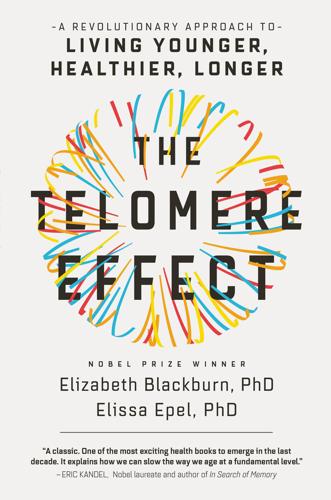
The Telomere Effect: A Revolutionary Approach to Living Younger, Healthier, Longer
by
Dr. Elizabeth Blackburn
and
Dr. Elissa Epel
Published 3 Jan 2017
Ironic error may also be harmful to telomeres. We know that chronic stress can shorten telomeres—but if we try to manage our stressful thoughts by sinking the bad thoughts into the deepest waters of our subconscious, it may backfire. The chronically stressed brain’s resources are already taxed (we call this cognitive load), making it even harder to successfully suppress thoughts. Instead of less stress, we get more. A classic example of suppression’s dark power comes from people with post-traumatic stress disorder (PTSD), who—understandably—don’t want to remember events that have caused them terrible distress.
…
Or like Peter eating pound cake on his way to eat a healthy salad for lunch? Studies of obese people suggest a similar compulsive aspect of overeating, with dysregulation in the brain’s reward system. Dieting can create a semiaddictive state, and it’s also just plain stressful. Monitoring calories causes cognitive load, meaning that it uses up the brain’s limited attention and increases how much stress you feel.15 Think of Peter, spending years trying to eat fewer sweets and calories. Obesity researchers have a name for this kind of long-term dieting mentality: cognitive dietary restraint. Restrainers devote a lot of their time to wishing, wanting, and trying to eat less, but their actual caloric intake is no lower than people who are unrestrained.
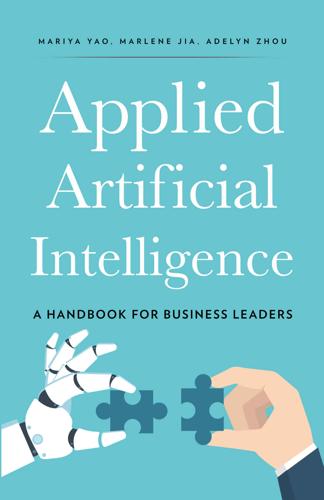
Applied Artificial Intelligence: A Handbook for Business Leaders
by
Mariya Yao
,
Adelyn Zhou
and
Marlene Jia
Published 1 Jun 2018
Don't do it unless you already have a defined plan of implementation, allies in the C-Suite to champion that plan, and mutually agreed-upon evaluation metrics at incremental deadlines. What AI Can Do for Enterprise Functions Current AI-based solutions are very good at streamlining processes and taking over rote tasks such as triggering a workflow. Automation frees up the cognitive load of your employees so that they can focus on more meaningful aspects of their jobs. For example, mundane tasks can take up to 75 percent of a recruiter's job. Handing off the responsibility of filtering resumés, which consists primarily of matching terms or looking for specific experiential phrases, to an AI-based solution can free up to half of the recruiter's day for other tasks.
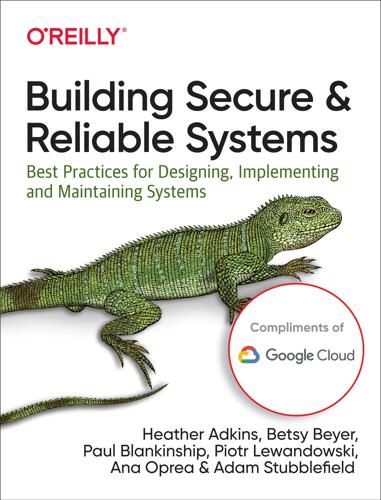
Building Secure and Reliable Systems: Best Practices for Designing, Implementing, and Maintaining Systems
by
Heather Adkins
,
Betsy Beyer
,
Paul Blankinship
,
Ana Oprea
,
Piotr Lewandowski
and
Adam Stubblefield
Published 29 Mar 2020
Minimum Acceptable Security Version Numbers Over time, deny lists become large and unwieldy as entries are appended. You can use a separate Security Version Number, written as Release[SVN], to drop older entries from the deny list, while still preventing them from being installed. As a result, you reduce the cognitive load on the humans responsible for the system. Keeping Release[SVN] independent of other version notions allows a compact and mathematically comparable way to logically follow large numbers of releases without requiring the overhead space a deny list needs. Whenever you apply a critical security fix and demonstrate its stability, you increment Release[SVN], marking a security milestone that you use to regulate rollback decisions.
…
As a result, organizational resilience to outages may improve. For example, at Google, we centralized on Chrome, its extensions, and any controls and tools associated with it as the single platform sufficient for remote access. Introducing an emergency mode into Chrome extensions allowed us to achieve the minimum possible increase in cognitive load up front, while retaining the option to integrate it into more extensions later. To ensure that your responders exercise emergency access practices regularly, introduce policies that integrate emergency access into the daily habits of on-call staff, and continuously validate the usability of the relevant systems.
…
You should also train engineers to create notes about their response activities, so they can later differentiate these activities from artifacts left by an attacker. Processes and Procedures By establishing a set of processes and procedures to follow before an incident occurs, you drastically reduce the response time and cognitive load for responders. For example, we recommend the following: Defining rapid procurement methods for hardware and software. You may need additional equipment or resources, such as servers, software, or fuel for generators, during emergencies. Establishing contract approval processes for outsourcing services.
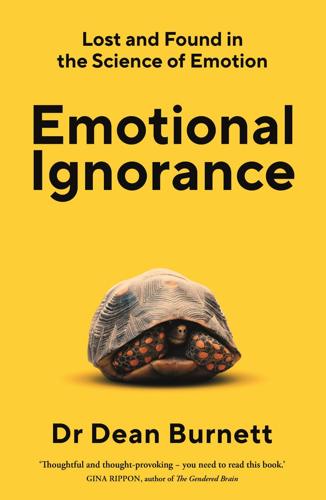
Emotional Ignorance: Lost and Found in the Science of Emotion
by
Dean Burnett
Published 10 Jan 2023
Sundrup, ‘Getting away from them all: managing exhaustion from social interaction with telework’, Journal of Organizational Behavior, 2017, 38(7): pp. 977–995. 10 Ross, S.A., ‘Compensation, incentives, and the duality of risk aversion and riskiness’, The Journal of Finance, 2004, 59(1): pp. 207–225. 11 Van Dillen, L.F. and H. van Steenbergen, ‘Tuning down the hedonic brain: cognitive load reduces neural responses to high-calorie food pictures in the nucleus accumbens’, Cognitive, Affective, & Behavioral Neuroscience, 2018, 18(3): pp. 447–459. 12 Legault and Inzlicht, ‘Self-determination’. 13 Landhäußer, A. and J. Keller, ‘Flow and its affective, cognitive, and performance-related consequences’, in Advances in Flow Research, S.
…
absence of emotions: DB’s imagined scenario 1, 2, 3; negative consequences of 1; in science fiction 1, 2, 3, 4 acting work: actor/character relationship 1; emotional labour 1 action representation network (brain) 1 adolescence and early adulthood: brain development 1; crushes 1, 2; intense emotions 1; nightmare frequency 1, 2; safe exposure to negative emotions 1, 2; social media use 1 see also infancy and childhood affect: definition and components 1; versus basic emotions 1 airport security, facial recognition technology 1 altruism 1, 2 amygdala (brain region): and dreaming 1; and emotional regulation 1, 2; and emotions processing 1, 2, 3, 4, 5, 6, 7, 8, 9; gender differences 1; influence of testosterone 1; and memory formation 1; as part of olfactory system 1 AND model of nightmare production 1 anger: as ‘basic’ emotion 1, 2; and colour red 1, 2; DB’s anger during grief 1, 2, 3; facial expression of 1, 2; as ‘masculine’ 1(fn); and motivation 1, 2 see also negative emotions angular gyrus (brain region) 1, 2 anosmia (inability to smell) 1 anterior cingulate cortex (brain region) 1, 2, 3, 4 anterior olfactory nucleus (brain region) 1 anxiety: caused by work 1; performance anxiety 1; social anxiety 1, 2, 3; and status 1; vagus nerve stimulation treatment 1 see also negative emotions; stress apatheia (ultimate goal of Stoicism) 1 appraisal theory 1, 2 approach-attachment behaviour 1 approach versus avoid motivation 1, 2 arguments with romantic partner 1 arousal (component of affect) 1, 2, 3 asexuality 1 @AstroKatie (Katherine Mack) 1 attachment during early childhood 1, 2 see also parent emotional bond attention restoration, and colour green 1 auditory cortex (brain region) 1, 2(fn) auditory processing 1, 2, 3, 4, 5(fn) autism 1, 2 automated voices and announcements, annoyance caused by 1 avatar therapy 1 avoid versus approach motivation 1, 2 babies in the womb, playing music to 1, 2 baby-parent emotional bond 1, 2, 3 see also attachment during early childhood Bain, Alexander 1 Baron-Cohen, Simon 1 Barrett, Lisa Feldman 1, 2 basal ganglia (brain region) 1 basic emotions theory 1, 2, 3, 4 BDSM (sexual practice) 1, 2 belief perseverance 1 Bell, Charles 1, 2 bias: confirmation bias 1, 2, 3; fading affect bias 1, 2, 3; ingroup versus outgroup bias 1; negativity bias 1, 2 Blackmore, Chris 1, 2, 3 blinking, by cartoon characters 1 blood sugar, effect on emotions 1 blue colour, associations and effects 1, 2, 3 body, emotions experienced in see physiology-emotion connection body language: communicating emotion 1, 2, 3, 4; mimicry 1; missing from communication technologies 1 brain: body’s influence on 1; competing resource demands 1, 2, 3; development 1; distinguishing what is real/not real 1, 2; emotions as conscious or subconscious processes 1; gender differences (beliefs and experimental studies) 1; influence of oestrogen and testosterone 1; left brain/right brain facts and myths 1, 2, 3(fn), 4(fn); lobotomies 1; mirror neurons 1, 2, 3, 4; nervous and endocrine system regulation 1; neurotransmitters 1, 2, 3, 4, 5, 6; reward pathway and system 1, 2, 3, 4; somatic marker hypothesis 1; spindle cells 1; synapses 1, 2; triune model 1, 2 see also cognition (thinking); learning (of information); memory(ies) brain, functional regions: action representation 1; auditory processing 1, 2, 3, 4, 5(fn); cognition 1, 2, 3, 4; disgust 1; emotional regulation 1, 2; emotions (overview) 1, 2, 3; fear 1; imagination 1; intention processing 1; language processing 1; love 1, 2; lust 1, 2; memories 1, 2, 3, 4, 5; motivation 1, 2; olfactory processing 1, 2; visual processing 1, 2, 3 see also specific brain regions brain scans, limitations for studying emotions 1 brainstem 1, 2, 3, 4, 5 breastfeeding 1, 2 Broca’s area (brain) 1 Brown, Thomas 1, 2 Buddhism 1 bullying online 1 burnout 1, 2 Bushman, B.J. 1 bystander effect 1 cancer awareness, role of news and media 1 canned laughter, annoyance caused by 1, 2 categories and types of emotion: basic emotions (theory) 1, 2, 3, 4; identified by James McCosh 1 see also identifying and defining ‘emotions’ cats and other pets, emotional attachment to 1 caudate nucleus (brain region) 1 celebrity endorsements 1, 2, 3, 4 cerebellum (brain region) 1, 2, 3 childbirth, role of oxytocin 1 childhood see infancy and childhood chilli, enjoyment of pain caused by 1 cigarette smoke, DB’s memories and associations 1, 2 cognition-emotion relationship see emotion-cognition relationship cognition (thinking): brain regions associated with 1, 2, 3, 4; effect of love on 1; executive control 1, 2, 3; ‘flow’ state 1; and intrusive thoughts 1; and motivation 1, 2, 3, 4, 5; and social relationships 1, 2 see also learning (of information) cognitive dissonance 1 colours: cultural associations 1; in DB’s friend’s home 1, 2; emotional response to 1; and visual processing 1, 2, 3 communicating and sharing emotions: machine detection of emotions 1, 2; nonverbal information 1, 2, 3; online versus in-person 1, 2; at work 1, 2, 3, 4, 5 see also emotional contagion; empathy; facial expressions and emotions communication technologies see phone calls; social media and online communication; therapeutic applications of technologies; video calls confirmation bias 1, 2, 3 conformity 1, 2, 3, 4 consciousness, evolution of 1 consolidation of memories 1, 2, 3, 4 conspiracy theories 1, 2, 3, 4, 5 see also deception; misinformation and ‘fake news’ constructed emotions theory 1, 2 corpus callosum (brain region) 1 cortex/neocortex (brain region) (in general) 1 see also specific regions of the cortex cortisol 1 cross-race effect 1 crushes, in adolescence 1, 2 crying: DB’s (in)ability to cry 1, 2, 3, 4, 5, 6; gender differences 1; induced by TV and films 1; types and functions of tears 1 cuteness and cute aggression 1 cyberbullying 1 dancing 1 Darwin, Charles 1, 2 deception: automated voices and announcements 1; response to 1, 2; self-deception 1 see also manipulation of emotions; misinformation and ‘fake news’ defining ‘emotions’ 1, 2, 3, 4 deindividuation and ‘mob mentality’ 1 depression: caused by work 1, 2; gender differences 1; and gut microbiome 1; and memory 1; post-natal depression 1, 2; vagus nerve stimulation treatment 1 Diana, Princess of Wales, impact of death 1 digestive system, influence of 1, 2 disgust: as ‘basic’ emotion 1, 2; brain region associated with 1; and colour green 1; facial expression of 1, 2; and horror 1; and memory 1; and suppressed motivation 1 see also negative emotions doctors, emotional aspects of work 1 dopamine 1 drama therapy 1 dreams and nightmares: AND model 1; bizarre nature of 1, 2; DB’s bad dreams 1, 2, 3; due to COVID-19 pandemic 1, 2; and emotion processing 1; Freud’s interpretations 1; and memory consolidation 1; and mental health 1; post-traumatic 1; prevalence of nightmares 1; recurring 1; threat simulation theory 1 Dunbar’s number (of social relationships) 1 dysgranular field (brain region) 1 dysphoria 1 see also depression e-learning, motivation in 1 earworms 1 Ekman, Paul 1, 2, 3, 4 Eleri, Carys 1 embarrassment 1, 2, 3, 4, 5, 6, 7 see also negative emotions emojis and emoticons 1 emotion-cognition relationship: appraisal theory 1, 2; in attention and focus 1, 2, 3, 4; belief perseverance 1; cognitive dissonance 1; competition for brain’s resources 1, 2; confirmation bias 1, 2, 3; distinction recognised by Stoics 1; in effect of emotions experienced 1; in empathy 1; in ‘flow’ state 1; interrelatedness (in general) 1, 2, 3, 4; in learning and information processing 1, 2, 3; in love 1; motivated reasoning 1; in motivation 1, 2, 3; negativity bias 1, 2; role of imagination 1; shared evolutionary origin 1; in stage fright 1 emotion-memory relationship: appraisal theory 1, 2; emotions triggered by memories 1, 2, 3, 4; fading affect bias 1, 2, 3; happy memories being more detailed 1; for implicit memories 1; later emotions changing memories 1, 2, 3; longevity and potency of emotional memories 1, 2, 3, 4, 5, 6; in memory consolidation 1, 2; in PTSD 1, 2, 3, 4, 5; role of nightmares 1; suppressing emotional memories 1 emotional contagion: dangers of ‘mob mentality’ 1; versus empathy 1; evolutionary importance 1; from groups of people 1, 2, 3; from music 1, 2, 3; neurological mechanism for 1; from social media 1 emotional detachment/suppression at work 1, 2, 3, 4 emotional manipulation see manipulation of emotions emotional processing 1, 2 emotional regulation, brain regions responsible for 1, 2 emotional relationships: attachment during early childhood 1, 2; friendships 1, 2; one-sided see parasocial (one-sided) relationships; parent-baby emotional bond 1, 2, 3; role of neurotransmitters 1, 2; romantic see romantic relationships; see also social relationships emotions: causing change 1; as conscious/subconscious processes 1; historical study of 1; identifying and defining 1, 2, 3, 4; language of 1, 2 see also categories and types of emotion; communicating and sharing emotions; emotion relationship; emotion relationship; negative emotions; physiology connection; positive emotions; specific emotions empathy: and autism 1, 2; in babies 1; and body language mimicry 1; versus emotional contagion 1; evolutionary importance 1, 2, 3; influence of own emotions on 1; as ingrained 1, 2; ingroup versus outgroup bias 1; versus mentalising (theory of mind) 1; neurological mechanism for 1, 2, 3, 4; and physical pain 1; in romantic relationships 1; as selfish/unselfish 1 endocannabinoids 1 endocrine system 1 endorphins 1, 2 envy 1, 2 see also negative emotions episodic memories 1, 2, 3 evaluative conditioning 1 excitation transfer theory 1 executive control 1, 2, 3 see also cognition (thinking) existential dread, as a motivator 1 explicit memories 1 extrinsic versus intrinsic motivation 1 Facebook: DB’s use of 1, 2; research into emotional manipulation 1, 2, 3 see also social media and online communication faces, seeing in inanimate objects 1 facial colour changes 1 facial expressions and emotions: in artificial/CGI faces (uncanny valley) 1; automated emotion recognition 1; in cartoon characters (blinking) 1; cross-cultural similarities and differences 1, 2; difficulties distinguishing between emotions without context 1, 2, 3; early writings on 1; Ekman’s work 1, 2, 3, 4; ‘invisible’ emotions 1; involuntary nature of expressions 1, 2, 3, 4; online curation of emotions portrayed 1 facial paralysis, and empathy 1 facial recognition, cross-race effect 1 facial recognition technology 1 fading affect bias 1, 2, 3 ‘fake news’ see misinformation and ‘fake news’ fandom 1, 2 see also parasocial (one relationships fear: as ‘basic’ emotion 1, 2; brain region associated with 1; enjoyment of 1, 2; facial expression and colour 1, 2; as first emotion 1; of flying 1; and horror 1; and imagination 1; and motivation 1, 2, 3; in PTSD 1; smell of (in sweat) 1 see also negative emotions films and TV causing negative emotions 1, 2, 3, 4 Firth-Godbehere, Richard 1, 2, 3, 4, 5 flat Earth conspiracy theory 1, 2 ‘flow’ state 1 flying, fear of 1 football shirts, red colour’s competitive advantage 1 Freud, Sigmund 1, 2 friendships 1, 2 see also emotional relationships; social relationships frosty atmospheres, emotional contagion 1, 2 funerals: crying at 1; of DB’s father 1, 2, 3, 4, 5; emotional contagion at 1, 2; live streaming 1, 2 gender differences: adolescent crushes 1(fn); attitudes towards infidelity 1; in brains (beliefs and experimental studies) 1; in brains (DB’s impossible experiment) 1; in emotional regulation and expression 1, 2, 3, 4, 5, 6; ‘maternal instinct’ 1; mental health problems 1; other physiological differences 1; societal influences 1 gender discrimination 1, 2, 3 goal distraction 1 green colour, associations and effects 1, 2, 3 grief: DB’s acceptance of emotions 1; DB’s anger 1, 2, 3; DB’s attempts to disguise grief 1; DB’s emotional confusion 1, 2, 3; DB’s (in)ability to cry 1, 2, 3, 4, 5, 6; DB’s motivation and productivity 1, 2; DB’s need to talk after funeral 1; at death of Princess Diana 1; emotional processing 1, 2; shared grieving 1; stages of 1 see also negative emotions guilt 1 see also negative emotions habituation 1, 2 ‘hangry’ behaviour 1 happiness 1 hippocampus (brain region): and dreaming 1; and emotional regulation 1; and emotions processing 1, 2, 3; and imagination 1; and memory 1, 2, 3, 4, 5; and navigation 1 Holmes and Rahe stress scale 1, 2 Holmes, Sherlock (analogy for action representation) 1 hormones: cortisol 1; digestive 1, 2; effect of tears on 1; influence on the brain (and emotions) 1; oestrogen 1, 2; oxytocin 1, 2, 3, 4, 5, 6; testosterone 1, 2, 3; vasopressin 1, 2, 3 see also endocrine system horror (emotion) 1 horror movies 1, 2, 3 hypothalamus (brain region) 1, 2, 3 hysteria 1 Icke, David 1 identification, in parasocial relationships 1 identifying and defining ‘emotions’ 1, 2, 3, 4 imaginary friends 1 imagination and mental imagery 1, 2 imitation of observed actions 1 implicit memories 1 impression management 1, 2, 3, 4, 5 infancy and childhood: attachment with primary caregiver 1, 2; breastfeeding 1, 2; DB’s memories of 1, 2; emotional experiences 1; empathy in babies 1; imaginary friends 1; importance of sense of smell 1; learning from media characters 1; nightmare frequency 1, 2; oxytocin in newborns 1; parent-baby emotional bond 1, 2, 3 see also adolescence and early adulthood inferior frontal cortex (brain region) 1, 2 inferior parietal cortex (brain region) 1 infidelity, emotional versus sexual 1 insular cortex (insula) (brain region) 1, 2, 3, 4 intelligence, and brain anatomy 1 intention processing 1 intrinsic versus extrinsic motivation 1 intrusive thoughts 1 Izard, Carroll E. 1 jealousy 1 Kübler-Ross, Elizabeth 1 language of emotions 1, 2 language processing 1 learning (of information): from media characters 1; motivation 1, 2; from other people 1, 2; processing demands and information prioritisation 1, 2; from senses 1 LeDoux, Joseph 1 left brain/right brain facts and myths 1, 2, 3(fn), 4(fn) limbic system (brain region) 1, 2, 3, 4 lobotomies 1 Lomas, Tim 1 London taxi drivers, brain study 1 losing oneself in a book/film 1 love: brain regions associated with 1, 2; demands on the brain 1; effect on cognition 1; for family and friends 1, 2(fn); role of dopamine 1; romantic love 1, 2, 3 see also romantic relationships lust and sexual attraction: asexuality 1; brain regions associated with 1, 2; and romantic relationships 1, 2; Stoics’ rejection of 1, 2; suppression of 1 Mack, Katherine (@AstroKatie) 1 mammal brain (region) 1, 2, 3, 4 manipulation of emotions: by authorities 1; for marketing 1, 2, 3, 4, 5; response to 1; by social media 1; by traditional news and media 1, 2, 3, 4 marketing 1, 2, 3, 4, 5 McCosh, James 1 medical work, emotional aspects 1 memory(ies): brain regions associated with 1, 2, 3, 4, 5; changeable nature of 1, 2, 3, 4, 5, 6, 7; connections with objects 1, 2, 3, 4; consolidation 1, 2, 3, 4; DB’s memories of early childhood 1, 2; DB’s memories of his father 1, 2, 3, 4, 5, 6; episodic memories 1, 2, 3; explicit memories 1; fading affect bias 1, 2, 3; forgetting memories 1; and imagination 1; implicit memories 1; and music 1; procedural memories 1; reminiscence bump 1; retroactive memory enhancement 1; semantic memories 1; and sleep 1; and smell(s) 1, 2, 3, 4; suppression of 1; as synapses 1, 2; working memory 1; Zeigarnik effect 1 see also emotion relationship mental health/illness: and social media 1; and status 1; therapeutic applications of technologies 1 see also anxiety; depression; PTSD; schizophrenia mental imagery and imagination 1, 2 mentalising (theory of mind) 1, 2 mirror neurons 1, 2, 3, 4 mirroring body language 1 misinformation and ‘fake news’: about COVID-19 pandemic 1, 2; David Icke’s space lizards 1; flat Earth theory 1, 2; and social media/internet 1, 2, 3, 4; susceptibility to 1 see also deception ‘mob mentality’ (deindividuation) 1 Moebius syndrome (facial paralysis) 1 monkey experiments, mirror neurons 1 Morgan, Matt 1 motivated reasoning 1 motivation: approach-attachment behaviour 1; approach versus avoid motivation 1, 2; brain regions associated with 1, 2; and cognition 1, 2, 3, 4, 5; DB’s experiences during grief 1, 2; and emotions 1, 2, 3, 4, 5, 6; intrinsic versus extrinsic motivation 1; and novelty 1, 2, 3, 4 motivational salience 1 music: dancing 1; DB’s emotional response to 1, 2, 3, 4; differentiating between voice and instruments 1; earworms 1; emotional contagion from 1, 2, 3; emotional response to 1, 2; evolutionary significance 1, 2; and memory 1 musical expectancy 1, 2 navigation, role of hippocampus 1 negative emotions: and attention/focus 1, 2, 3, 4, 5; and creativity 1; emotion processing 1, 2; feeling good whilst experiencing 1, 2, 3; induced by TV and films 1, 2, 3, 4; and intrusive thoughts 1; and memory 1, 2, 3; as more impactful than positive emotions 1; negativity bias 1, 2; and novelty 1; and performance 1 see also specific emotions negativity bias 1, 2 nervous systems: enteric (‘second brain’) 1; parasympathetic 1, 2, 3; regulation by brain 1; somatic and autonomic 1; sympathetic 1, 2, 3 neurotransmitters 1, 2, 3, 4, 5, 6 news and media (traditional): credibility 1, 2, 3, 4; emotional content 1, 2, 3, 4; precursors to 1 see also conspiracy theories; misinformation and ‘fake news’; social media and online communication nightmares see dreams and nightmares noises, emotional response to 1, 2, 3 see also music novelty 1, 2, 3, 4, 5 objects, and memories 1, 2, 3, 4 oestrogen 1, 2 olfactory bulb and cortex (brain region) 1, 2, 3 olfactory system 1, 2, 3, 4 one-sided relationships see parasocial (one-sided) relationships online communication see social media and online communication online learning, motivation in 1 orbitofrontal cortex (brain region) 1, 2 oxytocin 1, 2, 3, 4, 5, 6 pain (physical): and empathy 1; enjoyment of 1, 2 paracingulate sulcus (brain region) 1 parasocial (one-sided) relationships: adolescent crushes 1, 2; benefits 1, 2; ending the relationship 1; with fictional characters 1, 2, 3, 4; identification with the object 1; with imaginary friends 1; losing oneself in a narrative 1; meeting the object 1; negative aspects 1; neurological mechanisms 1; with people you haven’t met 1, 2, 3, 4, 5 parasympathetic nervous system 1, 2, 3 Parch (TV drama), actor’s experiences 1 pareidolia 1 parent-baby emotional bond 1, 2, 3 see also attachment during early childhood ‘passions’ 1, 2, 3 pathos 1 performance anxiety (stage fright) 1 personality, influence of early experiences 1, 2 phone calls: DB’s last call to father 1; lack of nonverbal emotional cues 1; walking around during 1 physiology-emotion connection: body influencing emotion 1; emotion influencing the body 1; somatic marker hypothesis 1 see also crying Pickle (DB’s cat) 1 Pixar movies 1, 2(fn), 3 positive emotions: and attention/focus 1, 2; and memory 1, 2 see also specific emotions ‘Positive Lexicography’ project 1 post-natal depression 1, 2 posterior parietal cortex (brain region) 1, 2 prefrontal cortex (brain region): cognitive functions 1, 2, 3; and emotional regulation 1, 2; and emotions processing 1, 2; and imagination 1; influence of testosterone 1; and memory 1; and mentalising (theory of mind) 1; and motivation 1, 2 pride 1 procedural memories 1 processing (negative) emotions 1, 2 Proust, Marcel, In Search of Lost Time 1 psycho-emotional tears 1, 2 PTSD (post-traumatic stress disorder) 1, 2, 3, 4, 5 racism: cross-race effect 1; and oxytocin 1 rage see anger red colour, associations and effects 1, 2, 3 relationships see emotional relationships religious perspectives on emotions 1 reminiscence bump 1 reptile brain (region) 1 ‘resting bitch face’ 1 retroactive memory enhancement 1 reward, and motivation 1 reward pathways of brain 1, 2, 3, 4 Ridley, Rosalind 1 Rippon, Gina 1, 2, 3 romantic relationships: adolescent crushes as preparation for 1; attitudes towards infidelity 1; disagreements and disputes 1; emotional connection between partners 1, 2; empathy versus problem ‘fixing’ in 1; long-term relationships 1, 2; love in 1, 2, 3; negative emotions in 1; online versus in-person 1; and own identity 1, 2; physical attraction in 1, 2; role of oxytocin 1; stress associated with losing partner 1, 2; trumpeting on social media 1 see also emotional relationships sadness: as ‘basic’ emotion 1; and colour blue 1, 2; enjoyment of 1, 2, 3; facial expression of 1 schadenfreude 1, 2 schizophrenia 1 scientific method 1, 2 scientists: motivations 1, 2, 3; popular portrayal as lacking emotion 1 self-deception 1 semantic memories 1 Sesame Street (TV) show, learning from 1 sex differences see gender differences sexism see gender discrimination sexual activity, BDSM 1, 2 sexual attraction see lust and sexual attraction sharing emotions see communicating and sharing emotions Simpsons, The (TV show), blinking in 1(fn) Singer, Tania 1 sleep 1, 2, 3 see also dreams and nightmares smell(s): anosmia (inability to smell) 1; DB’s memories of cigarette smoke 1, 2; and emotions 1, 2; evolutionary importance 1, 2, 3; and memory 1, 2, 3, 4; olfactory system 1, 2, 3, 4 social anxiety 1, 2, 3 social media and online communication: adolescents 1; adults/older people 1; emojis and emoticons 1; and emotional contagion 1; impression management 1, 2, 3, 4, 5; lack of nonverbal emotional cues 1, 2; live streaming funerals 1, 2; machine detection of emotions 1; negative aspects 1, 2, 3, 4, 5; online versus in-person emotions and personae 1; positive aspects 1, 2; versus real-world interactions, cognitive demands 1; and reward 1, 2, 3; and self-deception 1; and self-validation 1, 2, 3; and status 1, 2 see also conspiracy theories; Facebook; misinformation and ‘fake news’; news and media (traditional); video calls social relationships: cognitive load associated with 1, 2; Dunbar’s number 1; friendships 1, 2; one-sided see parasocial (one-sided) relationships; see also emotional relationships somatic marker hypothesis 1 spicy food, enjoyment of pain caused by 1 spindle cells 1 Spiner, Brent 1 sports kit, competitive advantage of wearing red 1 SPOT (Screening of Passengers by Observation Techniques) programme 1 stage fright 1 stalkers 1 Star Trek: The Next Generation (TV series): Data actor’s experience of fans 1; Data’s inability to choose ice-cream flavour 1 Star Trek (TV series): Stoicism of Vulcans 1, 2; universal use of English language 1 Starbucks (branding) 1 status: and emotions 1; and social media 1, 2; subjective status and mental health 1 Stoics and Stoicism 1, 2 stress: benefits of green environments for 1; caused by uncertainty 1; caused by work 1, 2; coping mechanisms 1; cortisol 1; Holmes and Rahe stress scale 1, 2; PTSD 1, 2, 3, 4, 5; and status 1; Yerkes-Dodson curve 1 see also anxiety; negative emotions striatum (brain region) 1 study of emotions (historical) 1 suicide 1, 2 superior temporal cortex (brain region) 1, 2, 3, 4 suppression of emotions: during disagreements with romantic partner 1; in learning and decision making (as impossible) 1; at work 1, 2, 3, 4 supramarginal gyrus (brain region) 1 surprise 1, 2 sympathetic nervous system 1, 2, 3 synapses (neuron connections) 1, 2 taxi drivers, brain study 1 tears, types and functions of 1 teenage years see adolescence and early adulthood temporal lobe (brain region) 1, 2 testosterone 1, 2, 3 thalamus (brain region) 1, 2, 3 theories of emotions see basic emotions theory; constructed emotions theory theory of mind (mentalising) 1, 2 thinking see cognition (thinking) threat simulation theory 1 transportation phenomenon 1 triune brain model 1, 2 TV and films causing negative emotions 1, 2, 3, 4 types of emotion see categories and types of emotion uncanny valley 1 uncertainty, unpleasant nature of 1 vagus nerve 1 valence (component of affect) 1, 2 vasopressin 1, 2, 3 video calls: DB’s call with friends after father’s funeral 1; lack of nonverbal emotional cues 1 virtual reality (VR) 1 visual cortex (brain region) 1, 2 visual processing 1, 2, 3, 4, 5, 6 see also colours voice characteristics, and communicating emotion 1 volcano/cupcake scenario (competing motivations) 1 wine tasting and appreciation 1 work and workplaces: communicating the wrong emotions at work 1; DB’s job embalming cadavers 1, 2, 3(fn); emotional aspects of medical work 1; emotional detachment/suppression 1, 2, 3, 4; emotional labour of acting work 1; mental health problems caused by 1, 2, 3, 4, 5, 6; performance appraisals 1, 2; wellbeing initiatives 1, 2 working memory 1 yawning, as contagious 1 Yerkes-Dodson curve 1 Zeigarnik effect (tendency to forget completed tasks) 1 ‘zone,’ state of being in 1 Zoom calls see video calls About the Author Dean Burnett is a neuroscientist, blogger, sometimes-comedian and author.
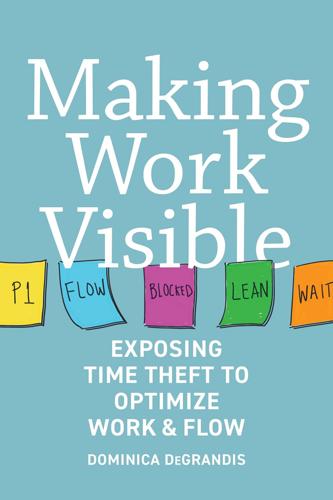
Making Work Visible: Exposing Time Theft to Optimize Workflow
by
Dominica Degrandis
and
Tonianne Demaria
Published 14 May 2017
The resultant mental overload creates stress. Stress compounds the work we already have, essentially contributing to WIP, compromising the ability to focus, prioritize, make decisions, and complete work with quality, let alone complete work at all. The visualization and WIP-limiting strategies Dominica offers demystify our cognitive load; normalize expectations among team members; promote focus; situate work in its context, surfacing problems (and allowing for solutions to be made) in real time; and provide a clear path to completion with quality. Elegantly explained and deeply-insightful, the utility of the suggestions contained within cannot be overstated.

Designing Interfaces
by
Jenifer Tidwell
Published 15 Dec 2010
But when a user is in the middle of a full-screen slideshow, she doesn’t want to see a complicated global navigation menu! She would rather just focus on the slideshow itself, so Back/Next controls and an Escape Hatch are all that’s necessary. The presence of full navigation options is not without cost: it takes up space, clutters the screen, incurs cognitive load, and signals to the user that leaving the page doesn’t matter. Third, all these mechanisms and patterns can be rendered on-screen in different ways. A complex site or app might use tabs, or menus, or a sidebar tree view to show the global navigation on each page—that’s something you don’t need to decide until you start laying out the page.
…
This tight integration has several advantages over other physical structures, such as two separate windows or One-Window Drilldown: It reduces physical effort. The user’s eyes don’t have to travel a long distance between the panels, and he can change the selection with a single mouse click or key press rather than first navigating between windows or pages (which can take an extra mouse click). It reduces visual cognitive load. When a window pops to the top, or when a page’s contents are completely changed (as happens with One-Window Drilldown), the user suddenly has to pay more attention to what he’s now looking at; when the window stays mostly stable, as in a Two-Panel Selector, the user can focus on the smaller area that did change.

Presentation Zen Design: Simple Design Principles and Techniques to Enhance Your Presentations
by
Garr Reynolds
Published 14 Aug 2010
Since film was expensive—and I had to wait two weeks for the slides to return from the lab—I thought carefully about the story I wanted to tell and the types of images I needed to support my argument, make my case, and tell my story. Only after I did my research and completed the plan on paper, did I set out with my camera to find evidence of the problem, taking pictures of what society had to lose (the beauty) and evidence of the threats to it (the pollution). Long before I ever heard of concepts such as the cognitive load theory or the dual channels of cognition, like most students, I knew intuitively and through experience that quality images plus narration was better than narration plus a lot of text on a screen, even though I was years away from experiencing “death by PowerPoint.” These slides are from an updated version of that first multimedia presentation I did back in high school.
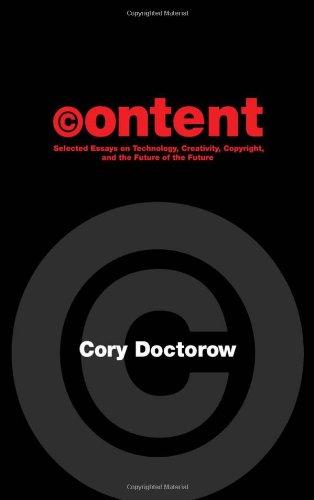
Content: Selected Essays on Technology, Creativity, Copyright, and the Future of the Future
by
Cory Doctorow
Published 15 Sep 2008
Maybe it's evolutionary, some quirk of the neocortex dating from our evolution into social animals who gained advantage by dividing up the work of survival but acquired the tricky job of watching all the other monkeys so as to be sure that everyone was pulling their weight and not, e.g., napping in the treetops instead of watching for predators, emerging only to eat the fruit the rest of us have foraged. Keeping track of our social relationships is a serious piece of work that runs a heavy cognitive load. It's natural to seek out some neural prosthesis for assistance in this chore. My fiancee once proposed a "social scheduling" application that would watch your phone and email and IM to figure out who your pals were and give you a little alert if too much time passed without your reaching out to say hello and keep the coals of your relationship aglow.
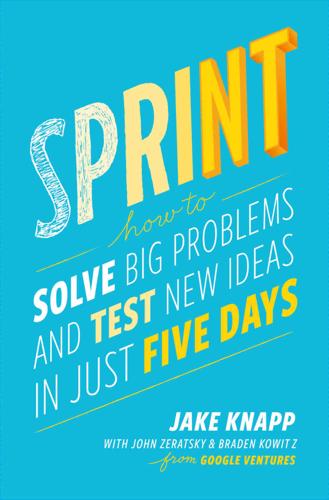
Sprint: How to Solve Big Problems and Test New Ideas in Just Five Days
by
Jake Knapp
,
John Zeratsky
and
Braden Kowitz
Published 8 Mar 2016
Wall-mounted are best, but rolling whiteboards are good, too. Alternatives: IdeaPaint, Post-it easel pads, or butcher paper taped to the walls. Get two big whiteboards (or equivalent surface area). (p. 43) • Yellow 3-by-5 sticky notes. Stick with classic yellow, because the multicolored notes cause unnecessary cognitive load. Get fifteen pads. • Black whiteboard markers. Using a thick marker will keep your ideas pithy and easy for others to read. We prefer whiteboard markers over Sharpies because they’re more versatile, they smell less, and you don’t have to worry about accidentally putting a permanent mark on your whiteboard.

Designing Web APIs: Building APIs That Developers Love
by
Brenda Jin
,
Saurabh Sahni
and
Amir Shevat
Published 28 Aug 2018
Consistency generally means that there are a number of patterns and conventions repeated throughout your API, in such a way that developers can begin to predict how to use your API without seeing the documentation. That could include anything from data access patterns to error handling to naming. The reason consistency is important is that it reduces the cognitive load on developers who are trying to figure out your API. Consistency helps your existing devel‐ opers in adapting new features by reducing forks in their code, and it helps new developers hit the ground running with everything you’ve built on your API. In contrast, with less consistency, different developers will need to reimplement the same logic over and over again.
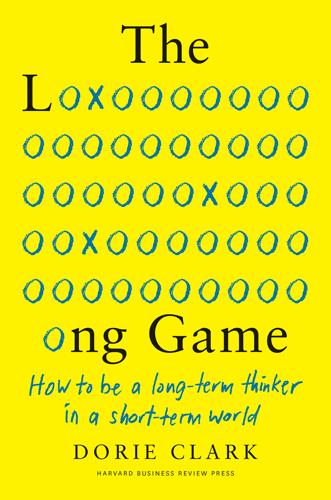
Long Game: How Long-Term Thinker Shorthb
by
Dorie Clark
Published 14 Oct 2021
But all that changes when heads-down mode rolls around. I’ll turn down all but the most urgent requests, and spend hours at a time immersed in deep work on projects like developing a new online course or writing a book. This approach enables me to focus when needed, cluster similar tasks (to lessen the cognitive load of multitasking), and stay refreshed by changing up my routines. In exercise, you’re not supposed to lift weights every day; your muscles need time to recover, heal, and grow back stronger. You’re more effective when you work in cycles than if you slog forward, repeating the same tasks every day.

API Design Patterns
by
Jj Geewax
Published 19 Jul 2021
Listing 5.2 A function to add a chatbot to a room, if permitted function addChatbotToRoom(chatbot: Chatbot, roomId: number): void { let room = getChatRoomById(roomId); if (room.disallowChatbots === false) { ❶ chatbot.join(room.id); } } ❶ Here we can check whether chat bots are disallowed. If false, we can join the room. Is this impossible to follow? Probably not. Is it a bit more cognitive load than the much simpler version (if (room.allowChatbots) { ... })? For most of us, probably. Based on that alone, it’s almost always a good idea to go with positive Boolean flags. But there are scenarios when it might make sense to rely on negative flags, primarily when we consider the default or unset value of the field.
…
Additionally, we have an extra association resource to consider, which means a larger API surface as the API now has both one extra resource per association and up to seven additional methods to consider (five for the standard methods and two optional alias methods). Often these methods are easy to learn and understand and as a result are worth the additional cognitive load; however, it’s worth pointing out that there are simply more things to learn. 14.4.2 Separation of associations When using an association resource, even though we can provide alias methods to make it easier to ask questions about resource relationships, we still treat the association between the two resources as separate from the information about each resource.
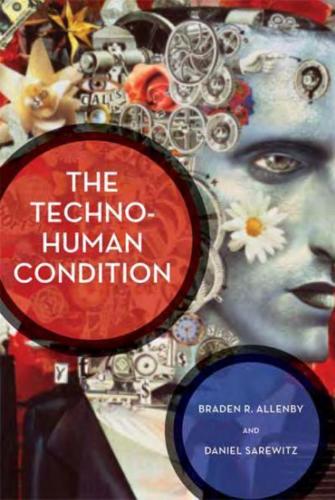
The Techno-Human Condition
by
Braden R. Allenby
and
Daniel R. Sarewitz
Published 15 Feb 2011
See, e.g., the website of the Augmented Cognition International Society (www.augmentedcognition.org), which identifies the main driver for such technologies: the limited bandwidth of human consciousness-"The primary challenge with these systems is accurately predicting/assessing, from the incoming sensor information, the correct state of the user and having the computer select an appropriate strategy to assist the user at that time." (http://www.augmentedcognition.org) Augcog also has significant Level I uses in civil society. Many car companies, for example, are designing augcog into their future automobiles in recognition of the fact that, as populations age, more of the cognitive load of driving must be shifted from the aging driver to the car and transport infrastructure. See, e.g., N. Fleming, "Look, no hands: Cars that drive better than you;" at www.newscientist.com. 9. These examples are from Singer 2009. 10. There are three main branches of the laws of war: legal justification for engaging in war in the first place (jus ad bellum), legal conduct during war itself (jus in bello), and international agreements on military conduct and technology (such as the Geneva Conventions).
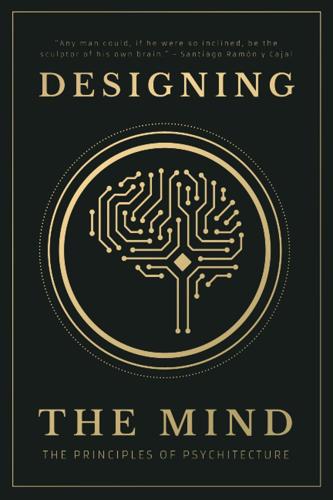
Designing the Mind: The Principles of Psychitecture
by
Designing The Mind
and
Ryan A Bush
Published 10 Jan 2021
doi=10.1037%2F0022-3514.51.5.1058. Wilhelm Hofmann and Loran F. Nordgren, eds., The Psychology of Desire. Chapter 3 - Desire and Desire Regulation, Reprint edition (New York, NY: The Guilford Press, 2016). Lotte Dillen, Esther Papies, and Wilhelm Hofmann, “Turning a Blind Eye to Temptation: How Cognitive Load Can Facilitate Self-Regulation,” Journal of Personality and Social Psychology 104 (December 31, 2012), https://doi.org/10.1037/a0031262. “The Grateful Disposition: A Conceptual and Empirical Topography. - PsycNET,” accessed November 25, 2020, /doiLanding?doi=10.1037%2F0022-3514.82.1.112. “Counting Blessings versus Burdens: An Experimental Investigation of Gratitude and Subjective Well-Being in Daily Life. - PsycNET,” accessed November 25, 2020, /doiLanding?
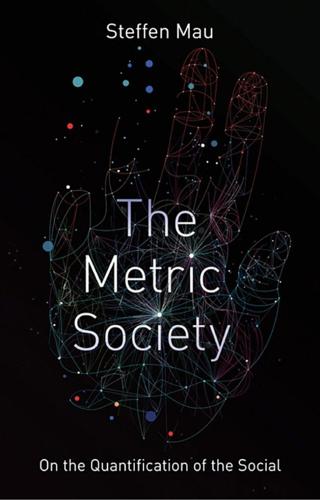
The Metric Society: On the Quantification of the Social
by
Steffen Mau
Published 12 Jun 2017
In our rapidly complexifying society, we are being swamped by a growing tide of information which is becoming increasingly hard to process. As a result, we inevitably resort to simplifying heuristics for guidance. We have to be economical with our attention (Franck 1998), and rankings serve to reduce cognitive load. They are a means of creating commensurability, which often translates confusing and complex differences into easily graspable inequalities, or hierarchies. All rankings establish a clear relationship between the evaluated objects. The incorporation of disparate entities into a league table is initially based on a supposition of commonality, but once such a table is published, a pecking order is established.
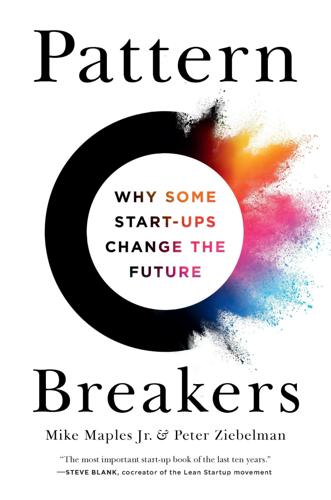
Pattern Breakers: Why Some Start-Ups Change the Future
by
Mike Maples
and
Peter Ziebelman
Published 8 Jul 2024
This bombardment has become so commonplace that we’ve learned to tune it out. People automatically categorize products and ideas in what amounts to containers in their heads. Coca-Cola? That goes in the soft drink container in my mind. So does Pepsi. Mercedes? Park over there in the luxury car container next to the Lexus. These containers reduce the cognitive load of getting through each day, and they shape how all of us live our lives. If I’m the CFO of a company with a line-item budget and someone proposes a budget for a new thing, the first thing I am likely to ask is “What part of my budget (i.e., category) does that come out of?” As a consumer considering a new smartphone purchase, I might ask what fraction of my monthly budget I should spend and what part of my budget it will come from.
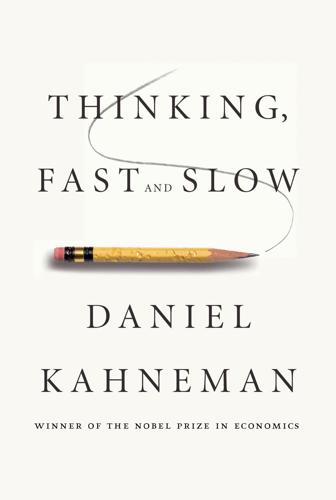
Thinking, Fast and Slow
by
Daniel Kahneman
Published 24 Oct 2011
System 1 has more influence on behavior when System 2 is busy, and it has a sweet tooth. People who are cognitively busy are also more likely to make selfish choices, use sexist language, and make superficial judgments in social situations. Memorizing and repeating digits loosens the hold of System 2 on behavior, but of course cognitive load is not the only cause of weakened self-control. A few drinks have the same effect, as does a sleepless night. The self-control of morning people is impaired at night; the reverse is true of night people. Too much concern about how well one is doing in a task sometimes disrupts performance by loading short-term memory with pointless anxious thoughts.
…
They include: avoiding the thought of white bears inhibiting the emotional response to a stirring film making a series of choices that involve conflict trying to impress others responding kindly to a partner’s bad behavior interacting with a person of a different race (for prejudiced individuals) The list of indications of depletion is also highly diverse: deviating from one’s diet overspending on impulsive purchases reacting aggressively to provocation persisting less time in a handgrip task performing poorly in cognitive tasks and logical decision making The evidence is persuasive: activities that impose high demands on System 2 require self-control, and the exertion of self-control is depleting and unpleasant. Unlike cognitive load, ego depletion is at least in part a loss of motivation. After exerting self-control in one task, you do not feel like making an effort in another, although you could do it if you really had to. In several experiments, people were able to resist the effects of ego depletion when given a strong incentive to do so.

Thank You for Being Late: An Optimist's Guide to Thriving in the Age of Accelerations
by
Thomas L. Friedman
Published 22 Nov 2016
They did not know what data to look at, so our challenge was [to] make sensor data easy for them to make sense of, so we don’t overwhelm them with too much data and just say ‘You figure it out.’ Our goal was, ‘We will give you information you can use.’” “The cognitive load is too much,” he added, “and technology has to reduce that cognitive load on the user. Everyone will need and everyone will have a personal assistant.” The maintenance team now feel more like building technicians, not just janitors. “They feel it is a step up,” said Tipirneni. “They got very excited about the interfaces.” And the best part, he added: “We had forty officials from four different cities in for a demo, and some of the maintenance people here presented it and they showed what they learned, and it struck a chord with the city officials.
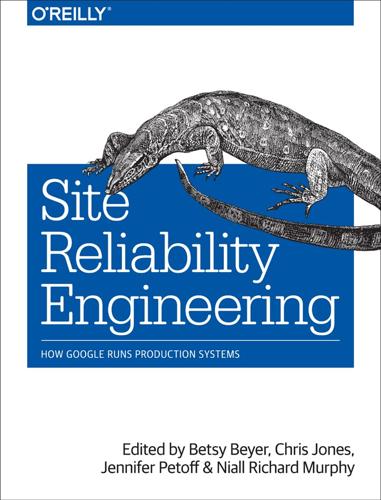
Site Reliability Engineering: How Google Runs Production Systems
by
Betsy Beyer
,
Chris Jones
,
Jennifer Petoff
and
Niall Richard Murphy
Published 15 Apr 2016
This pattern of distribution also informs how SRE teams tend to be organized. Because our raison d’être is bringing value through technical mastery, and technical mastery tends to be hard, we therefore try to find a way to have mastery over some related subset of systems or infrastructures, in order to decrease cognitive load. Specialization is one way of accomplishing this objective; i.e., team X works only on product Y. Specialization is good, because it leads to higher chances of improved technical mastery, but it’s also bad, because it leads to siloization and ignorance of the broader picture. We try to have a crisp team charter to define what a team will—and more importantly, won’t—support, but we don’t always succeed.
…
Another way, perhaps the best, is to short-circuit the process by which specially created systems with lots of individual variations end up “arriving” at SRE’s door. Provide product development with a platform of SRE-validated infrastructure, upon which they can build their systems. This platform will have the double benefit of being both reliable and scalable. This avoids certain classes of cognitive load problems entirely, and by addressing common infrastructure practices, allows product development teams to focus on innovation at the application layer, where it mostly belongs. In the following sections, we’ll spend some time looking at each of these models in turn, beginning with the “classic” one, the PRR-driven model.

Vue.js 2 Cookbook
by
Andrea Passaglia
Published 27 Apr 2017
Vuex implements a pattern that is popular in frontend frameworks and consists of dividing the different concerns to manage a big global application state. The mutations are the only things that can change the state, so you have only one place to look for that. Much of the logic, along with all the asynchronous logic, is contained in the actions; finally, getters and modules further help to spread the cognitive load when it comes to computing the derived state and splitting your code into different files. Along with recipes, you will find grains of wisdom that I found useful when developing real large applications; some have to do with naming conventions and others with little tricks to avoid bugs. If you complete all the recipes, you will be ready to develop big frontend applications with fewer bugs and seamless collaboration.

Reinventing Capitalism in the Age of Big Data
by
Viktor Mayer-Schönberger
and
Thomas Ramge
Published 27 Feb 2018
Money and price are the infrastructure, the conduits of information, that make the market work. But money and price do much more than streamline information flows; they also simplify transactional decision-making. If we have difficulty comparing and evaluating goods and services across many dimensions, the shift to a price—a simple figure—eases our cognitive load. Just imagine for a moment a world without money: say you want to purchase a loaf of bread, and one baker offers it to you in exchange for a pound of butter, whereas another wants a crate of apples. How would you go about comparing these two offers? In fact, how would you even have gotten the information on what the bakers want in exchange for their goods?

Rebel Ideas: The Power of Diverse Thinking
by
Matthew Syed
Published 9 Sep 2019
In many ways Everest will prove an apt vehicle for this exploration. Weather conditions are inherently uncertain. No matter how much planning and preparation you have done, there are unexpected twists and turns. The number of moving parts as conditions morph make huge demands not merely on physical endurance, but cognitive load. Mountaineering is, in this sense, what theorists call a VUCA environment: volatile, uncertain, complex and ambiguous. II Psychologists and anthropologists don’t agree about much, but one thing they do agree upon is the significance of dominance hierarchies. Humans share hierarchies with other primates and, according to the psychologist Jordan Peterson, even lobsters.
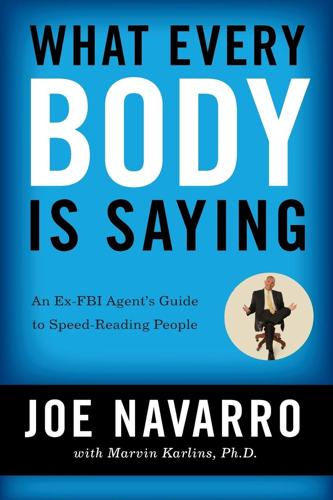
What Every Body Is Saying: An Ex-FBI Agent's Guide to Speed-Reading People
by
Joe Navarro
and
Marvin Karlins
Published 22 Feb 2011
The Critical Role of the Comfort/Discomfort Equation in Detecting Deception Those who are lying or are guilty and must carry the knowledge of their lies and/or crimes with them find it difficult to achieve comfort, and their tension and distress may be readily observed. Attempting to disguise their guilt or deception places a very distressing cognitive load on them as they struggle to fabricate answers to what would otherwise be simple questions (DePaulo et al., 1985, 323–370). The more comfortable a person is when speaking with us, the easier it will be to detect the critical nonverbals of discomfort associated with 210 W H A T E V E R Y B O D Y I S S A Y I N G deception.
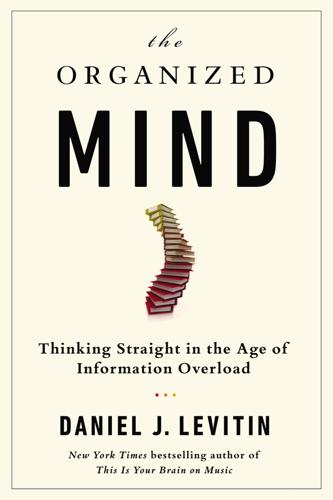
The Organized Mind: Thinking Straight in the Age of Information Overload
by
Daniel J. Levitin
Published 18 Aug 2014
Or you could attribute his behavior to a situational factor—perhaps he was lost in thought or was late for a meeting or is angry at you. The science doesn’t say that Kevin rarely responds to situational factors, just that observers tend to discount them. Daniel Gilbert has gone on to show that this fundamental attribution error is produced by information overload. Specifically, the more cognitive load one is experiencing, the more likely one is to make errors in judgment about the causes of an individual’s behavior. Another way to contextualize the results of the Stanford experiment is that the participants drew a conclusion that was overly influenced by the outcome of the game, and made an outcome-bias-based inference.
…
Why is it so powerful if it is sometimes wrong? Here’s the twist. It’s because most of the time, the outcome has predictive value and operates as a simple inferential cue when we’re making judgments. Reliance on such primal unconscious cues is efficient, typically yielding accurate judgments with much less effort and cognitive load. In an era of information overload, sometimes outcome-based biases save time, but we need to be aware of them because sometimes they just make us wrong. On the Edge of Your Social World Another cognitive illusion that concerns social judgments is that we tend to have a very difficult time ignoring information that has been shown later to be false.
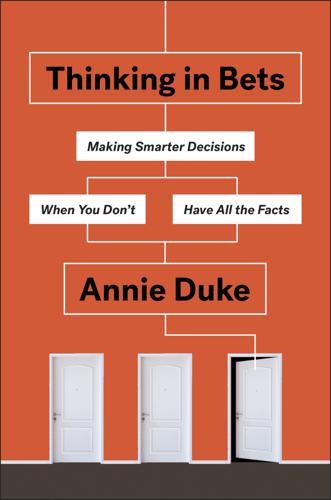
Thinking in Bets
by
Annie Duke
Published 6 Feb 2018
Even when that information is clearly presented as being false, we are still likely to process it as true. In these experiments, subjects read a series of statements about a criminal defendant or a college student. These statements were color coded to make it clear whether they were true or false. Subjects under time pressure or who had their cognitive load increased by a minor distraction made more errors in recalling whether the statements were true or false. But the errors weren’t random. The subjects were not equally likely to ignore some statements labeled “true” as they were to rely on some statements labeled “false.” Rather, their errors went in one direction: under any sort of pressure, they presumed all the statements were true, regardless of their labeling.
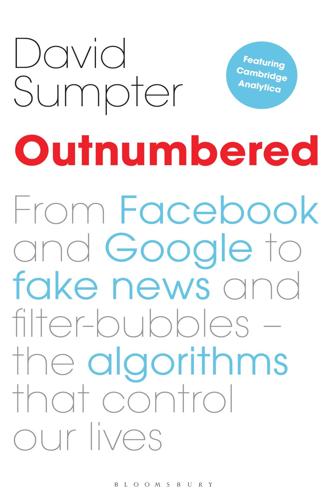
Outnumbered: From Facebook and Google to Fake News and Filter-Bubbles – the Algorithms That Control Our Lives
by
David Sumpter
Published 18 Jun 2018
In Figures 9.1 (a) and (b) the radius of the circle next to the author is proportional to n i and the thickness of the link between the authors is c ij. 3 Lerman, K. and Hogg, T. 2010. ‘Using a model of social dynamics to predict popularity of news.’ Proceedings of the 19th international conference on World Wide Web, pp. 621–30. ACM. 4 Burghardt, K., Alsina, E. F., Girvan, M., Rand, W. and Lerman, K. 2017. ‘The myopia of crowds: Cognitive load and collective evaluation of answers on Stack Exchange.’ PloS one 12, no. : e0173610. 5 Salganik, M. J., Dodds, P. S. and Watts, D. J. 2006. ‘Experimental study of inequality and unpredictability in an artificial cultural market.’ Science 311, no. 5762: 854–6. Salganik, M. J. and Watts, D. J. 2008.
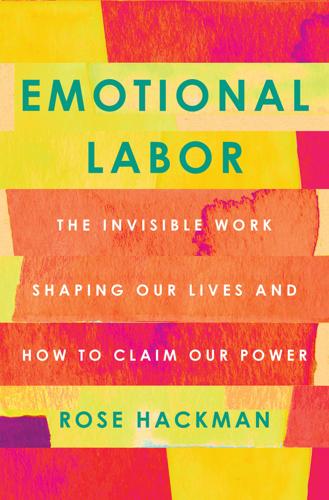
Emotional Labor: The Invisible Work Shaping Our Lives and How to Claim Our Power
by
Rose Hackman
Published 27 Mar 2023
The harm that comes as a result of incarceration is something women have to take on as their own responsibility, Clayton-Johnson said—with a myriad of extra forms of emotional labor added on. Her organization, based out of Oakland, California, serves women who have loved ones on the inside. “For women with incarcerated loved ones, the cognitive load is more than figuring out kids’ preschool. For them, it is also getting that look from a loved one in a court or inside, saying, What should I do? Should I take the plea?” That half a million people sit in American jails every day without a conviction because of not being able to make bail means women on the outside are forced into making impossible choices.14 Paying rent or paying for a loved one’s bail was just one of many agonizing decisions women had to face, said Clayton-Johnson, whose organization is among those advocating an end to the cash bail system.

Places of the Heart: The Psychogeography of Everyday Life
by
Colin Ellard
Published 14 May 2015
Smartening Up the Built World For thousands of years, the conventional wall was a perfectly satisfactory way of influencing human behavior through design. Walls constrain movement and occlude views. They afford privacy and protection. Indeed, John Locke, in his book Eavesdropping: An Intimate History, has argued that the wall was designed to protect us from the cognitive load of having to keep track of the activities of strangers as we moved from tiny agrarian settlements to larger villages and, eventually, cities where it was too difficult to keep track of who was doing what to whom.12 Walls reinforce or perhaps even create social conventions and cultural norms. The invention of dedicated sleeping spaces in homes changed our views about sexuality.

Mindwise: Why We Misunderstand What Others Think, Believe, Feel, and Want
by
Nicholas Epley
Published 11 Feb 2014
When what you type isn’t what they read: The perseverance of stereotypes and expectancies over email. Journal of Experimental Social Psychology 41: 414–22. 17. Kring, A. M., and A. H. Gordon (1998). Sex differences in emotion: Expression, experience, and physiology. Journal of Personality and Social Psychology 74: 686–703. Van Boven, L., and M. D. Robinson (2012). Boys don’t cry: Cognitive load and priming increase stereotypic sex differences in emotion memory. Journal of Experimental Social Psychology 48: 303–309. 18. Nelson, L. J., and D. T. Miller (1995). The distinctiveness effect in social categorization: You are what makes you unusual. Psychological Science 6: 246–49. 19. Riggs, L.
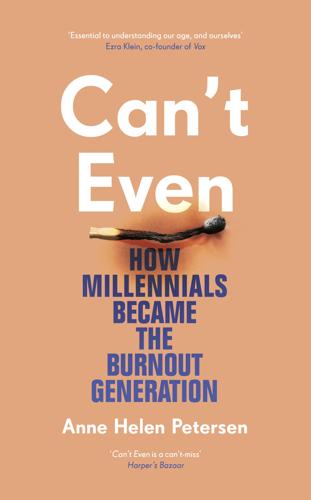
Can't Even: How Millennials Became the Burnout Generation
by
Anne Helen Petersen
Published 14 Jan 2021
A social worker once told me that he feels that American bureaucracy for aid is intentionally and endlessly tedious as a means to deter those who need it most. All the decisions and multitasking that are already hard to juggle when you’re well-nourished and have a safe and consistent place to live become immeasurably more difficult when you don’t have those elements in place. Researchers have found that poverty imposes a “cognitive load” on the poor—there’s so much mental energy devoted to finding and maintaining the basics of life that there’s little left over to, say, research, save, register, and attend night school, let alone find the energy to do the homework.24 Paying bills on time is a struggle for people who are middle class and burnt out; think of how much harder it is when you don’t have a computer or the extra money for a stamp.
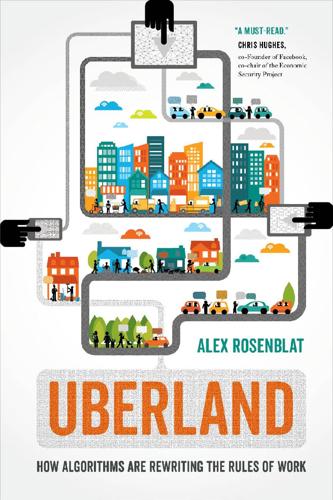
Uberland: How Algorithms Are Rewriting the Rules of Work
by
Alex Rosenblat
Published 22 Oct 2018
The affective benefits, like the community you build with other drivers during down periods, continue.”2 Nevertheless, some of the drawbacks of algorithmic management center on information scarcity, rather than on discussions of employment benefits. Drivers don’t have an employee handbook when they start out: instead, they learn what the rules are over time through hundreds of text messages, emails, and in-app notifications. To manage the cognitive load of rapidly shifting terms and conditions in their employment, some drivers turn to information-sharing forums online. On these driver-led forums—on Facebook, on message boards, and on chat apps like WhatsApp, Zello, and WeChat—drivers are forging their own informal information networks, outside the algorithmically proscriptive realm of the ridehail apps.
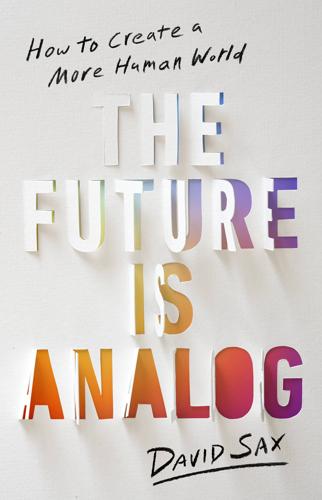
The Future Is Analog: How to Create a More Human World
by
David Sax
Published 15 Jan 2022
Though the software worked remarkably well, each Zoom meeting (or its equivalent on Google Meet, Microsoft Teams, Cisco Webex, or other videoconferencing platforms) seemed to take something visceral from its participants, the way a trip to Ikea sucked the love out of a young couple. Psychologists and other experts tried to pick apart its causes. Was it something to do with the imperceptible lag in response time on digital communications, or the speed of it, or the volume? Was the root cause a lack of genuine eye contact, an increase in our cognitive load, or the way that digital processing flattened audio signals? No one was sure, but whatever it was, the unease it imparted became harder to ignore. Even though I had worked remotely my entire career, I noticed it as well. I was busy writing articles, doing interviews, and even orchestrating half a dozen virtual book tour stops across the United States during that first, crazy pandemic spring.
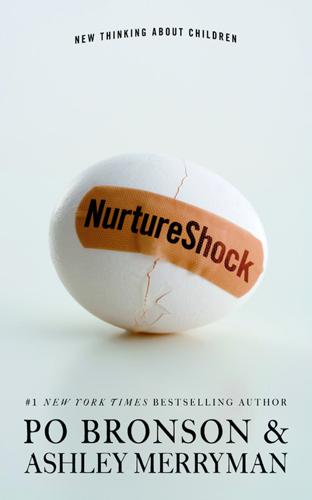
NurtureShock: New Thinking About Children
by
Po Bronson
and
Ashley Merryman
Published 2 Sep 2008
The two are indeed connected, by the neural systems that regulate attention and cognitive control. Teenage drivers can score 100% on a paper test of the rules, but when driving, their reaction times are delayed because they have not yet internalized the grammar of driving—they have to think about it. This increases the cognitive load, and their ability to maintain attention is stressed to capacity. They are on the verge of making poor decisions. Put a friend in the car and the attention systems are easily overloaded—the driver’s brain no longer proactively anticipates what could happen, glancing seconds ahead and preloading the rules.
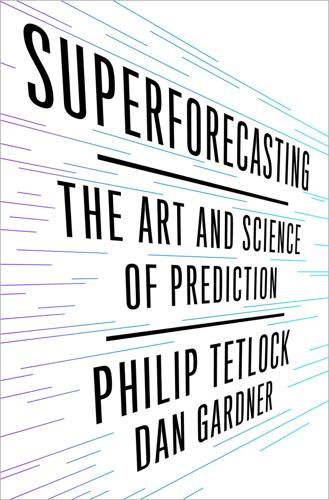
Superforecasting: The Art and Science of Prediction
by
Philip Tetlock
and
Dan Gardner
Published 14 Sep 2015
Ever watch a child struggling to sound out words and grasp the meaning of a sentence? That was you once. Fortunately, reading this sentence isn’t nearly so demanding for you now. So how long can superforecasters defy the laws of psychological gravity? The answer to that depends on how heavy their cognitive loads are. Turning a self-conscious System 2 correction into an unconscious System 1 operation may lighten the load considerably. So may the software tools some superforecasters have developed—like Doug Lorch’s new-source selection program designed to correct the System 1 bias in favor of the like-minded.
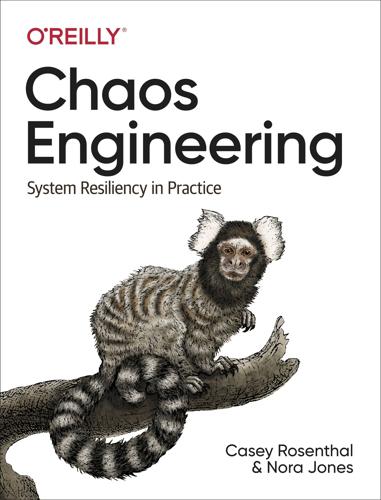
Chaos Engineering: System Resiliency in Practice
by
Casey Rosenthal
and
Nora Jones
Published 27 Apr 2020
It is considered a best practice in Chaos Engineering to not perform experiments during an active ongoing incident or outage. It’s not difficult to grasp that doing so will likely be disruptive to response team efforts but additionally it’s important to recognize that people operate differently during active incidents due to time pressure, cognitive load, stress, and other factors. An active incident situation is not an ideal learning environment, as the focus is typically on restoring business continuity instead of learning about what might have contributed to the adverse event. We execute SCE experiments in the absence of adverse events and outages when the system is thought to be running optimally.
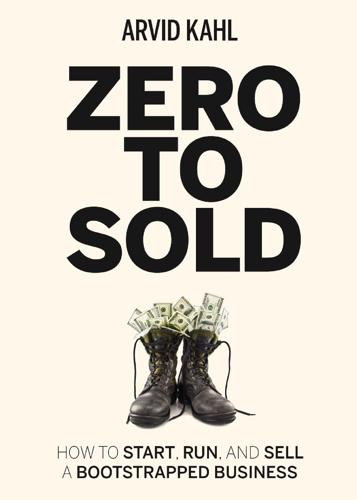
Zero to Sold: How to Start, Run, and Sell a Bootstrapped Business
by
Arvid Kahl
Published 24 Jun 2020
And they definitely don't want to learn anything new to be able to solve a problem they already had to learn a product or even a manual solution for in the past. Your product should be simpler, easier, and faster than anything they have encountered in the past. If it's not, getting to understand your product is a cognitive load that few are willing to take upon themselves. That's not to say that people won't learn your product ever. It just means that the simpler your product, the more prospects will play around with it to a point where they can see themselves using it in the future. How to Handle Audience Misalignment Here's the worst-case scenario: your product may just not be for them.
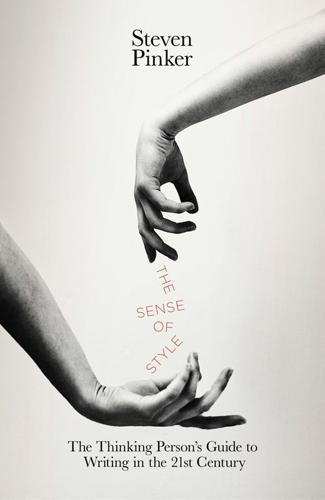
The Sense of Style: The Thinking Person's Guide to Writing in the 21st Century
by
Steven Pinker
Published 1 Jan 2014
Take this excerpt from a 340-word soliloquy in a novel by Rebecca Goldstein.17 The speaker is a professor who has recently achieved professional and romantic fulfillment and is standing on a bridge on a cold, starry night trying to articulate his wonder at being alive: Here it is then: the sense that existence is just such a tremendous thing, one comes into it, astonishingly, here one is, formed by biology and history, genes and culture, in the midst of the contingency of the world, here one is, one doesn’t know how, one doesn’t know why, and suddenly one doesn’t know where one is either or who or what one is either, and all that one knows is that one is a part of it, a considered and conscious part of it, generated and sustained in existence in ways one can hardly comprehend, all the time conscious of it, though, of existence, the fullness of it, the reaching expanse and pulsing intricacy of it, and one wants to live in a way that at least begins to do justice to it, one wants to expand one’s reach of it as far as expansion is possible and even beyond that, to live one’s life in a way commensurate with the privilege of being a part of and conscious of the whole reeling glorious infinite sweep, a sweep that includes, so improbably, a psychologist of religion named Cass Seltzer, who, moved by powers beyond himself, did something more improbable than all the improbabilities constituting his improbable existence could have entailed, did something that won him someone else’s life, a better life, a more brilliant life, a life beyond all the ones he had wished for in the pounding obscurity of all his yearnings. For all its length and lexical exuberance, the sentence is easy to follow, because the reader never has to keep a phrase suspended in memory for long while new words pour in. The tree has been shaped to spread the cognitive load over time with the help of two kinds of topiary. One is a flat branching structure, in which a series of mostly uncomplicated clauses are concatenated side by side with and or with commas. The sixty-two words following the colon, for example, consist mainly of a very long clause which embraces seven self-contained clauses (shown as triangles) ranging from three to twenty words long: The longest of these embedded clauses, the third and the last, are also flattish trees, each composed of simpler phrases joined side by side with commas or with or.

The Smart Wife: Why Siri, Alexa, and Other Smart Home Devices Need a Feminist Reboot
by
Yolande Strengers
and
Jenny Kennedy
Published 14 Apr 2020
Yet as political science scholars Amy Schiller and John McMahon point out, voice-activated assistants designed for the home may further entrench the role of the household manager.72 Alexa and Google Home cannot delegate tasks to themselves (yet), despite the intention for smart assistants like Alexa to “reduce users’ cognitive load [and] reduce friction in their day-to-day activities.”73 These assistants rely on the managerial labor of their human users “to notice, inform, direct, administer, and supervise Alexa her/itself.”74 The French comic by artist Emma, titled You Should Have Asked, which went viral in 2017, brings this point home.75 The comic describes the burden placed on heterosexual women in coupled households where men insist that they will perform their fair share of domestic responsibilities, as long as they are “asked” to do specific tasks.
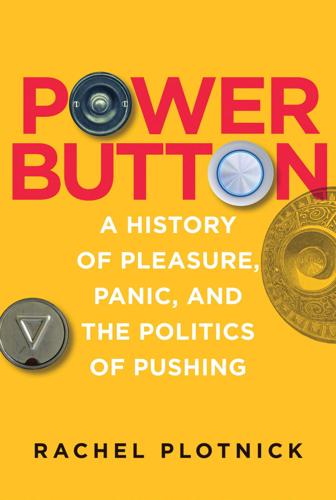
Power Button: A History of Pleasure, Panic, and the Politics of Pushing
by
Rachel Plotnick
Published 24 Sep 2018
These multiple states and functionalities create less clarity about what a button does because many buttons no longer provide a binary condition—on/off, start/stop, make/break—and instead offer users a bevy of choices that may not be visible at the original push. Of course, “hidden button states are not ideal,” as observers have noted, because they “add to the cognitive load of users and are vulnerable to operation errors.”44 Yet to call present-day virtual buttons inherently more confusing or complex than their mechanical predecessors at the turn of the twentieth century would overlook the complexities that have always accompanied buttons; the fallacy lies in assuming that buttons have ever provided a seamless experience for users.

Boom: Bubbles and the End of Stagnation
by
Byrne Hobart
and
Tobias Huber
Published 29 Oct 2024
Researchers and academics have to become ever more specialized to make progress in an ever-narrowing field of study or research. Scientific hyper-specialization is, to some extent, an inevitable consequence of the success of scientific progress. Due to the exponential accumulation of scientific knowledge over the past three centuries, specialization has become a practical necessity because it reduces the cognitive load that researchers in any given scientific field face. The key question that emerges from considering these three trends is whether scientific stagnation arises because of cultural and institutional factors, such as the current incentive structure of science, or whether science itself is approaching an intrinsic epistemic limit.
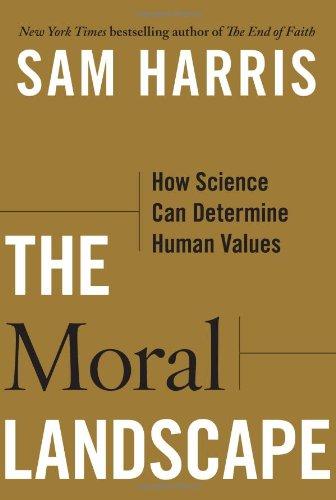
The Moral Landscape: How Science Can Determine Human Values
by
Sam Harris
Published 5 Oct 2010
The contrasts—uncertainty minus belief and uncertainty minus disbelief—yielded signal in the anterior cingulate cortex (ACC). This region of the brain has been widely implicated in error detection (Schall, Stuphorn, & Brown, 2002) and response conflict (Gehring & Fencsik, 2001), and it regularly responds to increases in cognitive load and interference (Bunge, Ochsner, Desmond, Glover, & Gabrieli, 2001). It has also been shown to play a role in the perception of pain (Coghill, McHaffie, & Yen, 2003). The opposite contrasts, belief minus uncertainty and disbelief minus uncertainty, showed increased signal in the caudate nucleus, which is part of the basal ganglia.
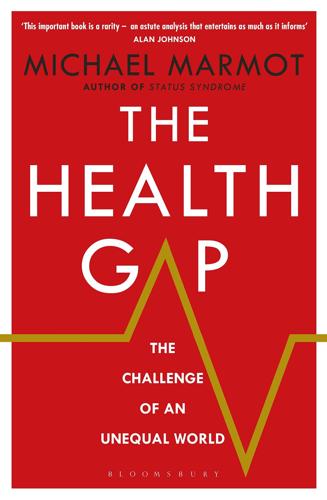
The Health Gap: The Challenge of an Unequal World
by
Michael Marmot
Published 9 Sep 2015
The implication of this effect of scarcity is that the poor need not only money – they do need money – but also the security of mind that allows a fuller range of mental functions to flourish. For example, if when Rachel was a single mother she could have had access to subsidised childcare, it would have reduced not only her financial burden but also her cognitive load as she juggled the tasks and the finances involved in being a single mother. In low-income countries, where employment and income are insecure and inconstant, short-term low-interest loans might be valuable in relieving intolerable mental burdens. My entrée into political philosophy was to help understand the links between social justice and health.
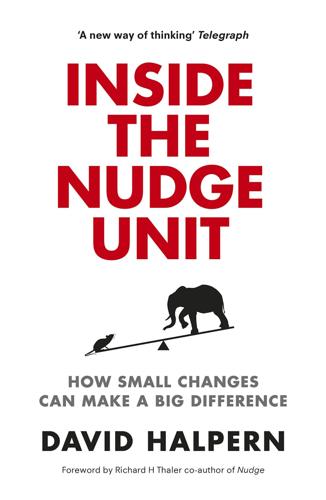
Inside the Nudge Unit: How Small Changes Can Make a Big Difference
by
David Halpern
Published 26 Aug 2015
In a different body of work on adults, Sendhil Mullainathan and Eldar Shafir have shown how poverty has far more powerful cognitive effects than we were previously aware.9 Having money worries seems to preoccupy a chunk of our minds, even if we are not aware of it. The effect size on IQ is roughly equivalent to having had no sleep the night before, but on an ongoing basis. This gives useful clues to how welfare systems might be adapted, not just by throwing more money at them, but by avoiding systems and processes that factor in this unseen cognitive load. We have seen similar glimpses in our own work. The reworking of the interaction between jobseekers and advisers in UK jobcentres, by Rory Gallagher, Alex Gyani, Sam Hanes and others in BIT (with Department of Work and Pensions colleagues) showed that we could get the unemployed back to work significantly faster (see Chapter 8).

Human Frontiers: The Future of Big Ideas in an Age of Small Thinking
by
Michael Bhaskar
Published 2 Nov 2021
Over the next decades or centuries we should be able to sketch a detailed picture of how the brain's atoms, electrical activity and chemical reactions produce our minds. Existing prostheses – writing and ledgers to store information, all those telescopes and compasses building up to computers, the Internet and AI – could coalesce and transmogrify: tools from AI to virtual worlds that outsource the cognitive load; designer drugs that supercharge cognition and perception; and ultimately the fusion of organic and inorganic constructs to further evolve our intelligences and consciousness. The lines between brain and machine, artificial and biological ideas, crumble. It all sounds quite grandiose and alarming: it is.
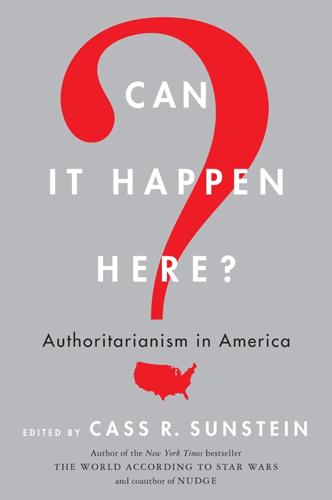
Can It Happen Here?: Authoritarianism in America
by
Cass R. Sunstein
Published 6 Mar 2018
But as several decades of psychology and behavioral economics research has demonstrated (Ariely 2008; Gilovich, Griffin, and Kahneman 2002), it ignores what Daniel Kahneman calls “system 2” thinking (Kahneman 2011), which resides in our unconscious brains and can be influenced by, among other things, subtle details in the presentation of options (Thaler and Sunstein 2008)—e.g., default settings (Johnson and Goldstein 2003), cognitive loads imposed by background environmental stresses (Mullainathan and Shafir 2013), and implicit biases arising from cultural stereotypes and irrelevant personal experience (Banaji and Greenwald 2016). Complicating matters further is Marx’s famous observation “Men make their own history, but . . . they do not make it under self-selected circumstances, but under circumstances . . . transmitted from the past.”
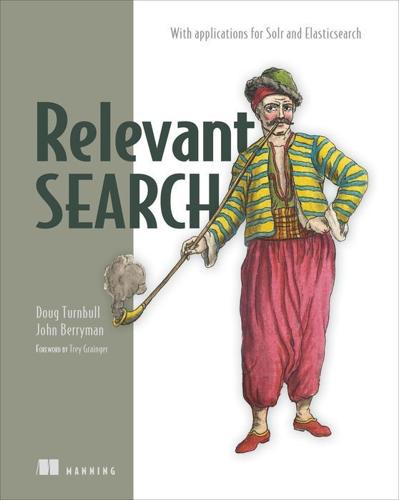
Relevant Search: With Examples Using Elasticsearch and Solr
by
Doug Turnbull
and
John Berryman
Published 30 Apr 2016
The breadcrumb UI component can make users aware of how their results are being filtered. It also gives them an obvious way to remove existing filters. Highlighted search results and details pages draw the users’ attention to why a particular item is deemed important. Result grouping and sorting can reduce user cognitive load by allowing users to focus on the most interesting results. Relevance feedback makes it easier for users to engage with search and find what they’re looking for. Chapter 9. Designing a relevance-focused search application This chapter covers Gathering information before building a new search application Designing and implementing a complete search application Designing a query as a composite of subqueries Balancing query parameters Deploying, monitoring, and improving search Knowing when further relevance tuning is no longer advantageous In the previous chapters, we laid out all the ingredients for good search: Extracting features from the text of the documents through proper tokenization Defining important signals and creating search fields to represent them Crafting queries that take into account both user needs and business requirements Providing feedback to users in order to guide them to more-relevant results Now, this chapter is the rest of the recipe—the set of instructions that organizes these ingredients and lays out the methodology for building a relevance-focused search application.

Work Rules!: Insights From Inside Google That Will Transform How You Live and Lead
by
Laszlo Bock
Published 31 Mar 2015
We first had to make sure the data was credible, so we included academic citations, results from internal studies, and the underlying data in the email. Googlers are, after all, data driven. We then had to make sure there were unambiguous steps the manager could take. Our people are smart but busy. It reduces cognitive load if we provide clear instructions rather than asking them to invent practices from scratch or internalize a new behavior, and this lowers the chance that an extra step might discourage them from taking action. Even the president of the United States limits the volume of things he needs to think about, so that he can focus on important issues, as he explained to Michael Lewis in Vanity Fair: “ ‘You’ll see I wear only gray or blue suits,’ [President Obama] said.

Machines of Loving Grace: The Quest for Common Ground Between Humans and Robots
by
John Markoff
Published 24 Aug 2015
Aircraft designers had learned the hard way that until they considered the human-machine interaction as a single system, they built control systems that led to aircraft crashes. It simply wasn’t possible to account for all accidents by blaming pilot error. Aircraft cockpit design changed, however, when designers realized that the pilot was part of the system. Variables like attention span and cognitive load, which had been pioneered and popularized by psychologists, became an integral part first in avionics and, more recently, computer system design. Gruber thought hard about these issues while he designed the Intraspect query system. He imagined customers, often corporate salespeople, as aircraft pilots and tried to shape the program to avoid deluging them with information.
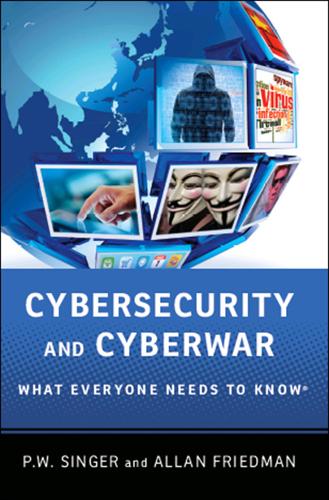
Cybersecurity: What Everyone Needs to Know
by
P. W. Singer
and
Allan Friedman
Published 3 Jan 2014
Finally, you can prove who you “are” through something recognizable. Since this often refers to one’s person, we call this a “biometric.” Biometrics can be as simple as another human recognizing your face or as sophisticated as a sensor that recognizes your eye’s retina. There are weaknesses with these proofs. Passwords can be guessed or broken and require a cognitive load (you have to memorize them). If they are reused across different contexts, then breaking one system allows an attacker into others. Things that you “have” can be stolen or forged. And even biometrics can be compromised. For instance, access readers that require supposedly unique fingerprints have been fooled by forged fingerprints pressed into Gummy Bear candy, or, much more gruesomely, pressing down an amputated finger onto the machine (Russian mobsters ironically don’t seem to like cute, bear-shaped candy).

Madoff: The Final Word
by
Richard Behar
Published 9 Jul 2024
But why couldn’t Bernie simply make up the little details as we went along? “Lying is hard work,” says Navarro. “It really is. To tell a complete story that sells, we call that a novel. How many John le Carrés are out there?” That level of fabulism, says Navarro, “really causes what we call a cognitive load. It’s where they have great difficulty.” If Madoff’s tales were true, Navarro explains, he would have no trouble recounting the details of the moment. Instead, being grilled on the mundane particulars is grueling. “Why would a simple question cause you to look like you’re doing trigonometry?
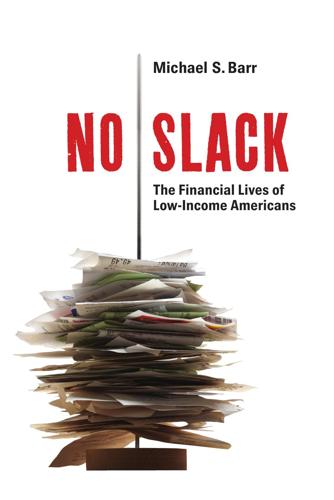
No Slack: The Financial Lives of Low-Income Americans
by
Michael S. Barr
Published 20 Mar 2012
Surveys show that less than one-fifth of investors (in stocks, bonds, funds, or other securities) can be considered financially literate (Alexander, Jones, and Nigro 1998), and similar findings describe the understanding shown by pension-plan participants (Schultz 1995). Indeed, even older beneficiaries often do not know what kind of pension they are set to receive or what mix of stocks and bonds are held in their retirement accounts (Lusardi, Mitchell, and Curto 2009). The amount of information people can and do attend to is limited. Moreover, cognitive load has been shown to affect performance in everyday tasks. To the extent that consumers find themselves in challenging situations that are unfamiliar, distracting, or tense, all of which consume cognitive resources, less focused attention will be available to process the information that is relevant to the decision at hand.

Engineering Security
by
Peter Gutmann
In order to cope with the situational awareness problem the pilot load-sheds, and the result of this process is written up by the board of inquiry as “pilot error”. Mind you, you can sometimes use the load-shedding phenomenon to your advantage. If you suspect that someone’s lying to you, you can increase their cognitive load to the point where they can no longer both maintain the lie and deal with the extra load. One way of doing this is to get them to narrate their story in reverse, which is awkward because it runs counter to the natural sequence of events and increases the chances that the liar will trip themselves up [112].
…
This explains why no-one has ever seriously deployed threshold scheme-based key safeguarding outside of a few specialised crypto hardware modules where this may be mandated by FIPS requirements [617] where they’re used to protect one-off, highvalue keys like CA root keys in complex, carefully-choreographed ceremonies (this is the actual technical term for the procedure [618][619][620]) and the odd designedpurely-for-geeks application. The cognitive load imposed by this type of mechanism is so high that it’s virtually impossible to render it practical for users, with even the highly simplified “insert tab A in slot B” mechanisms employed by some crypto hardware vendors (which usually merely XOR two key parts together to recover the original rather than using a full threshold scheme) reportedly taxing users to their limits, to the extent that they’re little-used in practice.
…
Because matches are approximate (for example in one technique users are required to indicate certain memorised regions in an image) they typically have to be iterated in order to achieve the required level of certainty that’s normally provided by a straight true/false password match. While this level of cognitive load may work (barely) for a single site there’s no way that it can scale effectively beyond that (luckily non-graphical user identification methods such as administering personality tests or the use of stylometry or writing style analysis, requiring that users write a short novel in order to log on, have only been suggested in jest [18]).

Algorithms to Live By: The Computer Science of Human Decisions
by
Brian Christian
and
Tom Griffiths
Published 4 Apr 2016
In such situations, computational kindness and conventional etiquette diverge. Politely withholding your preferences puts the computational problem of inferring them on the rest of the group. In contrast, politely asserting your preferences (“Personally, I’m inclined toward x. What do you think?”) helps shoulder the cognitive load of moving the group toward resolution. Alternatively, you can try to reduce, rather than maximize, the number of options that you give other people—say, offering a choice between two or three restaurants rather than ten. If each person in the group eliminates their least preferred option, that makes the task easier for everyone.
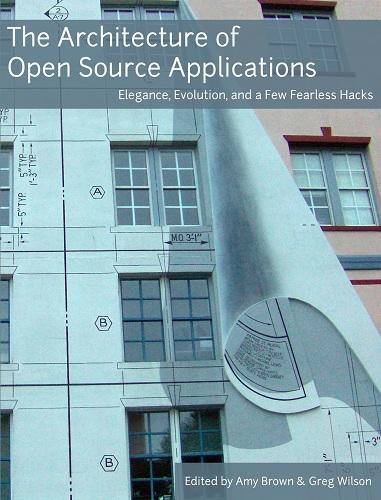
The Architecture of Open Source Applications
by
Amy Brown
and
Greg Wilson
Published 24 May 2011
Dealing with the Combinatorial Explosion One of the first things that is apparent from a moment's thought about the wide range of browsers and languages that WebDriver supports is that unless care is taken it would quickly face an escalating cost of maintenance. With X browsers and Y languages, it would be very easy to fall into the trap of maintaining X×Y implementations. Reducing the number of languages that WebDriver supports would be one way to reduce this cost, but we don't want to go down this route for two reasons. Firstly, there's a cognitive load to be paid when switching from one language to another, so it's advantageous to users of the framework to be able to write their tests in the same language that they do the majority of their development work in. Secondly, mixing several languages on a single project is something that teams may not be comfortable with, and corporate coding standards and requirements often seem to demand a technology monoculture (although, pleasingly, I think that this second point is becoming less true over time), therefore reducing the number of supported languages isn't an available option.
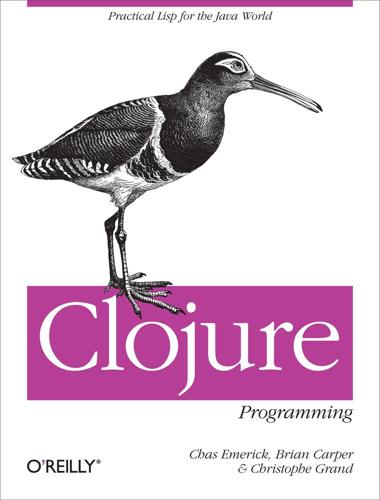
Clojure Programming
by
Chas Emerick
,
Brian Carper
and
Christophe Grand
Published 15 Aug 2011
We’ll see what this means in Homoiconicity, but the ramifications of it are manifold: homoiconicity enables the development and use of metaprogramming and domain-specific language constructs simply unavailable in any programming language that is not homoiconic. After getting through an initial period of unfamiliarity, you will very likely find that Clojure’s syntax reduces the cognitive load necessary to read and write code. Quick: is << (bit-shift left) in Java executed before or after & (bitwise and) in order of operations? Every time a programmer has to pause and think about this (or look it up in a manual), every time a programmer has to go back and add grouping parentheses “just in case,” a mental page fault has occurred.

The Impact of Early Life Trauma on Health and Disease
by
Lanius, Ruth A.; Vermetten, Eric; Pain, Clare
Published 11 Jan 2011
Indeed, several studies now point to interesting links between dissociation and attention performance, such that highly dissociative individuals (determined either by scores above the pathological cut point on a measure of dissociation or by diagnostic group) appear to perform better under divided attention [30,31] or greater cognitive load conditions [32], relative to other conditions. For example, DePrince and Freyd [30] reported that highly dissociative individuals exhibited more interference under standard selective attention demands and less interference under divided attention demands of a modified Stroop task relative to those with low dissociation, who showed the opposite pattern.
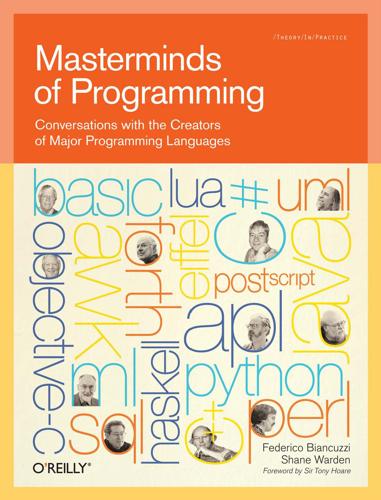
Masterminds of Programming: Conversations With the Creators of Major Programming Languages
by
Federico Biancuzzi
and
Shane Warden
Published 21 Mar 2009
You could see the false generalization right there in many programs; panicking users would backslash anything symbolic in a regex because they couldn’t remember which characters were actual metacharacters. In Perl 6, as we were refactoring the syntax of pattern matching we realized that the majority of the ASCII symbols were already metacharacters anyway, so we reserved all of the nonalphanumerics as metacharacters to simplify the cognitive load on the programmer. There’s no longer a list of metacharacters, and the syntax is much, much cleaner. One word that I use to describe Perl’s design is “syncretic.” You pick and choose good bits from other places and try to combine them in a coherent whole. How do you balance syncretism with the idea of generality of ideas and coherence between ideas and features?